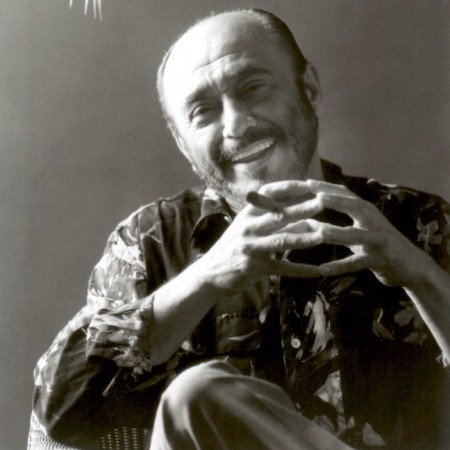
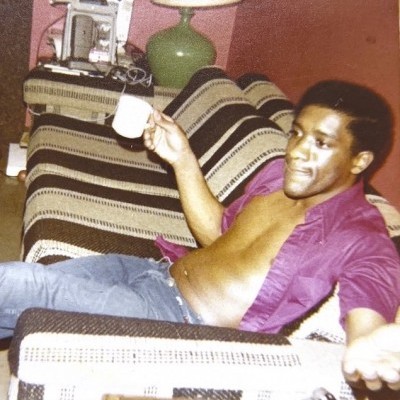
“One of the reasons that we appear to be not so popular with the so-called ‘jazz’ public is because they expect Miles to be doing something he did five, 10 years ago,” said drummer Al Foster. “This current band is going in another direction, and I think that it’s wrong to put the music down simply because it differs from yesterday. … My favorite musicians today are Miles, Sonny Rollins and Sly Stone. I love the variety available to us. You lose something when you restrict yourself.”
(Photo: DownBeat Archive)
“To see him is still an experience,” Andy Bey said of Jimmy Scott. “Life force. Still blues-based, still a lot of soul.”
(Photo: Steven Sussman)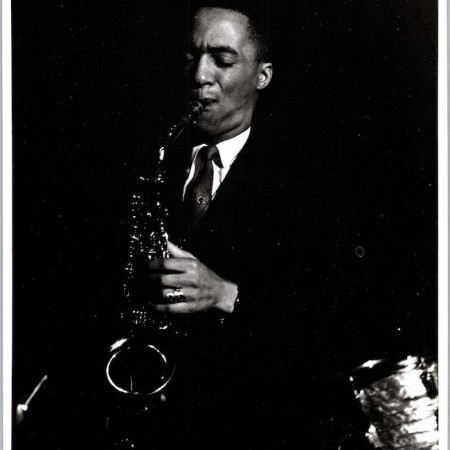
“I heard Lou Donaldson for the first time, and that down-home feeling of his was a gas,” said Bunky Green about one of his early influences.
(Photo: DownBeat Archive)
The cover image of DownBeat’s Sept. 7, 1978, issue, which featured in-depth coverage of President Jimmy Carter’s jazz picnic party on the White House’s South Lawn. The historic gathering honored and was honored by a history of jazz that embraced everything from ragtime through the avant garde.
(Photo: DownBeat Archives)
“If you never suffered, you can’t play the blues,” says Lou Donaldson.
(Photo: Tomas Ovalle)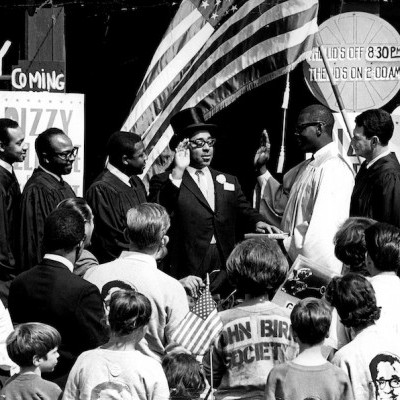
The candidate and his crew, from left, Kenny Barron, James Moody, Rudy Collins, Dizzy Gillespie, Chris White and Shelly Manne.
(Photo: Robert Skeetz)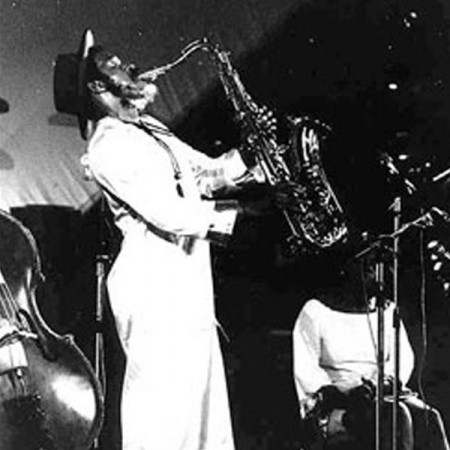
Albert Ayler
“The thing about New Orleans jazz,” Don broke in, “is the feeling it communicated that something was about to happen, and it was going to be good.”
“Yes,” Albert said, “and we’re trying to do for now what people like Louis Armstrong did at the beginning. Their music was a rejoicing. And it was beauty that was going to happen. As it was at the beginning, so will it be at the end.”
I asked the brothers how they would advise people to listen to their music.
“One way not to,” Don said, “is to focus on the notes and stuff like that. Instead, try to move your imagination toward the sound. It’s a matter of following the sound.”
“You have to relate sound to sound inside the music,” Albert said. “I mean you have to try to listen to everything together.”
“Follow the sound,” Don repeated, “the pitches, the colors. You have to watch them move.”
“This music is good for the mind,” Albert continued. “It frees the mind. If you just listen, you find out more about yourself.
“It’s really free, spiritual music, not just free music. And as for playing it, other musicians worry about what they’re playing. But we’re listening to each other. Many of the others are not playing together, and so they produce noise. It’s screaming, it’s neo-avant-garde music. But we are trying to rejuvenate that old New Orleans feeling that music can be played collectively and with free form. Each person finds his own form.
“Why,” I asked, “did bop seem too constricting to you?”
“For me,” Albert said, “it was like humming along with Mitch Miller. It was too simple. I’m an artist. I’ve lived more than I can express in bop terms. Why should I hold back the feeling of my life, of being raised in the ghetto of America? It’s a new truth now. And there have to be new ways of expressing that truth. And, as I said, I believe music can change people. When bop came, people acted differently than they had before. Our music should be able to remove frustration, to enable people to act more freely, to think more freely.
“You see, everyone is screaming ‘Freedom,’ but mentally, everyone is under a great strain. But now the truth is marching in, as it once marched back in New Orleans. And that truth is that there must be peace and joy on earth. Music really is the universal language, and that’s why it can be such a force. Words, after all, are only music.
“I’m encouraged about the music to come,” Albert said. “There are musicians all over the States who are ready to play free spiritual music. You’ve got to get ready for the truth, because it’s going to happen. And listen to Coltrane and Pharaoh Sanders. They’re playing free now. We need all the help we can get. That Ascension is beautiful! Consider Coltrane. There’s one of the older guys who was playing bebop but who can feel the spirit of what’s happening now. He’s trying to reach another peace level. This is a beautiful person, a highly spiritual brother. Imagine being able in one lifetime to move from the kind of peace he found in bebop to a new peace.” DB
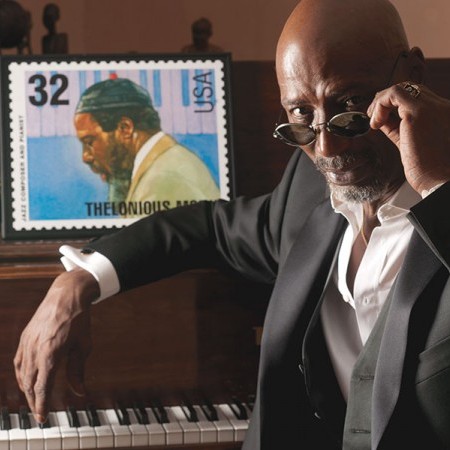
T.S. Monk at home
(Photo: Michael Weintrob)So what happened was the Japanese came up with a very, very good marketing philosophy. What they would do is when you had all these jazz musicians come in, when you got off the plane in Tokyo, they’d put a Seiko watch on your wrist. They’d put a Sony miniature TV in your hand. And they’d hang a Nikon camera around your neck. So, I go to the airport and here comes Thelonious and Dizzy and these cats. And Dizzy had this Nikon camera—this was a $1,000 camera in 1962–’63. Dizzy looked at me. I’m saying, “Hi, Dad. Hi, Dizzy.” Hi to everybody. He looks at me and says, “Monk, the kid like cameras?” He just took it off his neck and put it around my neck—a $1,000 camera. And I’ve been into photography ever since.
I WAS ALLOWED to run around like a little maniac and be a kid. I remember one night, I don’t even know where we were, but Art was there and Max was there and Sonny and a whole lot of cats. I think they might have come down to hear Thelonious. And I’m running around the room doing my little thing. And I remember Thelonious saying, “Hey, Coltrane.” And Coltrane said, “What, Monk?” And Thelonious said, “You see? That’s my son there. You know he’s automatically hip.” [laughs] Now, myself, I was embarrassed. I didn’t know what this was about. First of all, how am I automatically hip?
WHAT I REALIZED years later was the major self-esteem building that he was doing on me. I didn’t know it at the time because it seemed so off-the-wall. But he was telling me, “You are my son. And I’m very hip. And you are automatically hip because you are my son. And John Coltrane, dig him.”
DESPITE WHAT YOU MIGHT HAVE READ about his aloofness, Thelonious was probably the most accessible of all the giants in jazz that we have ever had. Thelonious insisted on our address and telephone number being in the phone book his entire life. He didn’t want no unlisted number. Of course he had me and my sister and my mother to answer the phone for him. So, he never had to deal with the telephone himself. But he was very, very regular in a lot of ways.
ONE OF THE REASONS that I believe I was able to garner support during the first years for the Monk Institute was that I had an actual personal relationship with those guys—with Clark Terry, with Jimmy Heath, with Max Roach, with Billy Taylor. I knew them personally, so I was able to go to them personally and say, “Hey, I’m going to start this organization called the Monk Institute of Jazz. Would you help me out?” I don’t think if Thelonious didn’t have me on his knee, hanging around all the time, I would have been able to do it, or it wouldn’t have been as easy, because I wouldn’t have those personal relationships. You know what was amazing? They all bought my father’s rap. I was automatically hip. [laughs] So, when I went to them, there was no resistance at all. They all said, “This is Monk’s son. He’s automatically hip. We’re ready to get down. We’re ready to go.” It made it a lot of fun.
AT 15, I WAS GETTING home from school, and I just broke down. I said, “Dad, I think I want to play the drums. I think I really want to play the drums.” And he said, “Oh, really?” And this is no lie. It was one of the few times I actually saw my father pick up the phone and call somebody. He said, “Art, look, Toot needs some drums.” Like three days later, I had a set of drums from Art Blakey. He put the phone down from Art. He picked up the phone again. And he dialed a number. He said, “Max Roach.” He always called him “Max Roach.” He never called him “Max.” He said, “Max Roach, you are the greatest drummer in the world, and the kid wants to play the drums. I’m sending him to your house.” [laughs] So, he sent me to Max. And then, he didn’t say one word. That’s at 15. At 19, I discover who he is, and he still hasn’t said a damned word to me about what I’m playing!
The next year, when I was 20, he just comes sauntering through the house and asks, “Are you ready to play?” And two days later, I was on the bandstand. I was in his band. It went just like that.
I JUST STARTED PLAYING with the band, but I’d known from observing him that he wouldn’t say anything. I never heard him say two good words about Charlie Rouse, either. So, I didn’t feel bad. Thelonious was from that generation that, you know, you were supposed to be playing all that hip stuff. There was something to say if you weren’t, but if you were, there really wasn’t anything to say because that’s what we do.
ONE NIGHT, we were playing at the Village Vanguard. The line was around the block. The show was packed. We hit it. Everybody went crazy, standing ovations. And during that performance I did something. I turned the beat around. Now, everybody knows that jazz is about recovery. It’s all about the recovery. If you recover correctly, then no mistake took place. So, I recovered my butt off, right? So, I’m feeling groovy. I’m standing in the kitchen. I’m signing autographs. I’m grinning.
And I felt this presence ease up on me. So, Thelonious eases up next to me and leans down, while I’m signing autographs, and he says, “Stop f’ing up the music, man.” I mean, for real. He didn’t say “f’ing”—it was the full monty. And I was stunned. The abject lesson was not that I made a mistake; the abject lesson was in accountability. Because, despite the applause, despite the accolades, I didn’t come up to the bandstand and say, “Hey guys, I’m sorry I jammed us up.” I acted like it never happened. I was completely awash in all this glorification.

At 25 years old, bassist Esperanza Spalding wasn’t overly concerned with marketability.
(Photo: Sandrine Lee/Montuno Productions)The next morning, Spalding is speechless—almost. “Anything I could say would not do justice,” she says when asked what it’s like to play with Tyner. But hardly ever at a loss for words, Spalding says that it wasn’t a case of intimidation the first time she played with him, but more self-consciousness and even a sense of insecurity. She recalls that the summer before the Yoshi’s gig was dreamed up, she and her longtime pianist Leo Genovese had gotten into a total Tyner-zone over the course of two month-long gigs.
“So, McCoy was already in the air,” she says. “We listened to hours and hours of his music—solo recordings, live albums, quartets. We’d be driving for six hours through Italy and taking about McCoy the whole way. So, when the Yoshi’s week came up, I knew all of his music, so I didn’t have to prep as much. But, as a bass player, I knew it was going to be difficult because McCoy plays the bass and the drums at the same time on the piano. At first, that was a challenge for me, figuring how I could offer him the most with my bass, but by the end of the week at Yoshi’s, I felt less idiotic. We were all totally engaged.”
Spalding has had a love affair with music since she was very young. She was home-schooled for a stretch after a childhood illness and dropped out of the conventional setting of high school to pursue music. She took her GED, enrolled in the music program at Portland State University and entered Berklee on a scholarship thanks to her bass prowess. She graduated a year early in 2005 at the age of 20, and with much fanfare was immediately hired to teach in the bass department there. (She’s since terminated her pact with Berklee, partly because she’s gotten so busy, partly because she had qualms with the classes the school administration wanted her to teach.)
By that time, she had established herself as a side player with such notables as Lee Konitz and Patti Austin, as well as a bandleader in her own right, which led to her recording a demo in April 2005 that was picked up by Ayva. A year later Junjo was issued in the States, at which time Spalding said, “My music has come so far from when we recorded it. It’s all been a trip. It seems like every six months my music evolves. As I meet different musicians in new circles, they influence me and change my sound.”
A nine-song collection of buoyant originals and sprightly covers, Junjo featured Cuban pianist Aruán Ortiz and Mela. In the liner notes, Spalding wrote: “You are my people, and I hope to make a dozen more CDs with you as we grow together musically and personally.” As it turned out, that dream proved to be wishful thinking. By the time it finally saw the light of day in the States, she laughed at the liners and said, “Already we’ve all become too busy. I’m glad we had the chance to take a picture, and I hope to take more. But they’re off and I’m on to other stuff, too.”
In 2007, Umbria creative director Carlo Pagnotta caught her at the Jazz Standard in New York playing in a trio comprising guitarists Romero Lubamba and Russell Malone. “I wanted to have her come to Umbria with them,” Pagnotta said, “but she insisted on bringing her own band.”
At the festival, Spalding proved to be a revelation to the audiences at the Oratorio Santa Cecilia, where she performed three days with her trio of Genovese on piano and Lynden Rochelle on drums. She was a sparkplug who danced with her bass as she scatted and sang through a mixed set of standards (a grooving “Autumn Leaves” and a funky, upbeat take on “Body And Soul”) and originals such as “Winter Sun,” a samba-tinged tune with a funk-rock beat that she retitled “Summer Sun” for the occasion.
As for the expansive range of her music, she said, “Everyone wonders, why did you go to jazz when you’re interested in so much else? For us young jazz musicians, it’s how we learn music. It’s like reading a sacred text in Greek. So, we study and learn more and more, but our hearts are into a mishmash of different sounds.”
At her Umbria performance, Spalding was as likely to explode into a patch of vocalese as to solo using her bass to sound like a horn. “I can’t help it,” she said afterwards. “I always try to tone down my dancing with the bass. I think, I must look like an idiot, but then I bust out and can’t control it.”
In regard to her Heads Up debut, Spalding upped the ante on her vocals and plowed deep grooves with her bass. It scored top of class, as far as selling the most CDs internationally for a new jazz artist in 2008.
After the popularity of Esperanza, Chamber Music Society is decidedly an album that’s coming in from left field. Inspired by the Chamber Music Society of Oregon (in which she played violin for 10 years), Spalding decided to create a modern image of a chamber group with string trio arrangements complementing her own originals that are infused with pop, folk and jazz. Genovese is on board, as well as drummer Terri Lyne Carrington.
Spalding credits her Barcelona-based management, Montuno Productions, with giving her free license to pursue her latest musical vision. “They were the first people to approach me when I was just starting,” she says. “They loved my music, and I’ve loved working with them. Sometimes I forget how blessed I am when I think of young artists whose managers are not really on their team. I told Montuno that I was making a decision that might not seem to make much business sense, but they’d just have to respect me.”
Spalding didn’t have a fully developed game plan for Chamber Music Society. It evolved slowly and came into focus with the help of Goldstein. “I wanted to work with Gil because of his enthusiasm,” she says. “This genius master was so into my music that he was willing to go into it and make it better.”
Spalding, says Goldstein with admiration, is “always reaching for something new every time she performs. She puts a face on every note. She’s become more refined as a player. She’s going deeper.”
Goldstein explains how he got involved in Spalding’s project: “It’s not luck or an accident. It’s more like I attract things that are suited to me. I have a distrust of things that are won through politics or positioning, and feel more blessed and in sync when things unfold in an organic way.”
Spalding showed Goldstein three Chamber Music Society pieces she had arranged. Goldstein attended a Spalding show with pianist Adam Goldberg, vocalist Gretchen Parlato and three string players. “It was an early presentation of her chamber music project,” he says. “But I didn’t know what I could bring to it to make it better. I wasn’t sold on the three strings and suggested that we bring in a couple of woodwinds. Espe immediately said no woodwinds. I said we may need some more colors in the music, so we decided to bring in extra singing voices. As it turned out, Espe sang in such a pure way that she sounds like a woodwind.”
While she’s received a lot of attention for her bass playing (she won this year’s DownBeat Critics Poll for Rising Star, Acoustic Bass), Spalding also has improved immensely as a singer, showcased on wordless and lyrical parts throughout Chamber Music Society. Early on, she was best known as a terrific bassist in motion to greater heights, but then she began to slip in vocal numbers among the instrumentals.
She’s been intent on that ever since, especially on Chamber Music Society.
Spalding downplays the notion that she’s doing anything new or special as a bassist who also sings. “I never thought about singing,” she says. “I didn’t really care, because it came easy to me. But in the last couple of years, I decided to cultivate that. But I didn’t know what I didn’t know. I was singing by ear and not worrying about how it sounded.”
Spalding’s first self-taught vocal exercise was singing Michael Brecker’s saxophone solo on “The Sorcerer” from his Directions In Music. She recorded herself and became dismayed when she played it back. “What I thought was happening was not really happening,” she says. “What I was hearing in my head—the timbres, the different sounds, the textures—was not happening. I had to learn how to get that, how to articulate and come to the understanding of the mechanism of the instrument like I have with the bass.” She began to listen to and study singers like Betty Carter, Abbey Lincoln and Nnenna Freelon to find out what was lacking in her own vocals.
Goldstein has seen the progress and goes so far as to say that Spalding is one of the best jazz singers on the scene today. “She’s a real jazz vocalist like Abbey or Betty,” he says, then adds, “not like an Ella or Sarah who were more populous. Espe is so versatile, running the gamut from great r&b to Stevie Wonder pop, and sings with the most personality. You hear half a note and you know it’s her.”
He’s also amazed at how she plays bass and sings. “I can’t think of another jazz singer who can sing the melody and comp with the bass notes for herself the way she does,” Goldstein says. “It’s singing the melody and anchoring the rhythm. The world could collapse around her, or she could be playing with the worst drummer, and she would still protect the rhythm like a soccer goalie.”
Parlato, a good friend who has appeared on Spalding’s last two albums (including their show-stopping duet on Antonio Carlos Jobim’s “Inutile Paisagem” on Chamber Music Society), says that Spalding’s singing has become “profound and versatile.” It helps, she says, that Spalding studied instrumental music first. “She’s singing at such an advanced level. She’s developed a very unique sound with her tone and texture that immediately hits you. It gives me goose bumps. She’s very precise, perfectly in tune and takes big risks. Her dynamics are so wide. She’s doing everything the right way. She’s causing a scene by just being herself as a total person.”
When reminded of her telling me three years ago that wonderful things happen as a byproduct of the natural evolution of a musician who’s in motion, Spalding says, “Yes, it’s all about the process. That’s getting reaffirmed over and over. The things I forget the quickest are the events. But what I don’t forget is being some place and grabbing a chunk of insight from another musician. It kicks my butt into a new direction.”
As for the future, Spalding, who splits time between Austin, Texas, and New York’s Greenwich Village, is already conceptually working on her next album, Radio Music Society, which she initially described as a funk, hip-hop, rock excursion. That’s all changed now, as she’s been on the road experimenting with the tunes she’s written so far. “It’s about putting elements of our own music onto the radio,” she explains. “It’s about playing songs that should be on the radio but haven’t been meddled with for the sake of getting on the radio. We’ve been doing some of these songs live and people are freaking out. They love them.” Knowing Spalding, their shapes are bound to change even more when she and her band hit the studio in November.
The final question of our interview gives Spalding pause. She’s a fluid talker, who moves from topic to topic with gleeful ease. But when asked to describe herself in six words, she stops in her tracks. The wheels are turning, but after long thought, she settles on her phrase. It’s not perfect, she says, but it’ll do: “Striving to achieve full human potential.”
It’s an excellent summation of what lies ahead—steady and grooving and determined as she goes. DB
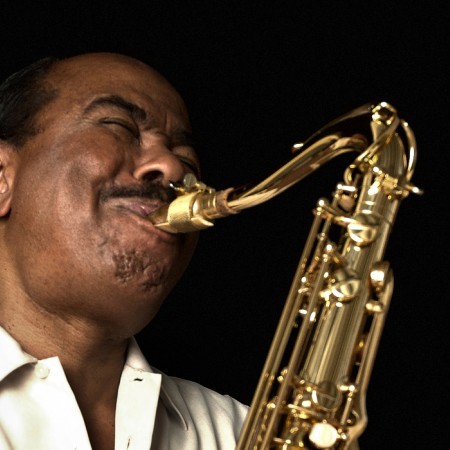
In addition to making significant contributions to the jazz canon’s batch of standards, saxophonist Benny Golson appeared in a pair of films and was photographed in “A Great Day In Harlem.”
(Photo: Oliver Rossberg)Jazz was a young music when Golson stood on that Harlem doorstep sometime in July or August 1958. (The precise date has been lost.) Ornette Coleman and Cecil Taylor were barely on the radar. The first jazz record was only 41 years old, about the same span of time that separates us from the death of John Coltrane today.
Few jazz musicians of importance had marked a 60th birthday yet, not even Louis Armstrong. The two oldest players in the Esquire photo were Zutty Singleton, 60, and Sonny Greer, 62. Old age in jazz was still uncharted territory in 1958. No one yet knew what a 65-, 70- or 80-year-old trumpet or saxophone player might sound like. Bunk Johnson, perhaps?
“The mind doesn’t change,” Golson observed with some experience in the matter of age. “Only the body. Sometimes the mind makes appointments the body can’t keep. Arthritis, feeling tired, things like that. When you’re young, you’re always ready to go. But the thinking doesn’t change. In fact, if one has talent, it’s like good wine. You add things to it. It gets better. You renew yourself. You take the older things, push them to one side and make room for the newer. Creativity never retires, unless you give up. I wake up every morning at this age and intuitively think, ‘What can I do better today than I did yesterday? What can I discover today? What things are awaiting my discovery?’ Enough is never enough. You want to get from here to there, then you get there and you want to go somewhere else.”
Golson’s uncle was a bartender at Minton’s Playhouse in Harlem. One of Golson’s earliest memories is being taken to the now-legendary site of the earliest bop jam sessions and seeing the house band with Thelonious Monk, Joe Guy and Kenny Clarke. “I was 11 and didn’t know what the heck it was all about,” he admitted. “But Sugar Ray Robinson was there and my uncle introduced me to him.”
A conversation with Golson doesn’t go long before the subject of another of his childhood associations—John Coltrane—comes up. The two knew each other as boys in Philadelphia, and in some ways, Golson seems to measure himself against Coltrane, even though they took vastly different paths. Perhaps it’s because they started at the same time and in the same place.
“Look at my friend John Coltrane,” he said. “He was great, but he wanted to go farther. I haven’t gotten there yet. Where is there? Wherever it is, we want to get there as soon as we can.”
Where they began as adolescents, though, was the height of the swing era in 1940. Golson was 12, Coltrane 14. When they turned on the radio, they heard anyone from Jan Savitt to Count Basie playing live music. “You know who my favorite band was then?” Golson asked rhetorically. “Glenn Miller. And I loved [tenor saxophonist and singer] Tex Beneke with that Southern drawl he would sing. I loved that. ‘Moonlight Serenade’ and the movies, Sun Valley Serenade and Orchestra Wives.”
Golson might have loved Miller and Beneke, but he didn’t imitate them. His epiphany came at 14 in the Earle Theater. “It was the first time I ever saw a band live,” he said, “and it was Lionel Hampton. When the curtain opened I was bedazzled. The bright lights were shining on these gold instruments. The music was like a hand reaching out and grabbing me. Then Arnett Cobb stepped out from the reed section to the edge of the stage, and, lo and behold, a mike came up from the stage floor. When he started to play, the piano paled. I wanted a sax. We were just getting off of welfare, but I thought I could get one at a pawn shop. One day [my mom] brought a brand new one home, and wow. That’s when it all started.
“I was listening to records,” he continued. “Coltrane and I were doing the same thing. There were no school jazz programs. Then right in the middle of all this, along come Dizzy Gillespie and Charlie Parker. Coltrane and I are trying to learn the traditional stuff, and not very good at it. Then this new stuff comes out. So, we’re trying to pick up on this new music before we’ve learned the old stuff. We had a kind of oath of determination to try to imbibe this music and make it part of our psyche.”
Golson and Coltrane were like two peas in a pod then. Golson listened to Coleman Hawkins and Ben Webster. Coltrane played alto and loved Johnny Hodges. “But he was always a little ahead of the rest of us,” Golson said. “When we got to where he was, he was always somewhere else. He had a penchant for that—to always reach. But his reach never exceeded his grasp. He always got to it.”
Was it a place Golson might have followed? “Truthfully,” he said, “I wouldn’t have known what I was doing. He was somewhere else then, and I was not in that place.”
Does Golson believe that Coltrane is being remembered for the right reasons today? He asked what I meant. Is it his music, I explained, or the quasi-religious and mystical dimensions of his persona that surfaced on A Love Supreme? What other musician, after all, defined his music in such overtly spiritual terms that it produced a San Francisco church in his name? (Golson himself crafted an impressive orchestration of A Love Supreme in the ’90s.)
“I don’t think [he] would have been a part of that,” Golson said. “I’m sure he would have shivered at that prospect of a Coltrane church. He was really not religious when I knew him. Whatever happened in his search happened later when we were no longer together. He was like Picasso, in that he went through many periods; many styles. He was always changing and evolving into something, searching.”
Perhaps because Golson was once such a close witness to Coltrane’s processes, he respects his outcomes even if he cannot entirely embrace them. Coltrane may have ended in the tangle of the free-jazz movement, but Golson had seen him master so much.
He’s decidedly less sympathetic to others associated with the music, though. He won’t mention any names, lest he might harm a fellow musician. Yet he makes no secret of his views on the larger free-jazz musicology.
“Bogus,” he said. “Completely and without any doubt. The lie cannot live forever.”
Many years ago, Golson said he approached a prominent young apostle of the new music. His mind was open and he was eager to understand its value.
“[This man] told me himself it was bogus,” Golson recalled, “though without knowing it. Do you know about bass and treble clefs? The clefs are there only for convenience. You would have too many lines without the clefs. But they have nothing to do with concepts. I asked how he arrived at what he’s doing. He said he played in the ‘tenor clef.’ It was ridiculous. There is no such thing.
“He was a clever man. He took what he didn’t know, and made it into something that seemed unique. He said that he played off the melody, not chords. This was his system, to which he gave a fancy name. What do you think Sam and Cephus said in the cotton fields when they were buck dancing and strumming the banjo? ‘Sam, I think that was a G7 in bar 10?’ Of course not. They played off of the melody. It was intuitive. What do you think professional musicians do today when they don’t know the song a singer is doing in some strange key? They play off the melody. It’s nothing new.
“Then one day I picked up the International Herald Tribune and read a story proclaiming this man a jazz genius who has come up with a new system. He plays off the melody.”
Golson rolled his eyes and slapped the table. “How can people be duped? Free jazz was a way out for a lot of musicians who couldn’t play the changes of ‘All The Things You Are.’ It opened the door to fakery.
“Not that it was invalid,” he added. “There were guys who could play both—like John. That’s why Coltrane was a great musician. He mastered it all. Whether you like where he ended up or not, he’s entitled to our respect.”
Golson presently is completing a book targeted to college and university jazz curriculums, which he hopes to publish later this year. Among the chapters, “The Bogus Genius.”
Golson’s genius is far less controversial. It lives in the easy warmth and fluency of his tenor lines, but his immortality might reside in a catalog of compositions that have taken root as major jazz standards, now with a life of their own.
Although he had recorded about a dozen sessions between 1950 and 1955, it was as a composer that he made his first serious impact when Coltrane brought Golson’s “Stablemates” to Miles Davis in November 1955. The Davis Quintet (and shortly after Coltrane with Paul Chambers) recorded it for Prestige, thus cementing it into the canon of modern jazz titles. Since then, it has been recorded 114 times by Golson and others. Other Golson standards include “Along Came Betty” (78 times), “Killer Joe” (94 times), “Whisper Not” (189 times) and, most famously, “I Remember Clifford,” with 282 recorded versions, according to Tom Lord’s Jazz Discography.
What kind of royalties come from such a songbook? “It varies according to how many plays I get,” he said. “How many recordings, how many performances. BMI keeps track of that. Sometimes it’s close to half a million in royalties. Sometime it’s $200,000. It might not be anything.”
He continues to play those songs today, because he knows his audiences want to hear them. “As much as I play them,” he said, “I try to make something fresh out of them every time. I don’t have any set solo routines. And when I play ‘Clifford,’ it’s a reflective mood for me because I remember all those times we were together. They were the songs that gave me my reputation. I owe them my best, because of what they’ve done for me. No, I don’t mind playing them, any more than I mind signing autographs. It’s a privilege.”
Composing them came with no guarantees, though. “You can’t get up and say, ‘I think I’ll write a hit today,’” he said. “You have to wait and see what the reaction is from the people who pay to see you. When I wrote those tunes, ‘Stablemates’ and ‘I Remember Cifford,’ I had no idea what would happen to them. My wife told me that ‘Killer Joe’ was too monotonous. You never know.
“What gives a composition validity is the knowledge of the person writing it, the experience he can draw on,” Golson continued. “But when you get to the meat of it, it’s in the intervals, what follows what. That’s what a melody is. When I write my songs, I’m conscious of intervals. Art Farmer was conscious of intervals. That’s why he played so beautifully. You get the right intervals in place and you’ve got something that will live past your time—Duke, Coltrane, Bill Evans, Claude Thornhill.”
As a composer, Golson has occasionally served as his own lyricist on songs such as “From Dream To Dream” and “If Time Only Had A Heart”—mainly to deny the opportunity to others. “You have no idea how many sets of lyrics I’ve gotten to ‘Along Came Betty,’” he complained. “I get some every year. Once, a person had the audacity to write a lyric to ‘Whisper Not’ and record it. Legally, I had to get them to take it off the market. I guess they think they’re doing you an honor, when they put words to your songs, and you should be happy about it. But I have to say, ‘I’m sorry.’ I have never approved any of the attempts.”
Not quite never. Leonard Feather added an approved lyric to “Whisper Not,” which Al Jarreau sings on the new Jazztet CD. And Quincy Jones penned the “Killer Joe” lyric. But generally, Golson remains protective of his songs’ integrity. Not even a Jon Hendricks lyric to “Stablemates” made the cut. “I told him, ‘Jon, don’t do that anymore,’” he said. “That’s not the kind of tune for a lyric. Nobody can put a lyric to a tune of mine legally without permission. I usually hate those attempts to take a jazz tune and put a lyric to it. Worse is putting words to improvisations. It’s not my cup of tea.” DB

Tomasz Stańko
(Photo: Andrzej Tyszko)Wasilewski sat between his partners at a conference table in a meeting room in ECM’s Midtown Manhattan offices. Wasilewski and Kurkiewicz were 5 when the shipyard workers of Gdansk began the nationwide strike that would lead to the development of Solidarity, the first independent labor union to exist in the Eastern Bloc. When the Berlin Wall came down, they were 14.
“What happened in Poland in the ’60s did not influence us much,” said Miskiewicz, two years their junior.
“At the same time, our generation had to respect older musicians,” Wasilewski said. “Then in the ’90s, it became a DJ’s world, and it’s now popular to sample and mix music from Polish jazz from the ’60s. This generation realized that the ’60s were important.”
In February 1995, one year after they joined Stańko, before any of them had reached 20, the Simple Acoustic Trio recorded Komeda (Gowi), a mature recital of eight Komeda tracks. Compared to now, Wasilewski’s lines have more notes, the dialogue is more florid and the transitions are less sophisticated, but the group is recognizable. In contrast to the prevailing European ethos of eschewing blues and swing toward the end of constructing an individual tonal identity from local vernaculars, these musicians followed Stanko’s example on Komeda’s Astigmatic, engaging and responding to the building blocks of American post-bop modern jazz—McCoy Tyner, Herbie Hancock, Jarrett — on its own terms.
“It seemed like an obvious thing to do,” Wasilewski said of the repertoire. “We were listening to Komeda’ s quintet recording with Tomasz. He was in the air.”
“It was easy to play, easy to improvise,” Miskiewicz said. “After we made the recording, we started to be more interested in Komeda as a person, what his feelings might have been.”
“He was a window to explore the Polish roots we could be influenced by,” Kurkiewicz said. “But there was a big jazz scene, opposite to the system, and jazz was a synonym of freedom. It was common for jazz to be put into the movies — it wasn’t just Komeda.”
“Komeda wasn’t a virtuoso player, but it doesn’t matter,” Wasilewski said. “Thelonious Monk as well was not so technically great. But at the same time, Monk is one of the most important composers in jazz history. With Komeda it’s the same, but unfortunately he had an accident and died earlier than he should.”
Born in Koszalin, a city on the Baltic Sea, Wasilewski and Kurkiewicz met as 14-year-olds at a music academy in Katowice. “We were focusing on playing jazz, learning jazz every summer with Polish and also American teachers from Berklee College of Music.” At a workshop in 1993, they met Miskiewicz, then 16, and joined forces.
“We want to connect the European and American ways of playing—it doesn’t matter what either one means,” Wasilewski said.
It did seem to matter.
“Rubato tempo playing,” Wasilewski elaborated. “More influence from classical music. More influenced from different folk music — Bulgarian, Romanian, French and Norwegian. Polish, too, though we don’t like it; it’s not so inspiring. Hungarian is more entertaining, stranger, more attractive for us than for Hungarian people. Jazz for me is folk music.”
“We respect the traditional way of playing, and we respect the soul of it,” Miskiewicz said.
“From the beginning we did a lot of jazz and blues form, and it was our best form,” Wasilewski said. “Next we would like to work on developing forms.” He mentioned his admiration for outcats Alexander von Schlippenbach and Peter Brötzmann, with whom Stańko had played in the Globe Unity Orchestra.
“They use not only playing ability,” Kurkiewicz added. “They use the soul, the ghosts, the spirits.”
It seems that always, the whole history of art, people think that if you are old, art is over,” Stańko said. “In our time, everything was more rich, more intense. I try to be like Miles, a little under, a little downstairs, and see what’s really going on.”
Today’s musicians don’t face official censorship, as Stańko did during his youth in Poland. Perhaps the stakes were higher then.
“My generation don’t care about money like these young people now,” the trumpeter said. “But this is not important. The important thing is music. For this reason, I rely on musicians I play with to give me power. Billy Harper give me power. He was fresh in this band, playing free.”
Reflecting on the Komeda compositions that had inspired Harper the night before, Stańko reflected on the Polish cultural streams that inflect his and Komeda’s musical production. “We have a predisposition for anarchy, but also for lyricism, and that is in my music,” he said. “Maybe our weather, the same weather like today, a melancholic mood, a little depression coming from melancholic, but also an ‘agghhh’ coming from drinking too much.”
Drinking perhaps, but then there are the existential realities for Poles who lived first under German and then Soviet occupation. “My father had a quarter Jewish blood,” Stańko said. “In wartime, he was working in the administration of a Polish city. The Resistance was active, and the S.S. was taking people from the streets, and they make a line and every 10th person they shoot. Father had fast reflexes. He spoke German, and he started to speak to the Germans that he work in the city in this administration, and he’s musician. Then they said, ‘Go away.’ I don’t think he thought himself Jewish. I don’t, either, although I am happy that I have this blood. I also don’t feel much Polish. I feel international. I feel human.” DB
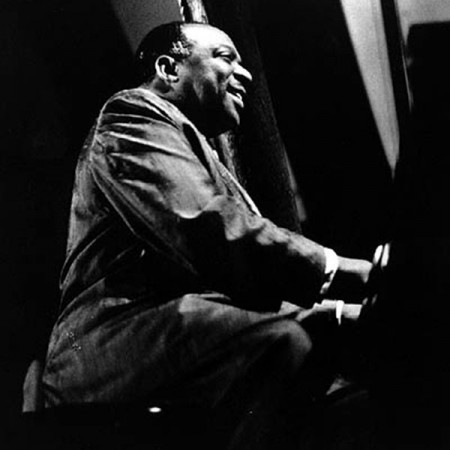
Count Basie (1904–1984)
(Photo: DownBeat Archives)Basie: Oh, Lord, that was so. Yeah.
Teagarden: Have you seen Louis lately?
Basie: No, I haven’t seen Pops in a long time.
Teagarden: I miss him by hours sometimes.
Basie: We’re either ahead of him—or behind him, which is the wrong way to be, behind him, you know. But we worked seven, eight days down in the place in Washington together. Boy, that was great. That was the greatest thing I ever did. Man, we just play eight bars of that theme and nothing is going to happen in the next three minutes.
Teagarden: That’s right. Nothing but applause.
DownBeat: Count, why did you keep a big band going, when it became increasingly difficult to keep bands going?
Basie: ’Cause I was simple. There’s nothing else I could do. I can’t play in a small group because you have to play too much. And, then, I guess I’m simple—I just like that sound, that’s all. Excuse me, gentlemen.
[Teagarden and Basie leave to go on stage for finale; 10 minutes later, they return.]
DownBeat: Count, you’ve had a band since the middle ’30s. When you came up within the so-called big-band era, people were dancing, right?
Basie: Absolutely.
DownBeat: Was business good then?
Basie: Well, that was the dance era.
DownBeat: Now, today, there are just a handful of big bands—two of the best being yours and Maynard’s. How does today differ from the ’30s, as far as people dancing? Do people come to hear the band more than they come to dance? Do you play more concerts than you do dances? Just how is it different?
Basie: I think we play more concerts. I know we do, and we get to play a few dances, mostly at the universities, colleges, and things. But as far as our dance career is concerned, it’s been kind of beat. But for the last year or so, it seems as though it’s picking up a bit. That’s mainly due, I guess, to the wonderful work the disc jockeys have been doing on instrumentals throughout the country.
DownBeat: Can you call your band a jazz band and be a dance band at the same time?
Basie: I think you can.
DownBeat: Why?
Basie: I don’t know, but I think you can.
Ferguson: Basie’s band always sounds like a jazz band to me—if I may insert that—and I know what Basie’s doing when he plays an arrangement for dancing and when he chooses certain numbers when he’s on the concert stage. At times, he will play numbers for dancing that he wouldn’t play on the concert stage. But many of them overlap. It’s not like the old saying: “He has two separate books.” I don’t know if anyone ever really had two separate books—I think that was just a phrase.
DownBeat: Maynard, do you play more concerts than dances?
Ferguson: Yes, I would say so, if we are to include jazz clubs as concerts.
DownBeat: When both of you play dances, are some of the kids hard to get on the floor? In other words, Count, do you have to play different now than you did in the ’30s to get people dancing?
Basie: If we’re playing a dance, we find that slower melodies fill the dance floor. It’s still more of a listening audience that we have, especially if we have the teenagers, but if we do have the older people, naturally they’re not going to dance so much, because their dancing has become cut in half, too—unless you play a little slower so they can get together and reminisce a little.
DownBeat: In the ’30s ...
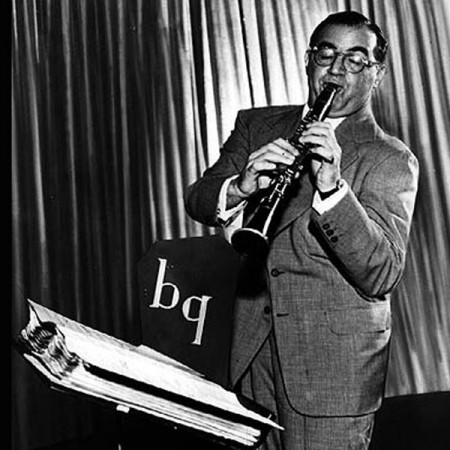
Benny Goodman
(Photo: DownBeat Archives)His general attitude to my queries was one of polite tolerance. He was rather guarded, evincing a sort of quiet, offhanded amusement that I should concern myself with such things. I felt that he considered any discussion of the music business—with me, at any rate—something to be avoided at all costs. But he stated definitely that he considers any discussion of his fellow musicians somewhat unethical. (Come to think of it, I never have heard him really put down anyone behind his back, except in the mildest possible way.) Not all his fellow musicians share this reticence, however.
“In 1935, I was in the front row at the Texas Centennial to hear the band,” Jimmy Giuffre said. “Harry James was in it, Teddy Wilson and Lionel Hampton. I was in high school at the time, and this occasion was one of the most important influences in starting me on my musical career. At that time, I could do nothing but admire Benny’s playing—the great drive and projection, the fluidity, strong technical fluency and feeling. He’s had more influence on more musicians that anyone else that I can think of. Practically all clarinetists have fallen in behind him. They followed his lead, and it was a good lead.
“He’s tried to open up his recent groups to new trends but usually winds up by going back to his old way of doing things. I wrote an arrangement for him once when he had that bop band with Buddy Greco. It was called “Pretty Butterfly,” but he never used it. Why didn’t he use it? Well, if you applied the word ‘why’ to Benny Goodman, you would be in trouble. He throws curves regularly to most people. As an older musician, I think he fears a new era in music that is leaving him behind, so he tries it all for size, and if it doesn’t happen to fit, he discards it and goes back to his old familiar style. What he’s doing now isn’t really interesting to me anymore because it’s the same approach he’s used for 30 years. Now it’s the expected; then it was an innovation. That band he had in 1935 hasn’t ever been topped—Benny really knows how to make a band swing—he had good guys, but it was his know-how that made the thing so great.
“But I can’t really blame Benny for not going any other route; he picks up the horn, and that’s the way he plays. Now, his playing of symphony music—the way it sounds is that instead of playing the music on a personal basis, he tries to be a legitimate clarinet player with a legitimate sound rather than being Benny Goodman. I feel that he assumes the classical player’s role, whereas he should still be himself, because if anyone has an identity, Benny Goodman has. I feel that jazz music has an identity which is difficult to define; it’s a dialect in the player, an accent. I don’t know if Benny is trying to prove something to himself by playing classical music in this legitimate style, but, to me, it just doesn’t come off. I don’t mean that it’s bad playing—he’s just not in his element, not himself.”
Benny’s long-time friend and great admirer, composer Morton Gould, takes a somewhat different viewpoint:
“It’s impossible to be objective about somebody you feel so strongly about. We would be less than human if we were machinelike in our appraisal. I think that Benny is a first-rate artist; I also feel that too often he is just taken for granted. To me, he has the qualities of a truly great artist—consistent musical integrity. He is very demanding of others, and of himself, and though at times he may be seemingly critical of another person, in my close, intimate contact with him, I have never heard him say anything derogatory, mean, or vicious about another person. He is violently super-critical of himself. Perhaps this is why he finds it so hard to find the right people to work with him.
“Benny, with all his worldwide success and acclaim, is actually a very shy person. He wants to be left alone. Basically, he’s a simple man, with no ostentation—very honest. He has none of the superficial ornamentation that sometimes goes with the public image of a famous personality. He always has his feet on the ground. The legend is that he is unapproachable. Well, basically, he is an introspective person, and, to me, it’s symbolic that a man who has lived though and been a part of so much jazz history as he has could have come away unscathed by the more lurid aspects of the business.
“To sum up my feelings about Benny the man, I feel that he is a very warm and compassionate human being, and I have a tremendous admiration for him. There still is a kind of vitality, virtuosity and imagination in his music. Maybe he’s not in vogue just now with the young set, but, nevertheless, his facility and command of the instrument are just as great as they ever were. All you have to do is listen to other clarinetists—and I mean beyond jazz—I mean that as a clarinetist, not as a jazz artist, he is a fabulous performer. I’ve heard him play and do things on the highest level of musical art.
“Why should a man like Benny Goodman be expected to become far out or be whatever is currently fashionable? All these developments in music are exciting. Popular music, by its very nature, has to change, but somehow one doesn’t expect an Elman or a Heifetz to change his style. I think it’s a little unfair to expect one generation to continually remake itself in the image of the generation that comes after it. It’s not in the cards.”
Pianist John Bunch, who was with Benny on the 1962 State Department tour of Russia and who also was in the group with which I played, seems to have insight into some of Benny’s other aspects. “Benny always seems happier with a small group, but really he’s the most complicated person I’ve ever met, as far as trying to explain him to anyone, or to myself,” John said. “I’m sort of proud that I’ve been able to get along with him so well, personally and musically. I have played seven tours with him. The first one was in 1957, and the more I think about it … wow! … the more I wonder how I’ve managed to stay on such good terms with him.
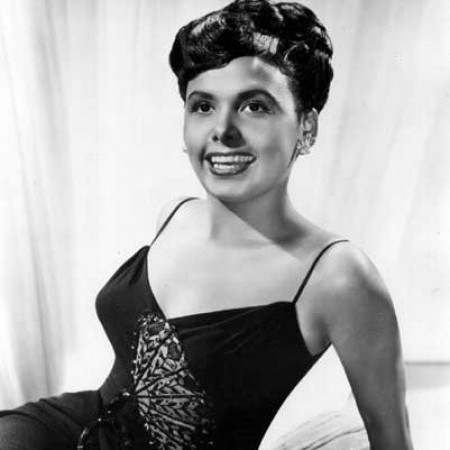
Lena Horne
(Photo: DownBeat Archives)After Lena had said goodbye to Daddy, while we proceeded downtown with her personal manager, Ralph Harris, the conversation took a more general turn. “Is the album with Duke and Ella out yet? That ought to be too much—what a marriage!” And, after we had all cast critical eyes on an Edsel that had passed, “We still have the same Jaguar we bought in Coventry, England, in 1950, and we’re still happy with it.” And, “When is Basie opening at Birdland—Thursday? Well, you know we’re going to be there!”
As the traffic slowed us almost to a standstill downtown, Lena’s fierce, darting eyes found stimulation in every passing stranger, every unexpected sight. … “Look at the guy standing on the corner there. You know he’s got to be Italian—the high shirt and those shoes. And you know, he’s very pretty!” A little later, as a bent, elderly man shuffled by, pushing a heavy hair dryer along the street, her face was suddenly downcast. “Look at that poor old man—isn’t that sad?” And when two orthodox Hebraic types with the traditional black hats and ear locks walked by: “Did you see those men? … Ooh, I just love New York!”
Just before we reached her destination, I asked Lena whether she felt her style had changed perceptibly. “Well, people are always saying, ‘Oh, you’ve changed your style,’ but I’d get bored to death if I thought I was a lot like I used to be five years ago. I still want to make sure that what I’m doing is what I want.”
“Now that you’ve settled down in Jamaica and have enough confidence in yourself as an actress,” I said, “do you think you might ever take a strictly dramatic part that didn’t call for any singing at all?”
“Not soon, I think. After all, people still know me essentially as a singer. But you know how I am—I didn’t think I was even capable of doing this job, and I always have to have Lennie hit me over the head about 12 times and say, ‘You can do it—go ahead and do it!’”
Lena got out of the cab, turned the uniquely vivacious freckled face and said goodbye. As her slender figure disappeared into the jewelry shop, she recalled a line from her autobiography. “I feel that my glamour days are rapidly disappearing,” she had said. The book was published in 1950. Today Lena has a graceful and beautiful grown-up daughter; a handsome son; a man in her life at once husband and “Daddy” and gentlest of teachers; and a place she can call home for her family in her native town.
If her glamour days are disappearing, there must be something disturbingly wrong with the vision of the audiences who pack the Imperial theater every night, for whatever the formula—perhaps a blend of maturity, security and the natural beauty that was hers all along—Lena Horne at 40 is the most glamorous sight in the city she has chosen to call home. DB
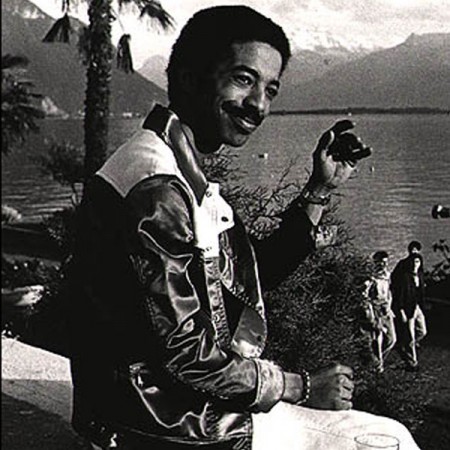
Tony Williams
(Photo: DownBeat Archives)DB: Were you thrilled to be part of the Miles band in the ’60s?
TW: Well, when you’re doing things it’s hard to say, “Oh gee, this is going to be real historical sometime.” I mean you don’t do that; you just go to the sessions, and 10 or 20 years later people are telling you that it was important. When you’re doing it, you can’t really feel that way.
DB: What is your relationship with Miles now?
TM: Very friendly. I saw him this summer. I haven’t heard the new albums, but when we played opposite him, I heard bits and pieces of the band, and Miles was sounding good. He’s been practicing. I liked Al Foster [Miles’ drummer] years ago, when I was with Miles.
DB: You’ve played with a lot of illustrious musicians. Being a drummer, you have to adapt to each one differently. Let’s talk about some of them, say, beginning with Sonny Rollins and McCoy Tyner.
TW: Sonny has a very loose attitude about things—the time, the whole situation. With McCoy I always felt like I was getting in his way, or that it never jelled. I felt inadequate. Actually, with both Sonny and McCoy, it’s like you’re playing this thing, and they’re going to be on top of it.
DB: How about John McLaughlin and Alan Holdsworth?
TW: Completely different. John is more rhythm oriented. He plays right with you, on the beat. He’ll play accents with you. Even while he’s soloing, he’ll drop back and play things that are in the rhythm. Alan is less help. With Alan it’s like he’s standing somewhere and he’s just playing, no matter what the rhythm is.
DB: Wynton Marsalis and Freddie Hubbard?
TW: Freddie plays the same kind of solo all the time. I get the feeling that if Freddie doesn’t get to a climax in his solos, and people really hear it, he gets disappointed. With Wynton it’s always different. I don’t know what he’s going to play. It’s always stimulating.
DB: I gather you think Wynton Marsalis’ manifesto about only playing jazz—and not funk or rock—is not that important?
TW: He thinks it’s an important attitude. That’s what counts.
DB: A lot of fans and critics still find a contradiction in your playing what they see as oversimplified rock as well as the kind of complex jazz you played with Miles and you play now with VSOP. What’s your reaction to that?
TW: Well, first of all, just because it’s jazz, doesn’t mean it’s going to be more complex. I’ve played with different people in jazz where it was just what you’d call very sweet music. No type of music, just because it’s a certain type of music, is all good. A lot of rock ’n’ roll is not happening. And a lot of so-called jazz and the people who play it are not happening. Complexity is not the attraction for me, anyway—it’s the feeling of the music, the feeling generated on the bandstand. So playing in a heavy rock situation can be as satisfying as anything else. If I’m playing just a backbeat with an electric bass and a guitar when it comes together, it’s really a great feeling.
DB: You were quoted in [an article in] Rolling Stone, praising the drummer in the Ramones. Were you serious?
TW: I don’t remember the occasion, but I do like that kind of drumming, like Keith Moon, any drumming where you have to hit the drum hard; that’s why I like rock ’n’ roll drumming.
DB: Sometimes so much of that music seems very insensitive.
TW: It depends on what you’re saying the Ramones are supposed to be sensitive to. Just because it’s jazz doesn’t mean it’s going to be sensitive. You’re trying to evoke a whole other type of feeling with the Ramones. When I drive through different cities and I look up in the Airport Hilton and I see the sign that says, “Tonight in the lounge, ‘live jazz’”—I mean, what the hell does that even mean? I’m not saying everybody’s like this, but I can see a tinge of people saying, “This is the only way it was in 1950, and we’re going to keep it that way, whether the music is vital or not, whether or not what we end up playing sounds filed with cobwebs.” When John Coltrane was alive, there were all kinds of people who put him down. But these same people will now raise his name as some sort of banner to wave in people’s faces to say, “How come you’re not like this?” These same people. That’s hypocrisy, and I find it very tedious.
DB: How important is technique?
TW: You’ve got to learn to play the instrument before you can have your own style. You have to practice. The rudiments are very important. Before I left home, I tried to play exactly like Max Roach, exactly like Art Blakey, exactly like Philly Joe Jones, and exactly like Roy Haynes. That’s the way to learn the instrument. A lot of people don’t do that. There are guys who have a drum set for two years and say they’ve got their own “style.”
DB: How can we prevent those kinds of guys from taking up more room than they deserve?
TW: [laughing] Well, we could pass a law.
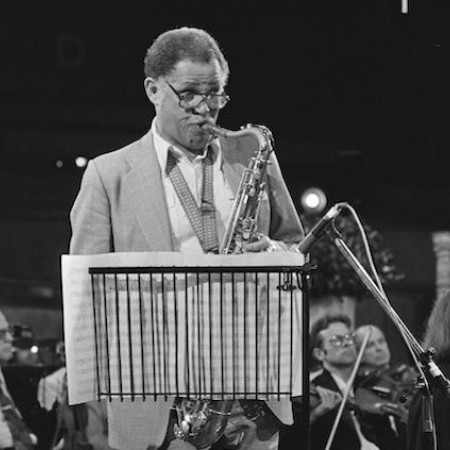
Dexter Gordon (1923–1990)
(Photo: Rob Bogaerts/National Archives of the Netherlands)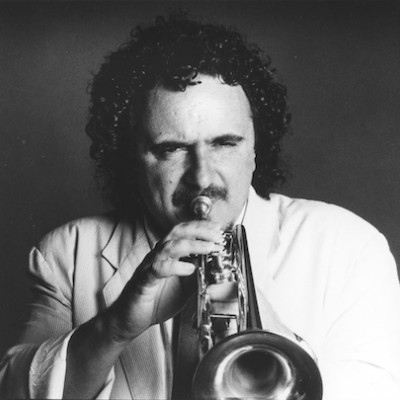
Claudio Roditi (1946–2020)
(Photo: David Gahr)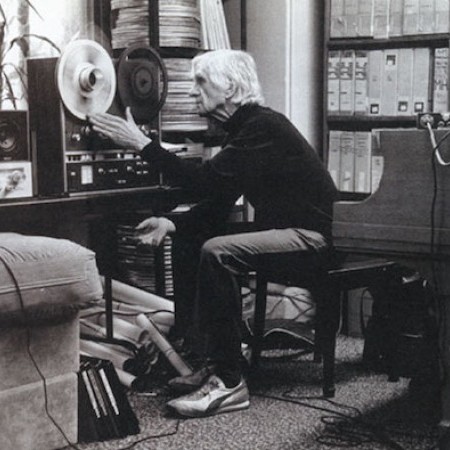
Gil Evans (1912–1988)
(Photo: Carol Friedman/gilevans.com)Gil led his own band in Stockton, California, from 1933 to 1938, playing accompaniment-rhythm piano and scoring a book of pop songs and some jazz tunes. When the band was taken over by Skinnay Ennis, Gil remained as arranger until 1941.
“I was also beginning to get an introduction to show music and the entertainment end of the business,” Evans recalls. “We used to play for acts on Sunday nights at Victor Hugo’s in Beverly Hills, and the chance to write for vaudeville routines gave me another look at the whole picture.”
Thornhill had also joined the Ennis arranging staff, and the two wrote for the Bob Hope radio show while the Ennis band was on the series. The radio assignments gave Evans more pragmatic experience in yet another medium.
“Even then,” Evans remembers, “Claude had a unique way with a dance band. He’d use the trombones, for example, with the woodwinds in a way that gave them a horn sound.”
In 1939, Claude decided to form his own band. Evans recommended the band for a summer job at Balboa, and he notes that Claude was then developing his sound, a sound based on the horns playing without vibrato except for specific places where Thornhill would indicate vibrato was to be used for expressive purposes.
“I think,” Gil adds, “he was the first among the pop or jazz bands to evolve that sound. Someone once said, by the way, that Claude was the only man who could play the piano without vibrato.
“Claude’s band,” continues Evans, “was always very popular with players. The Benny Goodman band style was beginning to pall and had gotten to be commercial. I haunted Claude until he hired me as an arranger in 1941. I enjoyed it all, as did the men.
“The sound of the band didn’t necessarily restrict the soloists,” Gil points out. “Most of his soloists had an individual style. The sound of the band may have calmed down the over-all mood, but that made everyone feel very relaxed.”
Evans went on to examine the Thornhill sound more specifically: “Even before Claude added French horns, the band began to sound like a French horn band. The trombones and trumpets began to take on that character, began to play in derby hats without a vibrato.
“Claude added the French horns in 1941. He had written an obbligato for them to a [Irving] Fazola solo to surprise Fats. Fazola got up to play; Claude signaled the French horns at the other end of the room to come up to the bandstand; and that was the first time Fazola knew they were to be added to the band.
“Claude was the first leader to use French horns as a functioning part of a dance band. That distant, haunting, no-vibrato sound came to be blended with the reed and brass sections in various combinations.
“When I first heard the Thornhill band,” Gil continued, “it sounded, with regard to the registers in which the sections played, a little like Glenn Miller, but it soon became evident that Claude’s use of no vibrato demanded that the registers be lowered. Actually, the natural range of the French horn helped cause the lowering of the registers. In addition, I was constantly experimenting with varying combinations and intensities of instruments that were in the same register.
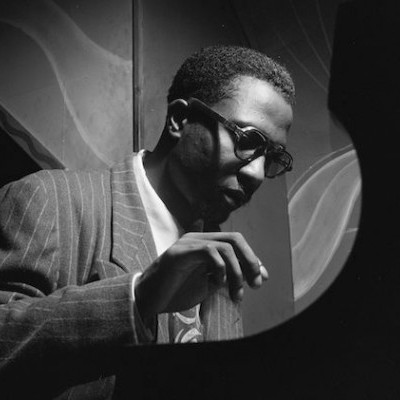
Thelonious Monk (1917-1982)
(Photo: William P. Gottlieb/Library Of Congress)Piano Focal Point
“If my own work had more importance than any others, it’s because the piano is the key instrument in music,” he continued. “I think all styles are built around piano developments. The piano lays the chord foundation and the rhythm foundation, too. Along with bass and piano, I was always at the spot, and could keep working on the music. The rest, like Diz and Charlie, came in only from time to time, at first.”
By the time we’d gotten that far, we had arrived at Minton’s, where Thelonious headed right for the piano. Roy Eldridge, Howard McGhee and Hill dropped around. McGhee, fascinated, got Thelonious to dream up some trumpet passages and then conned Thelonious into writing them down on some score sheets that happened to be in the club.
Hill Gives Credit
Hill began to talk. Looking at Thelonious, he said: “There, my good man, is the guy who deserves the most credit for starting bebop. Though he won’t admit it, I think he feels he got a bum break in not getting some of the glory that went to others. Rather than go out now and have people think he’s just an imitator, Thelonious is thinking up new things. I believe he hopes one day to come out with something as far ahead of bop as bop is ahead of the music that went before it.
“He’s so absorbed in his task, he’s become almost mysterious. Maybe he’s on the way to meet you. An idea comes to him. He begins to work on it. Mop! Two days go by and he’s still at it. He’s forgotten all about you and everything else but that idea.”
While he was at it, Teddy told me about Diz, who worked in his band following Eldridge. Right off, Gillespie showed up at rehearsal and began to play in an overcoat, hat and gloves. For a while, everyone was set against this wild maniac. Teddy nicknamed him Dizzy.
Dizzy Like a Fox
“But he was Dizzy like a fox. When I took my band to Europe, some of the guys threatened not to go if the frantic one went, too. But it developed that youthful Dizzy, with all his eccentricities and practical jokes, was the most stable man of the group. He had unusually clean habits and was able to save so much money that he encouraged the others to borrow from him, so that he’d have an income in case things got rough back in the states!” DB
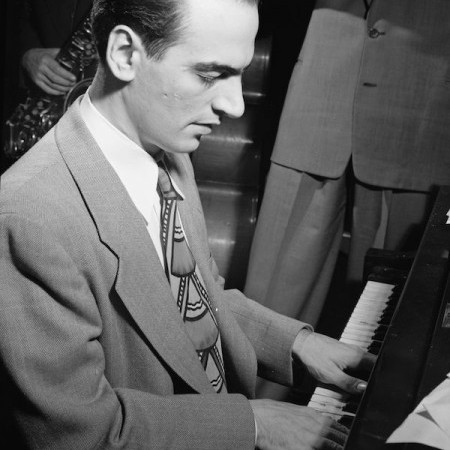
Lennie Tristano (1919-1978)
(Photo: William P. Gottlieb/Library Of Congress)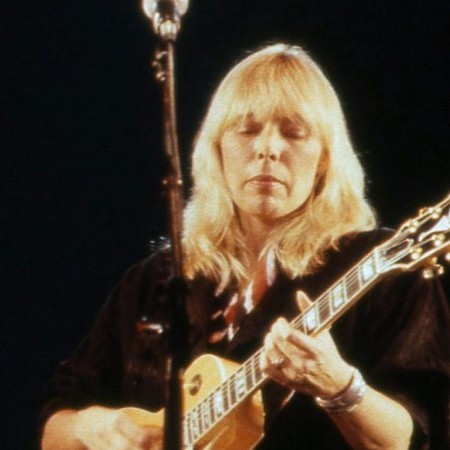
Joni Mitchell performs in 1983.
(Photo: Creative Commons Attribution 2.0 Generic)Anyway, by my doing this card, he introduced me to some jazz. Then I heard, at a party, Lambert, Hendricks & Ross, The Hottest New Sound In Jazz, which at that time was out of issue up in that part of the country, in Canada. So, I literally saved up and bought it at a bootleg price, and in a way, I’ve always considered that album to be my Beatles, because I learned every song off it. “Cloudburst” I couldn’t sing, because of some of the very fast scatting on it; but I still to this day know every song on that album. I don’t think there’s another album that I know every song on, including my own.
I loved that album, the spirit of it. And like I say, it came at a time when rock ’n’ roll was winding down, just before the Beatles came along and revitalized it. And during that ebb, that’s when folk music came into its full power.
What were the Miles Davis albums?
Sketches Of Spain. I must admit that it was much later that Miles really grabbed my attention ... and Nefertiti and In A Silent Way became my all-time favorite records in just any field of music. They were my private music; that was what I loved to put on and listen to—for many years now. Somehow or other, I kept that quite separate from my own music. I never thought of making that kind of music. I only thought of it as something sacred and unattainable. So, this year was very exciting to play with the players that I did.
You did let your hair down one time when you did “Twisted.”
Right—and “Centerpiece,” I also did that. One by one, I’ve been unearthing the songs from that Lambert, Hendricks & Ross album.
But there’s no seeming relationship between the two worlds ...
Which two worlds are you referring to?
The world of music you recorded and the jazzworld.
All the time that I’ve been a musician, I’ve always been a bit of an oddball. When I was considered a folk musician, people would always tell me that I was playing the wrong chords, traditionally speaking. When I fell into a circle of rock ’n’ roll musicians and began to look for a band, they told me I’d better get jazz musicians to play with me, because my rhythmic sense and my harmonic sense were more expansive. The voicings were broader; the songs were deceptively simple. And when a drummer wouldn’t notice where the feel changed or where the accent on the beat would change, and they would just march through it in the rock ’n’ roll tradition, I would be very disappointed and say, “Didn’t you notice there was a pressure point here” or “Here we change,” and they just would tell me, “Joni, you better start playing with jazz musicians.”
Then, when I began to play with studio jazz musicians, whose hearts were in jazz but who could play anything, they began to tell me that I wasn’t playing the root of the chord. So, all the way along, no matter who I played with, I seemed to be a bit of an oddball. I feel more natural in the company that I’m keeping now, because we talk more metaphorically about music. There’s less talk and more play.
You’ve been associating with jazz studio musicians for how long?
Four years. I made Court And Spark five albums ago.
Did that come about by design or by accident?
The songs were written and I was still looking for a band intact, rather than having to piece a band together myself. Prior to that album, I had done a few things with Tom Scott, mostly doubling of existing guitar lines. I wanted it to be a repetition or gilding of existing notes within my structure. So, through him, I was introduced to that band. I went down to hear them at the Baked Potato in Studio City and that’s how all that came about.
They all found it extremely difficult at first, hearing the music just played and sung by one person; it sounded very frail and delicate, and there were some very eggshelly early sessions where they were afraid they would squash it, whereas I had all the confidence in the world that if they played strongly, I would play more strongly.
So, from that point on, you worked with the L.A. Express?
We worked together for a couple of years, in the studio and on the road.
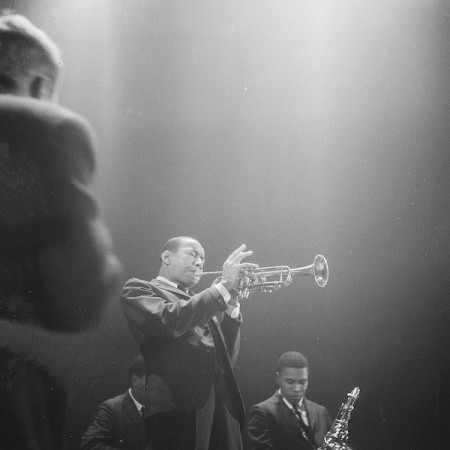
Trumpeter Lee Morgan (1938–’72) performs with the Jazz Messengers on Nov. 15, 1959, at the Concertgebouw in Amsterdam.
“If a guy comes into a record company and says, ‘Look, give me $1,000 for publicity for the Fifth Dimension’—it could be any of those rock groups—solid. You come in and ask for $200 to pay for two 30-second spots to advertise a jazz record, and they look at you like you’re crazy. They just don’t want to spend any money.
“It’s almost like a conspiracy. It would help them to advertise. Everybody could make money from the music, but everybody is happy to keep the level of AM daytime listening in a trash bag.”
The U.S. Information Agency makes propaganda specials, Morgan said, pointing out that last spring there was one featuring Nipsey Russell with Billy Eckstine, Joe Carroll, Etta Jones “and a guy from the Metropolitan Opera.” Morgan was on it, too, with a big band. “It’ll be shown all over the world to foster good relations with our government,” he said, but added, ruefully, “probably nobody here will ever see it.”
“Even superstars like Miles Davis and Duke Ellington don’t get the exposure of Leonard Bernstein and the New York Philharmonic,” he said. “Maybe this music of ours isn’t meant for the masses. But he’s held as a great conductor, and he lives in a penthouse, and he’s rich, and he conducts the New York Philharmonic in Lincoln Center. And Coltrane had to be playing in Slugs’. That’s the difference.
“See, Leonard Bernstein plays to a minority audience, too, because everybody can’t like symphony orchestras. But symphony orchestras are subsidized. And jazz should be subsidized. This is the only thing from America. The United States ain’t got nothing else but what we gave it, man. And that seems to be the reason it gets the short end of the stick of everything.”
Though angry about the mass media, Morgan is happy about the young people of today.
“Thanks to them,” he said, “music has gotten much better. And when I was a kid, white people had one way of dancing and we had another. Now, everybody dances the same. Rock and jazz—it’s all good music. Now, you go over to Europe, and you might be on a concert or a TV show opposite The Doors, and it would be very successful. The ones in charge in the United States don’t want to do this. Like I said before, jazz is still a thing that’s dominated by Blacks. At first, there was blues and rhythm-and-blues, and then the white man got a hold of it, and it was rock. Rock didn’t start in Liverpool with the Beatles. All that long hair and stuff came later. But most of the whites got the most money from it.”
Noting that the work of some successful rock groups has an intricacy comparable to jazz, Morgan observed that even with its new hipness, rock “is selling millions. So, I don’t want to hear that stuff about they can’t sell jazz, because the music’s gotten so now that rock guys are playing sitars and using hip forms, and Miles is using electric pianos. Music’s gotten close. There are no natural barriers. It’s all music. It’s either hip or it ain’t.” DB
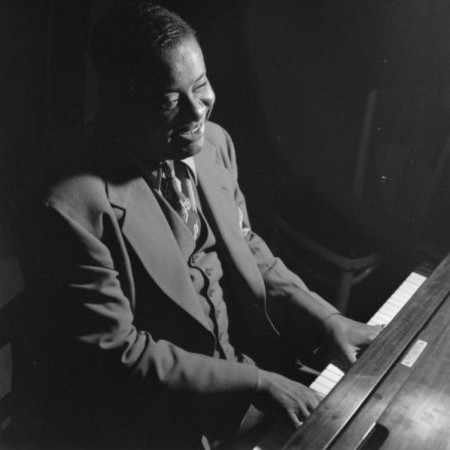
Art Tatum (1909–’56)
(Photo: William P. Gottlieb/Library Of Congress)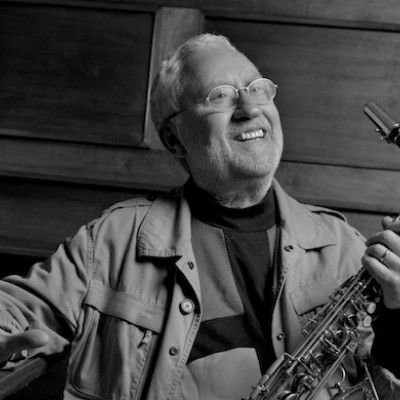
Lee Konitz (1927–2020)
(Photo: Jimmy Katz)“I enjoy making the singing feeling dictate the playing feeling, not the finger technique, which I tried to develop for many years, like most people,” Konitz said. “I’m a shy person to some extent, and I never had confidence to just yodel, as I refer to my scat singing. One day with Dan, I played a phrase and needed to clear my throat, so I finished the phrase, bi-doin-deedin-doden, or whatever, and then a few bars later Dan did something like that. So, I said, ‘Oh, good—I’m in now; I can do this.’ I don’t get up to the microphone. I don’t gesticulate. I just sit in a chair, and whenever I feel like it, at the beginning of a solo or in the middle or whenever, I warble a few syllables. I’ve been warbling ever since, and feel great about the whole process.”
As a teenager in Chicago, Konitz—then an acolyte of Swing Era altoists Johnny Hodges and Benny Carter—played lead alto and sang the blues at the South Side’s Pershing Ballroom in a black orchestra led by Harold Fox, the tailor for Jimmie Lunceford and Earl “Fatha” Hines. Seventy years later, he scatted with Douglas in England and with Bro in Scandinavia. Just three months earlier, he scatted several complete solos on the sessions that generated the new recording with Denson, following three albums on Enja with the collective trio Minsarah: Standards Live– At The Village Vanguard (2014), Lee Konitz New Quartet: Live At The Village Vanguard (2009) and Deep Lee (2007). Denson recalled that when he and his Minsarah partners, pianist Florian Weber and drummer Ziv Ravitz, first visited Konitz in Cologne, he immediately suggested they sing together.
“After several minutes, Lee said, ‘Sounds like a band,’” Denson recalled. “For years traveling on the bus, we’d sing and trade and improvise, but never on stage until last October, when we were touring California. We went to extended phrases, then to collective improvising. We decided to record it, so I booked a show at Yoshi’s in February, and went into the studio.
“His vocal solos are beautiful. Lee told me that over the years he’s worked to edit his playing to pure melody. If you listen to the young Lee, it’s virtuoso, total genius solos. Now, it’s still genius but a very different mode—all about finding these beautiful melodies. That sense of melody continues to capture me. So does Lee’s risk-taking, his desire not to plan some ‘hip’ line that he knows will work, but to take something from his surroundings, so that the music is pure and truly improvised in the moment.”
On June 9, 2011, during soundcheck for a concert with Tepfer’s trio and guitarist Kurt Rosenwinkel in Melbourne, Australia, Konitz suffered a subdural hematoma and was hospitalized for several weeks. “He made an unbelievably miraculous recovery, and when we started playing again something had changed,” said Tepfer, whose recorded encounters with Konitz include Duos With Lee (Sunnyside) and First Meeting: Live In London, Volume 1 (Whirlwind), a four-way meeting in 2010 with bassist Michael Janisch and drummer Jeff Williams. “When I first played with him, Lee was open to pretty out-there experimentation. I realized he was no longer interested in anything that resembled noise. He was very interested in harmony and playing together harmoniously. That’s a real shift in his priorities, and it took me a while to get used to it. But we’ve done a lot of touring in the last six months, and the playing together feels powerful. We’re playing standards and some of Lee’s lines, which are based on standard chord changes. Lee is entirely comfortable with any harmonic substitution or orchestration idea as long as it’s clear and musical and heartfelt. There is tremendous freedom in that restricting of parameters.”
On the phone from Aarhus, Denmark, after the second concert of his tour, Bro described the effect of Konitz’s instrumental voice. “I’ve listened to all his different eras, and it seems the things he’s describing with his sound are becoming stronger and stronger,” he said. “When he plays a line, a phrase, it sounds clearer than ever. It has a lot of weight. I don’t know any young players that have it. Lee moves me so much. He plays one note, and I’m like, ‘How the hell did he do that?’ The sounds become more than music, in a way.”
Douglas recalled a moment in England when Konitz played “Lover Man,” which he famously recorded with Stan Kenton in 1954. “It was a completely new conception, of course with a kinship to that great recording,” Douglas said. “But what struck me most is how much his melodic invention is wrapped up in his warm, malleable tone that at times seems unhinged from notions of intonation or any sort of school sense of what music is supposed to be. It has a liquid quality, like the notes are dripping off the staff. Everyone was stunned that he pulled this out in the middle of the set.”
What these younger musical partners describe is the antithesis of “cool jazz.” That’s a term that critics attached to Konitz for the absence of what he calls “schmaltz” and “emoting on the sleeve” in his improvisations with Tristano, the Birth Of The Cool sessions, Gerry Mulligan’s combos, and during his two years with Kenton, when he emerged as the only alto saxophonist of his generation to develop a tonal personality that fully addressed the innovations of Charlie Parker without mimicking his style.
“To me, Lee combines Lennie’s rigorous, almost intellectual manufacturing of the line, with a huge heart and a desire to communicate,” Tepfer said. “I clearly remember that what first struck me when I met him is that there was never any misunderstanding. If Lee doesn’t understand you, he’ll always ask you to repeat it. He often says, if you say something on the money, ‘You ain’t just beatin’ your gums up and down.’ What he stands for in music is very much that. I think there’s nothing worse to Lee than people saying things just to say things, or playing things just to play some notes. There always has to be meaning, and intent to communicate that meaning to other people. What I described about his current passion for playing harmonious music, playing together with no semblance of noise or discordance, I think comes from an even more intense desire to communicate as he’s getting older.
“There has to be a question of what improvisation is and why we would do it, and whether it’s a meaningful thing or not. I think of all the people in the world, Lee stands as a beacon of truth in improvisation. There aren’t many like him, where you listen and come away with, ‘OK, that’s why we do this.’”
Konitz allowed that playing with Tepfer, Brad Mehldau or with Frisell, “or whomever I’m playing with who’s really listening and pushing a little bit in some positive way,” makes him “less inhibited to open up.”
He was asked about overcoming that shyness when he came to New York in 1948, at 21, and plunged into direct engagement with the movers and shakers of late-20th century jazz vocabulary. “Lennie’s encouragement had a lot to do with the playing ability that I became more confident in,” Konitz said. “I was always so self-critical; it was sometimes pretty difficult. But I was sometimes able to play. Marijuana had something to do with it, I confess. But at a certain point, I stopped it completely. I appreciated that, because whatever I played, it was more meaningful to me, and I felt totally responsible for it.”
Sixty-seven years after arriving in New York, Konitz is finally a member of the DownBeat Hall of Fame. “It’s the ‘ain’t over until it’s over’ syndrome, and I deeply appreciate it,” he said. “I appreciate being around to say thank you. It’s romantic and poetic, and I’m accepting it on that level, and for being honored for trying to play through the years.”
Konitz keeps moving. He’s focused on his itinerary immediately after he turns 88 on Oct. 13. “I’ve got a lineup of tours coming up, all over the U.S. the last part of October; all over Europe, day by day, in November,” he said. “I’m pleased that I can do it.” DB

Sarah Vaughan (1924–1990)
(Photo: Nationaal Archief, The Hague)Treadwell decided something must be done to give her confidence. He invested all the money he had, about $8,000, in the building of a star. He arranged for nose-thinning plastic surgery on her face and the straightening of her teeth and sent her to a beauty salon to have her figure streamlined. He paid for special arrangements and elocution lessons, and personally selected and bought becoming clothes for her.
It worked. So transformed and elated was she that he gave her a nickname. That’s how she came be known as “Sassy.”
Yet, Vaughan today doesn’t like to talk about her first marriage. “I want to forget that,” she said. “I never want to think about that again.”
Asked directly whether she thinks Treadwell should be given credit for guiding her to stardom, she revealed her tendency to rely on things current.
“No, my second husband did that,” she said.
“All George ever did for me,” she maintained, “was really for himself. You know, nobody wants to print that, but it’s the truth, and I wish people would understand that.”
Vaughan’s second husband is C.B. Atkins, a Chicago businessman and taxicab company owner whom she married in the summer of 1958 after a whirlwind courtship.
The marriage was regarded in some quarters first with amusement and then with alarm. Few persons felt there could be anything serious between the imaginative artist and the shrewd, resolute businessman.
Shortly after the wedding, Atkins took control of the Vaughan organization, and the amused ones stopped laughing, and the alarmed ones grew more so. Within months, parasites, hangers-on, and even more legitimate acquaintances found that to get to the singer they had to get past Atkins first.
Not everyone disapproved, however. “Sarah needed somebody strong,” one associate says. “She needed somebody to do the hard, dirty work in this business. C.B. isn’t going to let anybody take advantage of her.”
Today, Atkins devotes most of his time to personal management. He manages Max Roach, the MIT + 3 and several younger singers. His chief client, of course, is his wife.
He, in turn, is the center of her universe. This is not surprising to those who know her. Basically, she is still a lonely woman, one who has to be in love.
Extremely defensive and sensitive offstage, Vaughan allows almost no one to penetrate the shell of polite disinterest into which she has withdrawn. Outside her immediate family, she has only one female friend.
Her reticence leaves reporters and other interviewers nonplussed. After talking to her for hours, they will come away shaking their heads, utterly bewildered. She, for her part, hates interviews. She consents to them only when Atkins insists.
“They always ask the same questions,” she complained. “Where was I born? When did I start singing? Who have I worked with?
“I don’t understand why they can’t just talk to me without all that question bit. I just freeze.”
And freeze she does. So cautious is she, so fearful of being misquoted or misunderstood, that natural responses are choked at the source. All that comes out is a rush of colorless, harmless, impotent words.
As a result, there is a widespread belief that she is a shallow woman, with no more to her than meets the eye. Nothing could be more inaccurate. When she is comfortable in a familiar environment, she emerges as a dynamic and powerful woman with a sharp sense of humor—and, at times, a sharp tongue.
Recently, she sat in a club with acquaintances, silently watching her husband send a stream of bills across the bar as he bought drinks for friends. A merrymaker said that, at this rate, the party could go on all night.
Freezing the grin from the woman’s face with a cold stare, Sarah snapped: “Not hardly. When the time comes for us to go, we’ll go. You can believe that, honey!”
Within the hour, she and her husband left the club.
Vaughan has developed her stony stare to perfection. When she uses it, however, it’s “because somebody is really dragging me,” she said. “Usually, it’s somebody who walks up to me and calls me Sarah. They don’t know me, and they should say Miss Vaughan, or Mrs. Atkins, or something. That’s what I would do. So, I just keep walking.”
The lighter side of Sarah Vaughan is something few people see, except when she feels particularly frisky onstage.
She is, in private life, a mimic and comedienne of no mean skill who can keep friends entertained for hours, recreating scenes and situations from her travels. These are situations she observed with poker face and apparent disinterest.
There is another myth about Vaughan that deserves exploding—the idea that she is a “natural” singer with little knowledge of music. It is an assumption made by people who don’t know about her years of piano studies.
While it is true that she was a professional singer before her first husband induced her to take voice lessons, she has, from the beginning, been equipped with an excellent knowledge of the mechanics of music. She credits much of it to training she received at Newark’s Arts High School.
“While I was playing piano in the school band,” she said, “I learned to take music apart and analyze the notes and put it back together again. By doing this, I learned to sing differently from all the other singers.”
That is probably the nearest thing to an analysis of her style as you are likely to get from her. Beyond this, she simply says that she sings songs a different way each time because she would get bored singing them the same way.

Stan Getz (1927–1991)
(Photo: Lee Tanner)The hipsters who come to dig jazz sit on long benches at rough-hewn tables, sipping heady Danish beer. The girls wear tight skirts, lowcut blouses, Brigitte Bardot hairdos, and no makeup. The men wear beards and sweaters and Caesarean haircuts and smoke pipes. They look terribly earnest and sit in frozen postures while the musicians are blowing. The dance floor remains polished from lack of use, and the boor who dares to tap a finger to the rhythm is caught in the crossfire of a dozen icy stares.
Owner Dyrup and his wife, Lotte, who is hostess, chef and waitress in the place, have in the last year been hosts to such assorted dignitaries as Buck Clayton, Gerry Mulligan, Helen Merrill, Art Farmer, Mose Allison, Kenny Clarke, Kid Ory, Bengt Hallberg, Jimmy Rushing, Art Blakey, and sidemen from the bands of Benny Goodman, Duke Ellington and Dizzy Gillespie. Gillespie himself tried to get in during a recent visit to Copenhagen, but gave up when he saw the waiting crowds.
The Montmartre also has a very good house band, the personnel of which has, at various times, included Don Byas, Oscar Pettiford, Benny Bailey, Joe Harris, Kenny Clarke and Dan Jordan, a young bassist from Detroit. The leader of this group is Stan Getz.
Why, of all the places where Getz might have chosen to live in Europe, did he choose Denmark—which is better known for its Tuborg beer, atom-splitter Niels Bohr and Hans Christian Anderson, than for jazz?
For one thing, there is the nature of the people: The Danes never seem to fail to enchant foreigners. The screwball style of humor of Victor Borge, which seems so unique to an American, is not uniquely Borge; it is uniquely Danish—and it is commonplace here. The Danes have a remarkable flair for living, and have no hesitation in giving in to their inner desires and yearnings. We all remain children at heart, but only the Danes have been willing to admit to it. Only they could have built a remarkable establishment such as the Tivoli, the charming amusement park for adults as well as children that seems to give physical being to the fairy tales.
Then there is the Hans Christian Anderson mermaid of bronze that sits on a rock in Copenhagen harbor. What other people would build a statue not to the poet but to the product of his imagination?
Then, too, Denmark is an inexpensive place to live. And there is virtually no poverty in the country. There are no slums, there is no hunger. On top of that, audiences here are remarkably receptive to jazzmen.
“More people like good music here,” Getz says flatly.
Finally, Getz has encountered a particularly sympathetic audience in Danish jazz critics, on whom it might be well to spend a few moments of consideration.
The Danish jazz critics have an amazing knowledge of what is going on both in Europe and (thanks largely to records) in America. If they have a fault, it is that they are analytical to the point of pedanticism. At times, their deadly seriousness becomes amusing.
Probably the most influential Danish jazz writer is Torben Ulrich, a musician and tennis star. He is also by far the most ponderous and cantankerous of the critics, rarely missing a chance to take his fellow critics to task for their inferior judgment. In this way, he is not unlike some of the American members of the critical brotherhood.
In a recent column in Politiken, one of Denmark’s two largest papers, which has two weekly jazz columns, Ulrich told me some of the things that pain him about Danish jazz. Danish musicians, he contended, tend to rush headlong into each new direction in jazz without a firm grasp of what they are doing.
“I’d like to see a bit more contemplation,” he chided the Danish jazzmen. “Slow down and give yourselves time to absorb.”
He told the story of a local musician, who after he had been listening to Getz, Zoot Sims and Lee Konitz, then became aware of Sonny Rollins and John Coltrane. “He suddenly discovered that Rollins and Coltrane had been deeply hidden within him all along,” Uhlrich scoffed. “It’s precisely because Europeans are able to discard Sims, Getz, and Konitz so easily and so carelessly that one doubts that they are able to get something out of jazz which is closer to its roots.”
In other words, the critical devotion to Getz in Copenhagen is great.
“Getz has a fabulous technique,” another critic wrote. “Hearing him strengthens your belief that he may well be the best instrumentalist in jazz today.”
Actually, despite what Ulrich’s criticism would seem to suggest, Getz is not taken for granted by the local jazzmen. If anything, they, like the public, tend to idolize him.
As yet, Denmark has not contributed to jazz any musicians of international stature, such as Sweden’s Arne Domnérus, Belgium’s Bobby Jaspar, France’s Martial Solal, Germany’s Rolf Kühn. But the day will no doubt come, as Danish musicians come under the increasing influence and stimulation of their American colleagues—and particularly with men of the caliber of Getz and Pettiford living and working in their midst.
Among the top men on the jazz scene in Denmark are Max Brüel, a baritone saxophonist who is also a top Danish architect; Erik Moseholm, an accomplished bass player who doubles as a school teacher; and Louis Hjulmand, vibist, who is also a bank clerk. Brüel and Moseholm can be heard on an EmArcy disc, Cool Bruel. There is also Bent Axen, a gifted pianist who directs the Jazz Quintet ’60.

Lionel Hampton (1908–2002)
(Photo: DownBeat Archives)One of Hamp’s greatest thrills was playing in Israel at the personal request of President Yitzhak Ben-Zvi, who asked that Hamp and his band come as a morale-builder.
“I went there and the welcome they gave us was beyond our wildest dreams,” said Hamp as he recalled his 48 concerts played in four weeks at concert halls, Kibbutzim and army camps. “In Beersheba, we played to an enthusiastic audience of 5,500 border guards near the Gaza Strip. They were mere teenagers. Just boys and girls—but they showed their appreciation by beating time to the music on the butts of their tommy guns. I’ll never forget that day—and I don’t think they will, either.”
While in Israel, Chief Rabbi Herzog honored Hampton with the title, “Chief Rabbi of Jazz.” Banners across the street read: “America’s Ambassador of Good Will” and “America’s Heartbeat.”
Hamp was received by Herzog in his home. “I was armed with a newly gained knowledge of Hebrew and I hoped to have a Bible discussion, but instead, the rabbi insisted on a lively discourse on boogie-woogie,” he remembered.
After showing Hamp a treasured ancient scroll of the Torah and a scale model of an ultra-modern temple, Herzog presented Hampton with a Bible inscribed, “To a true friend of Israel, Mr. Lionel Hampton. May God watch you and save you from any ill from now on and forever.”
As Hamp left, the Rabbi whispered in his ear a lengthy Hebrew prayer that the Lord would protect him during his travels. America’s “Jambassador” then astounded his Israeli friends by translating the prayer word for word in perfect English.
“Jazz speaks an international language,” said Hamp. “No matter where we went, our music was accepted.”
While traveling in Europe, Hamp and his band also visited Italy, Spain, Germany, Luxembourg, France, Holland, Belgium, Norway, Sweden, Denmark, Austria and Switzerland.
“I was privileged to be the first American jazz bandleader to perform in Spain and Ambassador John David Lodge honored me with his presence at our jazz session in Barcelona, where we played before 19,000 people.”
Later, Hamp told Lodge, “Man, we didn’t bring any bulls there—but we had plenty of horns!”
Hamp’s concerts in all the countries were memorable. He recalls that while playing in Paris at the Olympia Theater fans danced in the aisles. In Berlin, the band drew 22,000 patrons in two shows at the famed Sportpalast—the same hall where Hitler condemned American jazz as “decadent.”
In Brussels, 5,000 had to be turned away from the theater, so Hamp rounded up his band ahead of time and marched them out onto the sidewalk and did some numbers for the folks who couldn’t get tickets, so they wouldn’t be disappointed.
“It was this same way in every country that we visited,” explained Hamp. “The thirst for jazz seemed unquenchable.”
Hamp thought over his past. “I’ve been a very fortunate man,” he said softly. “And I owe it all to God. Without Him, I couldn’t amount to anything.”
During his career, Hamp has composed more than 100 tunes, all of which he presents with never-ending enthusiasm. Every follower of jazz knows his book, and when he appeared at the Riviera, fans constantly called out requests for his popular tunes.
When asked about his plans for the future, Hampton grinned and replied, “Man, as long as people want to hear jazz, I’ll give it to them.” DB
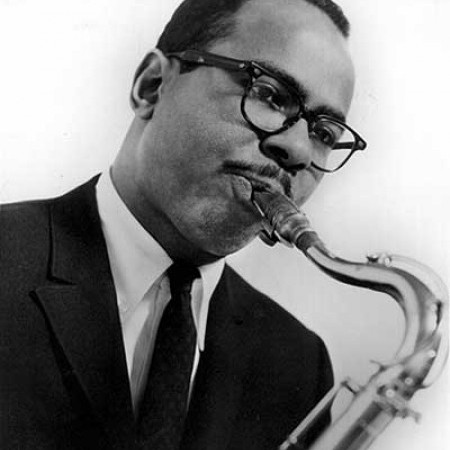
Benny Golson genuinely is excited by the opportunity to write good music in any genre.
(Photo: DownBeat Archives)“When I write jazz things, it’s still what I feel,” he said. “I don’t think I’ve been influenced too much by what’s going on around me, not the avant-garde movement, anyway. I might write maybe three or four jazz things a year now—used to write 50 or 60. But what I do write, I try to make meaningful.”
Golson likens the connection between his writing and instrumental activity to the luxury of having two wives—“I love them both!” But playing jazz full-time provides too precarious an existence for this moderate man, who likes security and enjoys the good things in life. Apart from the occasional gig undertaken more or less to keep his hands in, Golson’s saxophone spends much of its time tucked away in his apartment.
On his way home from Europe last December, though, Golson was persuaded to play a short engagement at Ronnie Scott’s club in London, where he demonstrated an uncanny knack for feeling out an audience while getting into a tune and then gradually building his course of improvisation on the result of this survey to reach a moving, emotional peak. All this was done with a consummate skill that gave the impression that the saxophone is still his constant companion.
Noticeably, Golson prefers to restrict himself mainly to the work of other composers. “People always say, ‘Why don’t you play your own tunes?’ But I get just as much of a kick out of playing other people’s tunes as I do out of mine,” he said. “It’s not that I don’t like them, but sometimes I feel too close to the songs, and I’d rather play something else. When they ask for ‘Along Came Betty,’ and I say I don’t remember it, they think I don’t want to play it, but I honestly don’t remember it.”
There is one piece he will never forget, and it is one he does play occasionally. And no one who has heard “I Remember Clifford,” his tribute to trumpeter Clifford Brown, will forget it, either. Golson started explaining how the song came about by saying, “If Clifford had never been killed, obviously it would never have been written. But, unfortunately, he was. ... I met Clifford in 1949, and even at that very early age—he was younger than I was, just a kid—he was playing like a blue streak. Some years later when Max Roach formed a group with him, they were working at the Blue Note in Philadelphia, and Max had asked me to write some things for the group. So, I took a couple of tunes down to an afternoon rehearsal, and the strangest thing happened that day—it’s never happened to me before or since.
“When I walked in, everything was very informal. Sonny Rollins and Clifford were leaning against the bandstand, and the music I brought was up on the bar. I was sitting on the bar facing them. The first tune was called ‘Step Lightly,’ and they began to play through the melody. Sonny took the first chorus and played it very well, and then Clifford started to play. His horn was pointing straight at me, about two feet away from my face, and the sound was coming straight at me. And then I got the strangest feeling. I got chill bumps all over my body, and I felt a sort of involuntary nervous reaction. He was playing so much on the horn that I felt like somebody was holding me on the stool. It really frightened me. I got scared, and then when he finished, I didn’t know what to say. I wanted to let him know how much he had impressed me, but it was a little embarrassing for a man to come on like this to another man, you know: ‘You made my heart beat fast’ and so on, so I didn’t say that.
“Instead I said, ‘Clifford, boy, you sure did play.’ And then he said something classic. He said, ‘Oh, I’ll get it the next time.’
“When I left the club that day, I was in another world, trying to figure out what had happened. I went home and tried to explain to my mother what had happened, but I don’t think she understood. So, I just kept it to myself. That, incidentally, was the last time I saw him.”
Some months later, Golson was working with Dizzy Gillespie’s big band at the Apollo Theater in Harlem, and during a band break, he learned of Brown’s death in a car crash.
“I just couldn’t believe it, and I started to cry,” he recalled. “I heard a voice from the wings sayings, ‘All right, all on,’ and during the whole show I could hardly see the music because I was crying. The pianist, Walter Davis Jr., was crying too, and I kept saying to myself that once we are given the gift of life, we are simultaneously given an inescapable death. I realized that everybody has to die. Now, it may sound cliched, but I didn’t expect that it would happen to him. Clifford’s career was zooming, he was just more and more every day. You’d hear him, and he would fill you with awe. It was just so frightening the way he was playing. And to realize that it had all been snuffed out in an instant, it was just too much. This man could change from a raging tiger into a graceful swan.”
And so Golson set to work to write a graceful melody that might be indicative of the way Brownie had played his horn, and the gentle way he had lived. It took him more than two months before he was satisfied with what he had written, and then he showed the score to Gillespie, who immediately fell in love with the tribute and was the first musician to play it.
“Originally,” said the composer, “I had thought of it as a vehicle for the trumpet, but soon other people started playing it. Jon Hendricks put lyrics to it, and Carmen McRae recorded it, and later on I even started playing it myself. But I do feel quite close to it. Sometimes when I play it, it’s like I’m by myself—like nobody else exists.”
One of the factors that make Golson such a consistent and interesting writer is that he is interested in every musical happening taking place in the vicinity. He is hardworking and never bored by life; he welcomes challenges and meets them head-on. By his refusal to be type-cast he is able to employ a wide canvas when painting his musical pictures. As a result of this approach, his score for the skiing movie is dynamic and refreshingly original. He views this assignment as his greatest challenge to date—and the fulfillment of his ideas, his most rewarding moment. DB
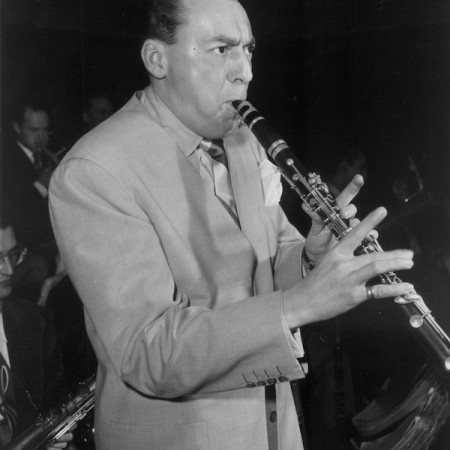
Woody Herman (1913–1987)
(Photo: DownBeat Archives)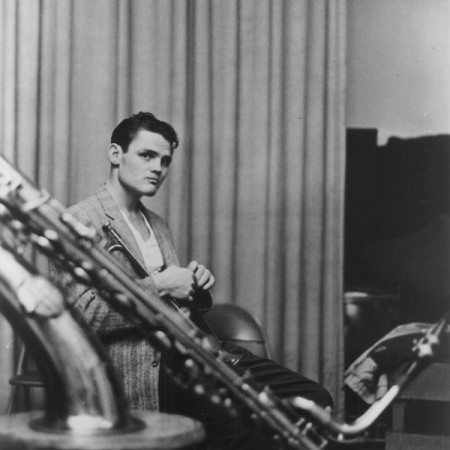
Chet Baker (1929–1988)
(Photo: DownBeat Archives)“And later, in Paris (after I had been deported from England), although I had only been there a week, I was included in a bust of people that they had been watching for one month before I got there. Because I had come to town, they included me in the bust also, although they hadn’t seen me in any of the places they were watching or dealing with any of the people involved.
“I was there 24 hours, and everybody was getting sick—they give you a fix in the police stations until they get all the papers typed up and signed, sealed; they give you a fix every three hours—and I never asked for anything the whole time. So, I went up to one of the detectives and explained it to him. When he checked around, they let me go. But the judge who was handling this bust never did lighten up on me during my whole stay in Paris. He called me back every two weeks, had me examined by police doctors, found me clean, and still he didn’t lighten up on me until I went to Spain.”
In England, Baker was the recipient of a “gift” from a pharmacy clerk—narcotics he said he did not need—as he was registered with a doctor under the British system of treating narcotics users. He said he told the man the next day that he didn’t want to become involved, and, since drugs were so controlled in England, the clerk should be careful or Scotland Yard would be around.
The police did come around, and the clerk admitted stealing the drug.
“They told him,” Baker said, “‘You have no record. We’ll make it easy on you if you’ll tell us who you gave it to.’ So, he didn’t go to jail. I went to jail for 40 days and got kicked out of England.”
Now, finally back in the States, did Baker, pursued at every turn, justly or unjustly, feel that some organized force was against him? “Well, I might have had that feeling,” he answered quietly. “I really didn’t know.”
Yet his current playing displays optimism and a real desire to play, certainly not the marks of a defeated man, especially today, when so many musicians do not sound as if they even enjoy what they are playing.
“Well, that’s really the one thing they can’t touch,” he said, referring to his spirit. “I have a great deal of disrespect for the police department and the correctional people and the way they handle drug addiction, and I’ve suffered greatly at their hands. Not for very long, usually, but so many times that I made up my mind not to let it affect my playing in any way because, after all, that’s the only thing I know how to do.
“I’ve always been an optimist,” he said with a half-laugh. “It’s funny, but I’m kind of mixed up because, by nature, if I’m not playing, I’m depressed usually—melancholy, quiet—but if I’m playing, it seems to change. Now, I play very ‘hard.’”
When I went out to the Cork ’n’ Bib to hear Baker, shortly after his return to New York earlier this year, I commented on his fiercer attack and generally more virile style (DB, May 21). At the Cork ’n’ Bib, he was playing a borrowed trumpet, because his flugelhorn was in the shop. More recently, at a recording session, I heard him playing flugelhorn, and there was no diminution in Baker’s fire.
“Playing this flugelhorn,” he said and paused, “It’s so hard to play, you wouldn’t believe it. Nobody would, unless it was somebody who plays one. The mouthpiece is deeper and wider, and it takes so much air to fill out this horn. You were there at the date. If I had been playing steadily, right up to the time of the date, I could have gone through that eight or 10 times without getting tired ... . Playing that tune—and it only goes up to high C—if you’re not playing steadily, you can’t make it. After a couple of times, you’re finished.”
Baker began playing flugelhorn a couple of months after his deportation from England and return to Paris. His trumpet had been stolen from the Chat Qui Peche, and a friend gave him a flugelhorn. Baker has been playing it nearly a year-and-a-half now and says he has given up trumpet.
But how did Baker acquire the new strength in his work? How did his conception change?
“I can’t really say how it happened,” he mused. “I did a lot of thinking—I had my horn during the time I was in prison in Italy—17 months—and a lot of playing, a lot of thinking about music during that time.”
Baker trailed off for a moment and then continued: “I wish you could have heard the band in Philadelphia one night, one set or two sets on one night. The band stretched out so far; we were playing some advanced melodic and rhythmic things.”
The band Baker refers to is one he formed soon after his return. It consisted of tenor saxophonist Phil Urso, an old associate of Baker’s from an earlier quintet who had been living in Denver, Colorado, for a while, and, more recently, had been gigging around the Midwest with Claude Thornhill; pianist Kenny Lowe; bassist Jymie Merritt (formerly with Art Blakey); and drummer Charlie Rice. With the exception of Lowe, this is the group with which Baker recorded and has been touring together ever since. The regular pianist is Hal Galper, who used to play in Boston with Herb Pomeroy’s big band.
“I think this band is going to have a lot to say,” Baker said, “because Hal writes some nice tunes.”
I hadn’t heard any of Galper’s compositions, but judging from the repertoire I did hear, I wouldn’t imagine this to be a far-out group when judged in light of some experiments that have taken place since 1959, the year Baker left for Europe.
“I haven’t heard Ornette Coleman, and I’ve only heard Coltrane on records,” he said. “The people I’ve heard since I’ve been back have been Charlie Mingus at the Five Spot—I went down there and wasn’t impressed at all by what was happening. On the ensembles, the things were ragged. Maybe it was because of the constant changing of men in the group. And Mingus was continually saying things and screaming at different personnel in the band. I went down to Birdland and listened to Gerry Mulligan’s Concert Band, and that didn’t kill me, either—Gerry stopping the band in the middle of a tune and starting them over again ... kind of a rehearsal, audience participation and so forth. Maybe it was because there weren’t too many people there, and he felt he might as well rehearse or something. ... And I went down to hear Zoot Sims and Al Cohn at the Half Note. I think Al Cohn is marvelous. I like Zoot, and I have a lot of respect for Zoot, but hearing him play alongside Al Cohn, it just seemed to be in a different class. Zoot can play, too, but Al is so much stronger, so much more definite. He knows where he’s going, and it comes out so natural.”
Although he has not heard Coltrane in person, Baker decried the marathon solo: “Forty-five minutes is a long time to be blowing; a lot of people get bugged. He gets hung up playing a little rhythmic figure, keeps on playing the same thing, just breaks up the time differently. I’d rather listen to Stan Getz or Al Cohn, myself. But I have heard him play some things that are really beautiful.”
“I think there’s still a lot to be said within the framework of the standard tunes and standard progressions,” Baker continued. “I don’t say you shouldn’t blow in those modal veins—they’re interesting too—but I don’t think you should do it hour after hour, every night.”
As a recent repatriate, how did Baker feel about the increase in the influx of U.S. jazzmen into Europe?
“If I were a colored musician,” he answered, “with a halfway decent name, any name at all, that’s where I’d go to live, to get out of this mess over here, because you certainly don’t run into it over there.”
What was his reaction when he encountered the European philosophy that says only Negroes can play jazz really well?
“I never ran into that, myself, but I know that does exist. But I’m back, and I’m glad to be back, because all those people who say and feel that jazz is for the colored man only—I’m not going for that. And I’m going to do everything in my power to show them that that’s not right. There are many white musicians who can play. I’ll put them up against any colored musicians. The styles may be different—maybe it’s just a mater of taste—they certainly have got as much to say.”
When Baker arrived in New York, his plans were to live on a friend’s farm in Tonka Bay, Minnesota, and eventually play in a Minneapolis club that the friend was to open. It never happened because the terms of the contract were too one-sided, he claimed, adding: “He wasn’t promising me anything; I was promising him everything. He was just acting as a collection agency for all my money.”
Through composer Tadd Dameron, Baker became affiliated with Richard Carpenter, who used to manage Gene Ammons and Sonny Stitt, and soon he was on the jazz-club circuit. An engagement at the Village Vanguard fell through when a New York City cabaret card was granted Baker, but then quickly canceled.
However, Baker, the optimist, looks to the future with hope.
Of his early successes in the ’50s, he said, “I never really believed in that, and I never really believed that I deserved it. I felt that it was as though during that period people had been more or less just waiting for something new, and when it came about, they gave it more than it had due. I don’t believe at that time I deserved to win the DownBeat or the Metronome polls as the best trumpet player. I know I’m playing 10 times better now—and I’m not even mentioned in the polls.”
Whether or not he was the best trumpet player then, Baker’s playing had an emotional quality that went right to many listeners’ hearts. He still has that emotion in his work, those lyric qualities, and his self-expression has never been more assertive. If his music continues to be such a strong force within him, it won’t be long before his name is again on the poll lists. This, by itself, is never a complete measure, but it will be another reminder that Chet Baker has come back. DB
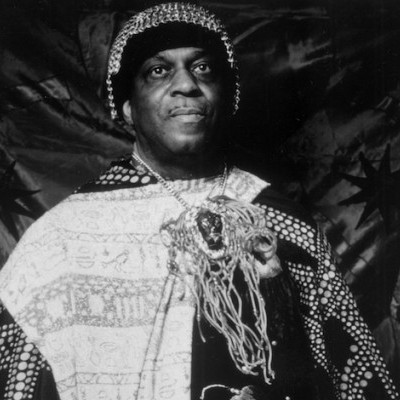
Sun Ra (1914–1993)
(Photo: DownBeat Archives/Impulse!)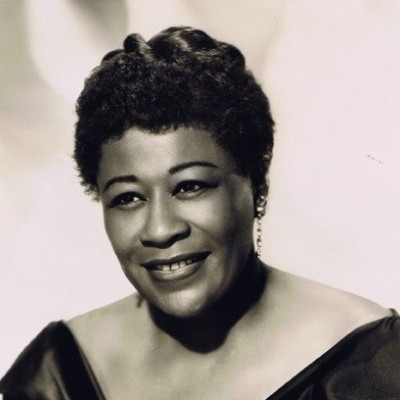
Ella Fitzgerald (1917–’96)
(Photo: Verve)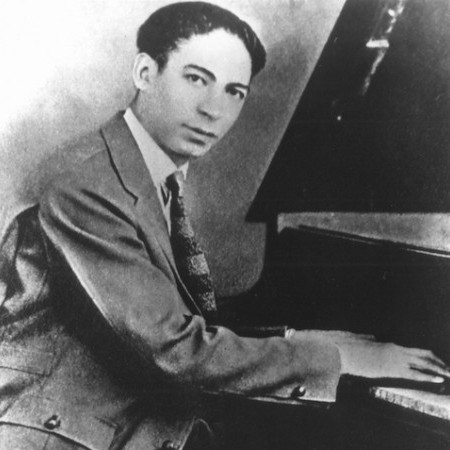
Jelly Roll Morton (1890–1941)
(Photo: DownBeat Archives/Nonesuch)
Billie Holiday and her dog, Mister, in New York City during February 1947
(Photo: William P. Gottlieb/Ira and Leonore S. Gershwin Fund Collection, Music Division, Library of Congress)Benny Goodman used Billie on a record (Columbia) of “My Mother’s Son In Law” when [Jack] Teagarden, [Gene] Krupa and others were in his recording band—before he really organized his present combo. The disc is an item today, not only because of the fine instrumental work, but because it was Holiday’s first side. She was pretty lousy. You tell her so and she grins. “But I was only 15 then,” she said, “And I was scared as the devil.”
She Doesn’t Sing
You tell Billie you think you’ve got enough dope for a little story, but that one thing worries you. That is—why does she sing like she does—what’s behind it?
“Look, Dex,” Billie answers. “I don’t think I’m singing. I feel like I am playing a horn. I try to improvise like Les Young, like Louis Armstrong, or someone else I admire. What comes out is what I feel. I hate straight singing. I have to change a tune to my own way of doing it. That’s all I know.”
Sad Love Life
You ask her one more thing, recalling how at various times Billie has been reported ready to marry. She shows her frankness again. “I’ve loved three men,” she tells you. “One was Marion Scott, when I was a kid. He works for the post office now. The other was Freddie Green, Basie’s guitar man. But Freddie’s first wife is dead and he has two children and somehow it didn’t work out. The third was Sonny White, the pianist, but like me, he lives with his mother and our plans for marriage didn’t gel. That’s all.”
Billie says she isn’t satisfied now. She wants to get somewhere. Maybe on the stage. She wants to make money—a lot of it. She wants to buy a big home for her mother. She doesn’t expect any happiness—she is used to taking hard knocks, tough breaks. And she admits she is envious of Maxine Sullivan and other colored singers who have gotten so much farther ahead than she. Someday, she thinks, she’ll get a real break. But she’s not very optimistic about it. Billie Holiday is convinced the future will be as unglamorous and unprofitable as her past. DB
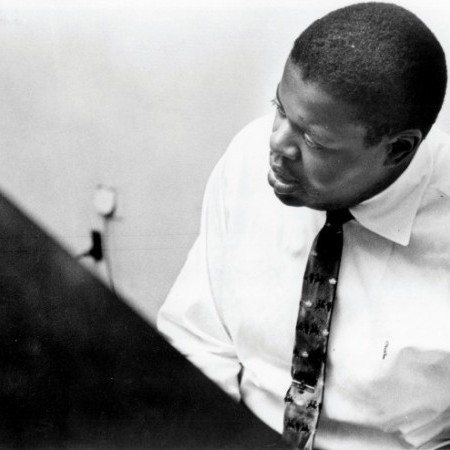
Oscar Peterson (1925–2007)
(Photo: DownBeat Archives/Verve)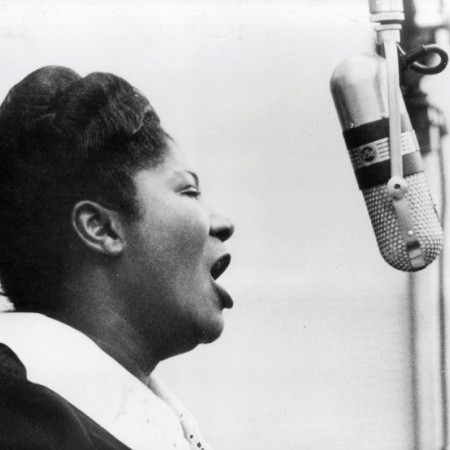
Mahalia Jackson (1911–1972)
(Photo: DownBeat Archives/Columbia Records)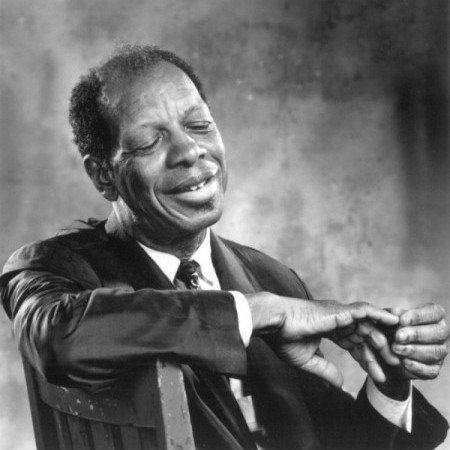
Ornette Coleman (1930–2015)
(Photo: DownBeat Archives/Verve)Sun Ra expressed much the same set of concerns. He said death is an option, it’s not something that we have to do.
When you make things the way that you believe them, the one thing you cannot do is make all the decisions for yourself and not think about anyone else. Yet, the reverse of it is that someone will come along and hire you to do something that they want you to do, and if you do it to the point of satisfaction it becomes different, because knowledge works socially and financially.
Life is eternal. There don’t have to be people for it to be eternal. If we didn’t have what is called a “mother” and a “father,” our definition of life would be different. The sexual act has created a lot of people. The only thing it hasn’t done is that it hasn’t made them any better or worse. The human form is there to acknowledge life. If the human form didn’t have life, then life would need it.
One of the great joys in your music is that it presents a model of being together as musicians that is open-ended. It doesn’t say “I’m the leader,” it doesn’t say “I’m the sideman.” Not just in terms of who is at the top of the bill, but in the structure of the music.
Not only are you describing it to the “T,” but the main thing is that the idea cannot be killed. If you have an idea that the world has not experienced, it will come into existence.
You’ve offered us so many new ideas and new feelings.
Yeah and it’s not going away. It is the essence of what we call love. You don’t have to have a diploma to know that you love. It’s in you because without it, there’s no you. If you don’t care about yourself, how can you care about anything else?
The last time I heard you play I was shocked at how strong and fresh your playing was, even though it was definitely you.
What you’re speaking about lives in every human being, it’s called an idea. The idea is as new as being born. The only thing that’s different about it, nobody knows it’s an idea, they think it’s an emotion. They respond to it like that. As human beings we haven’t found a way to know how love and creativity can do without each other, but they’re equal when they get together.
John Cage said that we haven’t yet solved the problem of how to be together.
Uh-huh. That’s definite, that’s good. Do you realize the individual that’s responsible for you being there is your mother?
That’s true. I’m going to think a little differently about Mother’s Day this year. I’m going to say: “Ornette told me to think about it!”
And they’re not going to make it any worse, any better. It’s just the way it is. And it’s not going out of style any time soon.
Something called truth. I wish I was pure enough to explain how I experience what I believe it is. Truth is not light, darkness, high or low, sadness, happiness, good or bad. Truth means conviction about whatever it is; I’ll stand for the punishment. There is a truth that is not required to prove anything, but there is a truth that just has to do with one thing: Human.
Love does exist. Love doesn’t have any goals. It only has causes and effects, to be happy or to not be sad. The thing that is amazing, life doesn’t have enough truth in it to represent the quality of what everyone is going through because they’re alive. There is no way humans can exist without need and want. Not because it’s human, it’s because the quality of need and want causes so many things to change and you can’t replace it because of who you are or who you aren’t. You can only replace it if you have something greater or if you are able to help someone to bring them to the level of who they want to be. It’s hard to sleep, eat and do all these things and want to be happy because of just being human, but it’s hard to know how to approach something without using something as a reference. That is not a cure for any knowledge. Whatever knowledge is, it has only two purposes: to exist and to have a reason why it can change something or activate something.
There’s only one human being, and we’re all imitating that same person. That person who we’re imitating knows something that we don’t know. I don’t think that person is ever going to show. I guess what I’m trying to get to is that you don’t have to die. It’s not required.
No, but lately you know what I’ve been thinking? I’ve got high blood-pressure ...
You and me both.
... and I’ve been thinking about my heart, and the fact that I have a car, and my car’s motor is going to die. It’s running, and if you run it a lot, it’s going to stop, break down. I thought to myself, we don’t give our hearts a break. From when the minute you pop out, you don’t ever let it even cool down for a minute.
Oooh! That’s true! But think about who created it, what about that? How did they know that would do what it does? Not only that, but the heart and the brain, this is something that humanity has dissected, written about. I used to love chemistry. We as human beings, the life that’s in us becomes purer the more you understand the less you need, but the more you want to give. I don’t claim to be in control of anything. I would say I like science—and sound is like a science—but the one thing about sound that’s so amazing, it doesn’t have any goals. It doesn’t say: “I’m going, I’m leaving.” It’s just there.
One of the great contributions you’ve made is to get away from functional harmony, and functional harmony is about goals.
Yes. As you sit there, do you know what’s causing you to say what you say? The idea. The name of the idea is just that, but what is it? It’s everything that can be known can be found. I’m getting a chill. It makes me realize that the quality of God is close to the quality of idea. I’m trying to figure out how to put it in words without making it seem like I know what I’m saying. I can visualize it in my head, but I don’t know what it is. But the thing that causes me not to say it is that it changes things. It raises the status of life in a human way. Not only does it calm you and make you appreciate what you want to express yourself, but it makes you know that you are the person you think you are. Think of women. Not only are they more advanced, they can make their own people. Men can’t do that. I do wish to learn to know what I see as clear as I’m looking at this. [lifts up his notepad] But I haven’t. The only thing I see that clearly is sound. I see sound.
You see sound?
Uh-huh. What I mean is that sound is invisible, but the more invisible it gets, the clearer the sound is. All these qualities we have—our heart, knowledge, brain—I’m sure there’s a guy who can take out your brain and put it back in your head and you’ll never even know it. But life allows them to learn how to do that. Which goes to prove that life is not scared of anything you learn. The chances are that something will come along to date it. I’m a victim of that. I have tried my best to get as eternal as I could. But for what reason? I’m already there! Why would I be trying to get somewhere where I am already? The only thing that gets me is that I want to learn and know, but not to replace something, depress something or make something less to get there. I don’t want to do that.
In order to make a statement, you don’t have to deny somebody else’s statement. You once told me that harmolodics was the idea that people playing together could all have their own statements.
That’s true. I’m just human. We all have the same structure. There is an idea, that creation idea, but it’s not because of need or want. It’s because of what it does. I have tried to get more eternal by contemplating an idea that doesn’t need to be replaced, doesn’t have to be right or wrong, doesn’t have to be erased, doesn’t have to be an emotion, doesn’t have to be a thought, just what it is itself. It does exist, honest to God. I have experienced it. I’m trying to materialize it in the form of knowledge. I’m beginning to do it. Let me see if I can explain it the way it happens to me. [lengthy pause]
What bothers me is that this part [points to his heart] and this part [points to his head] are connected, but are not relating. That comes from my ability to remember that I have experienced things that are eternal, good and valuable, and I can’t find a way to call upon them when I need them.
That seems to be what people are looking for in enlightenment.
Take music. I know the structure of music, these 12 notes. The order of those notes will never change, but the idea will change in the twinkle of an eye. It’s a function that’s like imagination, whatever imagination is.
What you would like to do, make sure that it is not something that you need or want. If you find that in your heart, it will show you who you don’t have to ever become. I’m close to getting there. The only thing that I don’t know how to do is share it. I don’t know how to do that yet.

“Doing shows and festivals under your own name, it’s a surprisingly big difference compared to playing with someone else,” saxophonist Kamasi Washington said, discussing the attention he’s received since the release of The Epic (Brainfeeder). “There is a lot of responsibility.”
(Photo: Mike Park)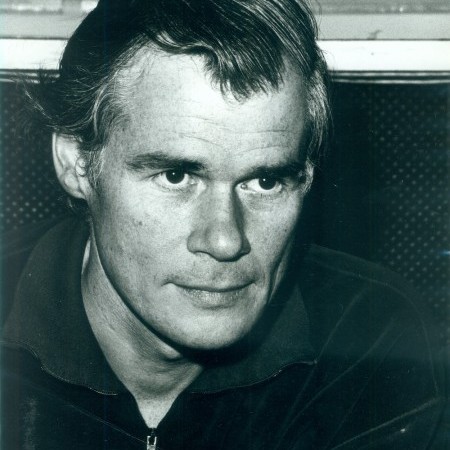
Galt MacDermot (1928–2018)
(Photo: Dagmar/DownBeat Archives)Shapiro’s office was one of the places he had developed a habit of dropping into, “looking for things to do” and the opportunity for intelligent conversation. How had that come about?
“Most of the people you ran into around New York, you just couldn’t talk to ’em. I discovered Nat [Shapiro] had written [Hear Me Talkin’ to Ya] with Nat Hentoff, and when we began to talk about Ellington, he turned out to be a real jazz fan. Then we got into it, and I played him a few things I’d written, and he was interested.”
Early in 1967 Shapiro gave him the script of Hair to read and introduced him to its authors, Gerry Ragni and Jim Rado. Enthused, MacDermot set off for his Staten Island home to return 48 hours later with eight completed songs.
“They wanted a rock ’n’ roll score. They knew the Rolling Stones, whom I didn’t like at all, and the Beatles, whom I did like. They didn’t like country music, which I love, and they weren’t too familiar with rhythm and blues. I tried to get more of what I liked into the score, even if it didn’t always apply to city life. Then a lot of the songs in Hair were imitations of what pop groups were doing. The parodying of some of the popular styles was one of its humorous aspects. But at the same time, I wanted to get a genuine feeling—a jazz feeling, actually—because the freedom of the show was what I have always considered jazz to be about. Exuberance, that is, and tension, and a kind of suffering. But I didn’t want it to be a swing thing. I wanted to make it with the kind of rhythms you hear now.
“It came off better than I had hoped. Nobody was keener than I to do it, but nobody could convince me it would work. It was really wacky. Oddly enough, the only tune I rewrote was “Aquarius.” They handed me the lyrics, and I had just a day to write it, so I came up with a very pretentious, Rodgers and Hammerstein type song. We all knew it wasn’t right, but we managed to get over the audition, and by then I was already thinking of a different kind of feeling for it. The approach to the words had been wrong. The words were what the kids were saying then, and since they had to sing them, you couldn’t laugh at the words. I think the reason the record hit was in the tail end of it: ‘Let the sunshine in.’”
MacDermot still loves to play. He played piano in the Hair band for a time, and he occasionally does concerts with three of its members, mainly for kicks. These musicians are Idris Muhammad, a brilliant modern drummer from New Orleans who has been extensively recorded; Jimmy Lewis, a bassist who was with Count Basie in the early ’50s; and Charlie Brown, a relative youngster who plays beautiful country guitar. Because all four knew it, and because it is what their audiences want, their repertoire mostly consists of the Hair music. MacDermot does not consider himself a jazz musician, but he enjoys those times when the four of them, with their differences of conception, achieve what is primarily a jazz blend.
For his other great success, Two Gentlemen of Verona, he also played piano at first in the pit, and he remains very enthusiastic about the 14-piece band assembled for the show. It included such well-known musicians as Thad Jones, Dicky Harris, Everett Barksdale, Billy Nichols and Bernard “Pretty” Purdie, and their potential can be heard throughout the original cast album, not least in the two instrumental tracks on the final side, “Dragon’s Music” and “Where’s North?” Playing, however, tends to affect MacDermot’s ability to write.
“One reason is because I like a lot of sleep. I normally go to bed around 9:30 and get up about 7:30. Duke Ellington seems to be able to play and write. I suppose if I established a real, life-long habit of doing it, but I put all the music into the playing, and then after a time I find I get a little stale on the tunes. I have to find some kind of happy medium between playing and writing.
“I go to hear Ellington whenever I can, and the last time he was at the Rainbow Grill I really heard some music coming from him and his guys. The Chinese piece from the Afro-Eurasian Eclipse was very interesting. But what impressed me most was Ellington’s own playing, because he was finding things that night. Then they did a number with just the three tenor saxophones, and they all got into a mish-mash at the end. The rhythm section cut out and there were those three guys blowing away, and Duke egging them on. They didn’t take it seriously, but it was an example of an idea evolving from a situation. I know of no one other than Duke who presents jazz in such a successful way. He has been doing it for years, and his personality carries it. He’s simply the best. Although there’s no question about that, it wouldn’t necessarily ensure that he would always be able to sell his music. Yet he has managed to do so. I’ve read all the books about him, and watched the way he’s done it, the way he keeps it going. He’s truly extraordinary.
“It’s more of a problem than most people realize for a musician to make a living in music. You can use a show like Hair. The show covers up the music. If there’s music there, the people who want music like it, but meanwhile there’s something for them to watch. People don’t understand pure music. They can understand dance music, but that’s really a cop-out, if you go to a dancehall and just play dance music. When Ellington plays a dance, he always takes time out to present something artistic.
“Some nights that I’ve been to hear him, he wouldn’t play much, but there were always guys who sounded nice, although maybe nothing special actually happened. Other nights, I’ve seen him when he never left the piano, never even bothered to talk much. It was all happening at the piano. Those were the really good nights, but you can’t rely on them always. He has to have something else, a routine, that is part of the business of working every night. It probably isn’t necessary for him to work all the time, but I know he likes to, because it is his way of keeping in touch with music. That’s hard to do. I know, because for recording sessions I have to keep digging up things, just to keep going, to play, to make music.”
Despite their obvious differences, did he feel that both Hair and Two Gentlemen of Verona had the same basic jazz intent?
“Although it has that fine band, Two Gentlemen of Verona is not so much of a jazz show. It’s not after freedom but humor. John Guare, who did the lyrics, is a very funny and clever guy, so the music tried to be, too. And it’s very ethnic ... . Because it falls into divisions I wrote Puerto Rican, Afro-Cuban and West Indian music, as well as parodies of old-fashioned Broadway songs.”
The two New York successes were only a part of this prolific composer’s output. What happened when he went to London in 1969?
“I teamed up with an underground poet named Bill Dumeresque for a musical called, Who the Murderer Was. It was rather a weird situation—murder with songs. We had four singers, like a Greek chorus. Dumeresque does beautiful lyrics that are somewhat depressing, but to me they’re humorous, too. All the songs were written specially for the show, but it didn’t click.
“The following year, we tried another play with songs, Isabel’s a Jezebel. It was partly successful at the Mercury Theatre, but not when it moved to the West End. It was, very strong and far-out, almost like Becket, but without Becket’s appeal. It was just like a soap opera—about abortion and the relationship between a man and a woman—and the songs, about life and love, possibly seemed irrelevant. The critics hated it and were offended by our doing it. I think they were probably justified. Although it was interesting in a psychological way, it was not entertaining, and the theater critics will say you are not doing what you should. You are supposed to make people think, but it’s hard to know how far you can go in commercial theater. People read the newspapers to find out whether they should go to a play or not, and in this case, the critics honestly didn’t think they should.”
During 1971, MacDermot wrote Ghetto Suite, which consisted of songs and poems by Harlem and Bronx schoolchildren set to his music. He also wrote a mass.
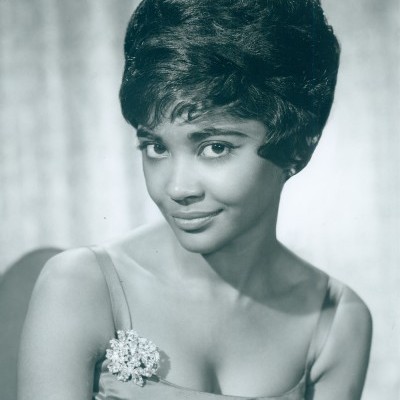
Nancy Wilson (1937-2018)
(Photo: DownBeat Archives)Much has been made of the help various musicians have been to her development. But just what did they do?
Wilson hesitated as she pondered the question, and then she haltingly answered, “Well, nobody really did that much for me ... I mean what could they do? They said nice things and introduced me when I came into the club or something, but actually, nobody took me seriously. They thought I was just kidding about being a singer, and by the time they began to believe, I was on my way.”
She tottered briefly on the brink of becoming a blues belter in the mode of Dinah Washington. Not only did she possess the brisk, clear voice Miss Washington once owned, but she also phrased and spat out the lyrics with the same passionate conviction of Dinah at the best.
This proved to be a false start, and either by her own decision or through the direction of Levy, Wilson began rounding off the blues corners, running the phrases on smoothly past the arbitrary stops, lagging just behind or slightly ahead of the beat, taking melodic liberties, and varying her repertoire to include the “pretty” tunes. There remained flashes of blues feeling, but more frequently jazz qualities cropped up, which transformed the Tin Pan Alley material into compelling messages.
Her ability to sing is a natural gift. At no point in her life has she either doubted that ability or sought to improve upon its quality by formal study or training. She does not read or play music and relies primarily on a keen sense of hearing and her memory in learning and perfecting a new tune. This lack of technical training caused early problems. She was singing every night for hours. She plunged into her performances with abandon and drive, responding eagerly to audience reaction and enthusiasm. She pushed her vocal equipment to the limit.
Wilson had worked to be heard, and now that she was, she tried to control her audiences from her larynx. She belted, shouted, screamed, whispered—and got laryngitis every time she played Chicago with its demanding listeners.
“I couldn’t have kept that pace up for 30 weeks,” she remembered. “Chicago was really the hardest place for me to work in those days. I knew I had to do something else or it would be all over for me before I really got started.”
The remedy she chose was to polish her material and delivery into a sleek supper-club attraction, resorting to the more strenuous delivery only infrequently. She never lost a fan, but the critics and reviewers began to lace their commentaries with words like “slick” and “mannered” and “superficial.”
But the die was cast, and the writers who had been goaded the uncommitted vocalist to become either a blues, jazz-rooted singer or a lower-echelon pop singer got their answer: Nancy Wilson was not going to be a burned-out duplicate of Dinah Washington or a road-trotting female Jimmy Scott. She was going to select good special material, pull out of the bag of standards those tunes best suited for her, and sing them in the best jazz-oriented style that would not excessively tax her physical equipment.
That was the deliberate step she took, and it could have ended her brief career had not the subtle metamorphosis begun.
The subtle changes that have marked the vocalist’s style and more intriguing than the strides she has taken toward correcting the technical delivery of her material.
The 22-year-old singer who captivated listeners in the winter of 1959 and spring of 1960 was a haughty, carefree ingenue. She threw her torch lyrics down like a gantlet. Her entreating tone was edged with defiance, and her manner hinted that this whole business of heartbreak and blues was an old joke she could afford to indulge and scoff at. She was good at the business of delivering a ballad, and she gave each torch song a deliberate twist that revealed more about her influences than about her own feelings. Writers said she often sounded like Washington, Scott or Sarah Vaughan and she seldom disproved them.
There was no artistic temperament that would bridle at straightforward criticism. Wilson’s disposition was, and is, even co-operative. Her quick smile and warm, likeable personality have earned her a string of saccharine appellations, including “Sweet Nancy” and “The Baby.”
In spite of the tags and labels, Wilson is not a sweet singer. Sophistication and hauteur still are noticeable Wilson approaches to certain lyrics, but perhaps what those critics and listener are implying is that there is not bitterness in her approach. This is certainly true—even convincing sadness is only beginning to be transmitted.
The most obvious example of Miss Wilson’s complete re-emphasis of message may be seen in her recording of “I Don’t Want Him, You Can Have Him,” previously recorded by Nina Simone. In Simone’s version, the singer’s quiet, pent-up delivery suggested despair, disillusionment and heartache. Wilson’s short, snappy phrases, well-paced dynamics and gibly spoken ad libs transformed the tune into a challenge.
Though it is hazardous to speculate about the inner life of another, there does appear to be creeping into the songs of Wilson a note of sobriety. Her signing rings of life in all its various manifestations. She can now deliver a compassionate lyric, and unhappiness is no longer a foreign mood. She has begun to savor her lyrics, and they fall from her lips tempered with an urgency and entreatment. Her up-tempo tunes still crackle and vibrate and she sweeps the listener along with energetic ballads contradicts the torchy pathos of their message. She is witty, philosophical, defiant, appealing, tender, occasionally sad, but never bitter.
She may well owe a debt to Washington for her blues flavor and one to Vaughan for sophistication and poise. But Nancy Wilson pays her respects to a single vocalist.
“I owe so much to Little Jimmy Scott,” she said. “I think he’s fabulous. I guess if you can say anybody influenced me, it was he.”
Along with Vaughan, Nancy Wilson is the only working vocalist whose natural and cultivated ability permits her to sing from one end of the spectrum to the other. She is at home with the blues, can deliver a Broadway show tune with zest and conviction, and sing any kind of tune in between.
Wilson’s voice is crisp and clear. She bites off phrases so sharply that the “s” sound is like a reptilian hiss. The tension-building break in her voice cracks off at will. In recent years she has shown increasingly better control when attempting to improvise. DB
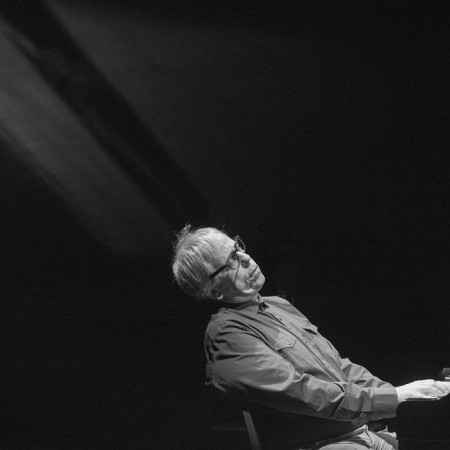
Kenny Werner
(Photo: Alessandra Freguja)Werner writes most of his music “by scratch,” starting with a couple of notes he likes. “I usually don’t know where I’m going,” he said. “Some of these tunes just come to me naturally, and I take them as they are, and then play with them. These are my ‘sweeter,’ more emotional songs, like ‘Uncovered Heart,’ ‘Beauty Secrets’ and what I like to call my ‘shower song’—‘You Make Me Sing’—because some hot water on my back created a beautiful buzz that helped me finish the tune when the light around the melody began to dim.”
Other songs are generated intellectually, where he continuously steps back while writing, and asks, “What could I do to this piece so anyone, not just me, can have an experience while listening to it?”
Earlier in his career, Werner said that meant more complex writing and arranging, but eventually he came to see three ways to write music that audiences would want to hear. First, he moves information from the foreground into the background while simplifying the melody; second, he puts a different tempo or beat to the song; and third, he does something entirely unexpected.
“If I start with the mind-set of writing a samba, then all my mental direction goes into what I know a samba to be,” Werner said. “[Instead], I want to be led and carried along on a journey that I can’t predict ahead of time—as a listener and player. I’m expecting the reason for the piece I’m writing or playing to emerge somewhere in the middle of the process. I like to start with chaos and sculpt it until it sounds like it has a reason it didn’t have before. People can handle my music if they feel the humanity in it.”
The singular relationship each instrumentalist will have with his or her instrument will be described by each musician idiosyncratically. Werner, who also played some accordion and trombone as a youth, likens wanting to play the piano to “sitting in a jacuzzi with six women, a bottle of champagne and chocolate-covered strawberries on a plate. In other words, I can’t wait. I just want to put my hands on the keys. It feels that good, that sensual oneness with the instrument.”
He follows a minimal practice regimen to sharpen his technique and to serve the musical flow that will take place later on in performance. “Once I establish that sensual connection with the piano, I don’t want to be responsible for another thing I play that night,” he said. “I know the music will just happen.”
This is why Werner feels the piano often is playing for him. “When I’m chuckling on the bandstand, it’s because I’m laughing at all the choices the piano is making!”
He points to two particular song titles—Joe Henderson’ s “Inner Urge” and Herbie Hancock’s “Eye Of The Hurricane”—to further elucidate his ideas. “Playing shouldn’t be about ‘contextual correctness,’” he said. “Improvisational choices should bubble up from inside of you, be from one’s own inner urge. It’s about going into the void and swimming there. No matter how much turbulence you experience, or whatever sparring takes place on the bandstand, all this energy circulates and you should be in the middle of it, undisturbed and untouched, like the eye of the hurricane. That is what it’s all about, instead of worrying about what made Thelonious Monk so great. I don’t want to play like Monk, but I want to feel like Monk when he played. Any note I play is the most beautiful note that can be played.”
As much as Werner enjoys trying to explain the slippery subjects of creativity and spiritual living, he dives just as quickly into the subject of national politics with a decidedly left-of-center viewpoint. He is interested in film and would like to move into soundtrack composing. In the meantime, his work seems to be growing in scope naturally enough: His latest album is a collaboration with Vitro called the Delirium Blues Project: Serve Or Suffer (Half Note), which found Werner stretching out his arranging talents for an all-star band. “I’m interested in the ‘inner game,’ the stuff that you’re learning,” he said. “The idea of mastering a new form is what gets me out of bed and makes life interesting. The part of consciousness that blots out the delusions is seeing what’s new and how far you can go, how masterful you can become.” DB
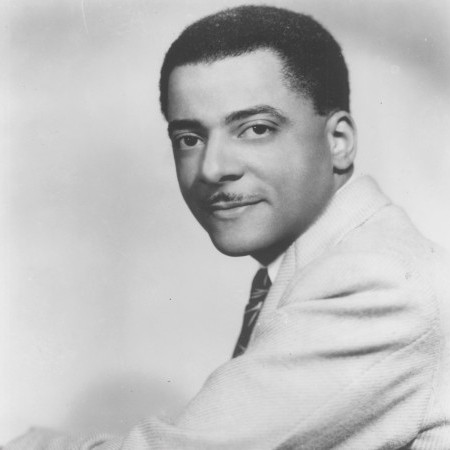
Pianist Teddy Wilson (1912–1986)
(Photo: DownBeat Archives)The pianist he replaced in the Senior band was Tatum. Tatum left to concentrate upon solo work, primarily in radio. Wilson was with Senior, best known to jazz historians as the lead alto man with McKinney’s Cotton Pickers, until the fall of 1931, when he went to work in the Gold Coast club in Chicago.
“This was quite a club,” Teddy recalled. “A membership cost $250, and each member got a solid gold card. ... Al Capone would come in regularly after hours and bring in a party of 10 or 20 people. He’d always have a wad of bills, and everyone who worked in the place got something. Every member of the band got $20.”
When the Gold Coast club closed because of a newspaper story concerning the gambling in the club, most of the band returned to Toledo, but Teddy remained in Chicago, jobbing around before joining Erskine Tate and later Francois’ Louisianans. Then he went on the road for a few months with Louis Armstrong, with whom he made a dozen records.
“The main thing about the Armstrong band,” according to Wilson, “was the way Louis could play so beautifully with such a bad band behind him. We had a few good musicians—Budd Johnson on tenor and his brother, Keg Johnson, on trombone—but it was not a good band.”
Teddy paused to reflect for a moment and then chose his words with deliberation in summing up his feelings about Armstrong: “I think Louis is the greatest jazz musician that’s ever been. He had a combination of all the factors that make a good musician. He had balance ... this most of all. Tone. Harmonic sense. Excitement. Technical skill. Originality. Every musician, no matter how good, usually has something out of balance, be it tone, too much imitativeness, or whatever. But in Armstrong everything was in balance. He had no weak point. Of course, I am speaking in terms of the general idiom of his day. Trumpet playing is quite different today than it was then.
“I don’t think there has been a musician since Armstrong who had had all the factors in balance, all the factors equally developed. Such a balance was the essential thing about Beethoven, I think, and Armstrong, like Beethoven, had this high development of balance. Lyricism. Delicacy. Emotional outburst. Rhythm. Complete mastery of his horn.”
After his tour with Armstrong, Wilson returned to Chicago and worked with Jimmy Noone and Eddie Mallory. “Noone had a beautiful low register and was very melodious,” Teddy said. “His playing was characterized by smooth legato playing.”
In 1933, Wilson went to New York to join Benny Carter after the latter had gone to Chicago to hear Teddy with Noone on the recommendation of John Hammond.
The Carter band broke up after playing two jobs—the Empire ballroom and the Harlem club—and Wilson joined Willie Bryant’s new band. Bryant was not a musician, but a showman, and bookers had the idea that he could make it like Cab Calloway. It didn’t quite work out that way, but Wilson was with Bryant until 1935. After that, Teddy had two jobs: backing the Charioteers quintet on radio and as intermission pianist at the Famous Door on 52nd Street.
In ’35, Teddy also began making his famous series of records featuring singer Billie Holiday. These records date from ’35 to ’40, and any list of the most influential and most stimulating jazz records of all time would have to include some of these sides, as good today as they were then. How many musicians became jazz musicians because of Lester Young’s solos or Roy Eldridge’s solos or Wilson’s solos on these records? No one can tell. But it probably is a long list, containing some distinguished names.
Has Wilson read Miss Holiday’s autobiography, Lady Sings the Blues?
He has. Quickly.
“And I don’t think much of it,” he said. “It’s full of distorted emphasis and sheer fabrication. I don’t see how anyone could write a book like that.”
The pianist’s evaluation of some of the musicians of that period, particularly those he played with on the memorable Holiday records, include the following regarding Young: “I think Lester is one of the great landmarks in jazz. When Hawk was the yardstick of tenor playing, Lester came along with something different and valuable based on great originality and skill.”
Teddy said he considers Young as one of the three most influential musicians in jazz, the others being Louis Armstrong and Charlie Parker.
“I certainly think Lester belongs in there somewhere,” Wilson said. “But he has never seemed quite the same since the war. ... On the record I made with him in ’56, I thought he had some of his pre-war sparkle, but this was made when he had just been released from the hospital and had not been drinking.”
Parenthetically, Wilson added, “Guys who think they play better when they are loaded are out of their minds. When you are drinking, the sparkle is gone. A musician who has been drinking might feel like he’s playing better, but he’s not. You’d think some musicians who drink would listen to the records they’ve made while they’ve been drinking and realize this, but they don’t.”
It was also in 1935 that Wilson jammed with Benny Goodman at a party given by singer Mildred Bailey. The results of this trio session (the drummer was “Mildred’s cousin, a test pilot, an amateur drummer”) helped to shape the course of jazz and bring Wilson international fame with Goodman.
Because of the exciting way Teddy and Benny improvised together, John Hammond wanted to record them, and he decided to use Gene Krupa on drums. At that time, Krupa was with Mal Hallett’s band. Hammond arranged the record date with RCA Victor and the justly famous Goodman trio was born.

Pianist and bandleader Lynne Arriale once told a journalist: “Jazz should not be only for jazz lovers.”
(Photo: Juan Carlos Villarroe)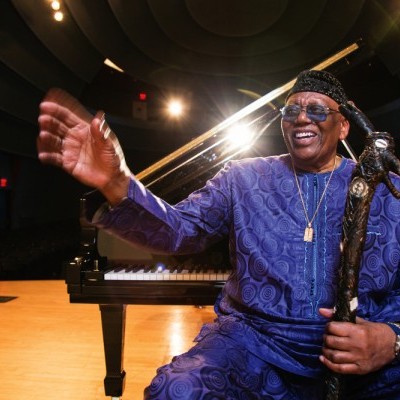
Randy Weston at The New School in New York
(Photo: Jimmy & Dena Katz)“I don’t know how all this happened. I kept doing the same thing, telling the truth about our people.” He mentioned his dear friend and musical alter-ego, Melba Liston (1926–1999), who extrapolated the harmonies and voicings of Weston’s compositions for big bands and combos on such classic albums as Uhuru Afrika, Tanjah, The Spirits Of Our Ancestors, Volcano Blues and Khepera. “We had that same quiet pride in grandma and grandpa, always liking to go back. Most people today don’t know to go back. But I tell them the real power is the root of the tree. Not what you see. What’s under the ground. Which is Mother Africa.”
Weston paused, and said, “Also, I don’t know anything!”
It was impossible not to respond, “Well, you know something.”
He leaned forward. “But that something is so small when you’re dealing with the magic of Africa, the magic of Cuba and Haiti,” he said. “How all these Africans were taken away, and went like this”—he placed his large hands in front of him as though manacled—“and did this”—he splayed his long, tapered fingers downwards, addressing an imaginary piano—“and did this”—moved his hands in a silent drumbeat—“and did this”—cupped his hands around his mouth as if blowing into a horn. “How did that happen? When I first went to Nigeria, I said, ‘Do you know how blessed I am? My ancestors, my great-great-grandmother, came over on a boat from Africa, in chains.’ Next week I’m going to Africa in an airplane. I can put myself in that slave ship. I can go back thousands of years. I can see myself before slavery. I can see myself before corruption. I can see my mother a queen. My father a king.’”
Weston never has traced his genealogy to an African location. His father, Frank Edward Weston, born in 1894, descends from Jamaican Maroons who emigrated to Panama for employment during the construction of the Panama Canal. During the 1910s, he moved to Cuba from Balboa, his hometown; in 1924, he sailed from Havana to New York. He settled in Brooklyn, where he met Weston’s mother, Vivian, who recently had migrated from Southeastern Virginia. Weston depicted the milieu of his formative years in the brilliant tune “African Village Bedford Stuyvesant,” which concluded the recent New School concert, framing the harmonic language of Gillespie and Monk with Nigerian highlife beats.
“I’m a combination of my parents,” Weston explained. “My father, with his Panamanian-Jamaican roots—cooking, music, discipline, pride. My mother was quiet power—by example with the black church. They broke up when I was little. I’d be with my father during the week, and learned about Marcus Garvey, about Africa. On the weekend, my mother would take me to the movies, and on Sunday, take me to the black church, the most swinging place of all. We had calypso dances, blues groups on the corner. We could get lessons on piano or trumpet or violin in black institutions. Our parents took us to hear Duke, and Mary Lou Williams with Andy Kirk and Jimmy Lunceford.”
He was 13 when Coleman Hawkins’ iconic “Body And Soul” recording hit the streets. “I bought three copies, and kept two in cellophane,” Weston said. “I tried to play his solo on the piano. He’s the real deal for me. How do you go from Mamie Smith to Monk? I also tried to play like Basie. But only Basie had that sound, that touch, that when-not-to-play. He was also a stride pianist—like Monk was a stride pianist, but they created something different. You take the black church, the calypso, the blues, Duke, Basie, Art Tatum, put them in a pot and stir them up, and add Africa: That’s Randy Weston.”
What also characterizes Weston, in pianist/keyboardist Marc Cary’s view, is an alchemical ability to put tone, texture and rhythm at the service of his stories. “I put Randy with Duke and Earl Hines, coming out of them into some futuristic stuff,” Cary said. “He knows so much piano history, he can play whatever he wants. What he chose to be as a pianist fits what he’s trying to do. He’s not flamboyant. He approaches the instrument to communicate, through the language we know as jazz and beyond. And his left hand is always creating; all his songs have a dope bass line.”
Danilo Pérez, who hosted Weston at the Panama Jazz Festival this year and in 2006, said he admires his “orchestral approach, so connected to the drums and the flow of rhythmic development.” Pérez continued: “There’s always a dance to his playing; he completely controls the motion of the groove. There’s also the gravity of his sound, like nobody else. You can copy one of his chords, but it doesn’t sound the same. Like Monk and Duke, he creates compositions that stay with you, that feed his persona as an improviser, and always sound like a blues song. His music is so inclusive; you feel like you’re in a tribe.”
Unlike most of his generational peers, Weston steered away from bebop. “I loved Bud Powell, but not to play like him,” he said. “That wasn’t my way. I was closer to blues pianists. I adored Nat Cole, too.” After hearing Monk’s recorded debut on a 1944 Hawkins quartet recording, Weston said he “realized that Monk was the direction I wanted to go, and back to Ellington, back to Basie. Lester Young always said, ‘What’s your story?’ That’s the African American tradition. These giants had maybe four bars or eight bars to take a solo, but they had to tell a story, like the phrase Prez played on ‘One O’Clock Jump’ with Basie’s band—or Freddie Webster, when he did ‘You’re Not The Kind’ with Sarah Vaughan—but what a story!”
In 1944, Weston was a recent graduate of Brooklyn’s Boys High School, playing local calypso dances and jump-band gigs. Then he was drafted into the Army. After an eventful tour of duty in which he rose to staff sergeant, he returned to Bed-Stuy in 1947 to take over his father’s first restaurant, Trios, on Sumner Avenue, where he maintained a jukebox filled with everything from Satchmo to Stravinsky.
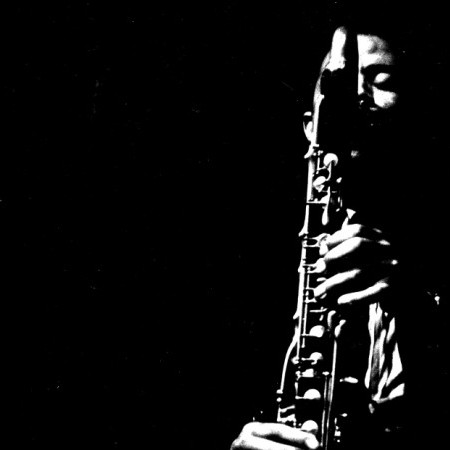
Eric Dolphy (1928–1964)
(Photo: DownBeat Archives)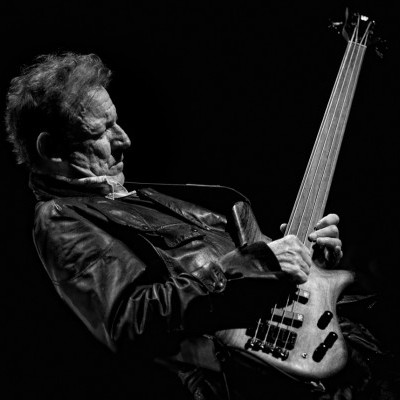
Jack Bruce (1943-2014) continued playing jazz and blues while performing in Cream during the 1960s.
(Photo: Marek Hoffmann)When did you first meet Ginger Baker?
I had this band at Cambridge, St. Johns College, and I heard this amazing band playing in a cellar on campus. That was [saxophonist] Dick Heckstall-Smith with Ginger Baker on the drums. I’d never heard the drums played like that live. It compared to Elvin Jones. Ginger was the loudest drummer I’d ever heard, but also exciting in how he looked and the whole presence. I had to play with him, so I asked if I could sit in. Dick was the bandleader. He must have thought I was a student and said, “No, we don’t allow that without prior arrangement.” I kept asking him and eventually I brought my bass, and carried it through the crowd to the stage. He tried to cut me. He said we were going to do a ballad, “Lover Man,” and said, “You play the melody.” He was amazed when I did it. Then we did a blues. They were surprised I could do that. Then I left. Dick spent about a month trying to find me.
Dick got you into Alexis Korner’s Blues Incorporated, your introduction to the blues, right?
Blues Incorporated was like an early fusion band. We were playing blues but applying our own jazz sensibilities, in the same way [Charles] Mingus did with a lot of his records. When I joined, the band had Charlie Watts on drums, Alexis [on guitar and vocals], Cyril Davies on blues harmonica and Johnny Parker, the pianist for the Humphrey Lyttleton Band.
Did most English jazz musicians frown on Blues Incorporated?
Yeah, all the early British rock records, as with all the early American rock ’n’ roll records, had jazz players slumming, playing sessions. But if you were taking it seriously, you were looked down on. The generation before us—Ronnie Scott, Bobby Wellins—as great as they were, never got what we were about. We thought we had our own identity, because we had time to absorb a lot of those influences, including the new movement of people like Ornette Coleman and Eric Dolphy.
You mentioned Mingus earlier. Were you listening to him a lot?
All the time. I first became aware of Mingus when I worked on an American air force base in Italy when I was about 18. Once a week, there was a jazz evening when people would play records. They had an amazing record library, and me being a bass player, one of the guys said, “You got to hear this.” There it was, Charles Mingus. That changed the direction of my thinking, because he became the person that I wanted to emulate. Before that it was a player like Scott LaFaro, but Mingus was a composer, which was what I wanted to be.
What about Mingus influenced you?
His approach. Maybe a technical and fast approach didn’t interest him or maybe he wasn’t technically equipped to do that. I think he played the bass in the same way that I see the bass in my hands: as an adjunct of myself, not as an instrument. When I was young I was [impressed] by technique, but now the chops are just part of what I do. When Mingus was younger—Jazz At Massey Hall—and listen to Mingus Ah Um later on, the bass is possibly under-recorded, compared to other jazz records of the time. I’m sure he was involved in the mix. He wasn’t trying to put the bass out front.
Cream formed after you left Manfred Mann, Clapton split Mayall’s Bluebreakers and Baker quit Graham Bond. Do you think you revolutionized rock?
Ginger and I were playing a free-jazz improvisational approach within a rock band. When the band started, we all had different ideas about what the band was. Eric thought it was a backing band for his blues guitar, and Ginger—it was basically his band—I don’t know what he thought it was. I felt it was a vehicle for my songs.
There seemed to be jazz motion and spark to several songs you wrote for Cream, and blues underscored everything.
It must all be there, because those were the things that I loved. A song like “I Feel Free” exists in the air of the time. If somebody invents the television, there are another six people who are about to invent it. That’s the same thing with songs. The approach to the pop song that I was trying to do, with Pete Brown’s lyrics, was to come up with some surprising approaches, not the traditional song form.

Bassist William Parker is reaching an audience beyond the commercially restrictive categorization he refers to as the “avant-garde ghetto.”
(Photo: Courtesy of the Artist)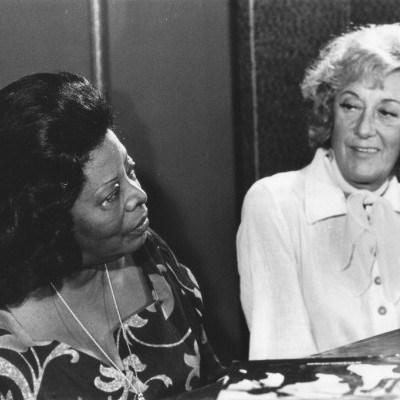
Marian McPartland and Mary Lou Williams in 1978, about 14 years after the two spoke for “Mary Lou Williams: Into The Sun,” which originally was published in DownBeat on Aug. 27, 1964.
(Photo: Courtesy of South Carolina Educational Television)
Here is a woman who is conscientious, introspective, sensitive, a woman who, with her quiet manner and at times almost brusque, noncommittal way of speaking, has been misunderstood, thought to be lacking in warmth and compassion. The reverse is true. She feels keenly the various factions, contradictions, inequalities of the music business, wants to help people, to give of herself. A woman vulnerable. A woman hurt so many times she tends to withdraw from, and be suspicious of, others, unless she knows them well. She has an uncanny way of stripping them of any façade, of cutting through the deceit and shallowness of the sycophants. In many ways she is still confused, still searching, still figuring things out for herself, and in this she has been helped a great deal by her friend, Rev. Anthony Woods.
“I have heard her discuss the aesthetics of music with great penetration. She seems to have an understanding of what is good, of what is beautiful,” Woods said. “She thinks that jazz is becoming superficial, that it’s losing its spiritual feeling. She seems to be aware of a great deal of falsity and affectation, that people are not telling the truth, not saying what they really mean. In her uncomplicated way, she can’t understand how anybody can’t be sincere.”
Several years ago, she started a thrift shop, the proceeds from which go into her Bel Canto Foundation, which she established to help needy musicians. Now more and more people have begun to hear about it and are giving her gifts of clothing and other donations. Besides these activities, much of Mary Lou’s time is taken up with writing and arranging, plus her daily attendance at mass and care of her sister’s little boy, who usually has the run of her apartment.
Being so busy does not seem to faze her, but it has been a long time since she has “come out” to play in public. She has made a few sporadic appearances in the past few years—twice at New York City’s Wells’ Supper Club and once each at the Embers and the Composer (where I worked opposite her), plus the Palace Hotel in San Francisco. These engagements have been of short duration and have not been too satisfying to her. She seems to feel the pressures of a musician’s life keenly, to become disillusioned, and then, as she expresses it, “goes back in”—back to her other world, to her apartment, to write, teach and pray.
During her long stays at home, Mary Lou’s talent certainly has not been lying fallow. She has composed a poignant minor blues she calls “Dirge Blues,” which she wrote at the time of President John F. Kennedy’s assassination. She is skillful in creating a mood—the feeling of this piece is tragic and gloomy. In its simplicity, it is very touching. She has put out an extended-play record on her own label, Mary Records, consisting of three tunes, arranged for 16 voices and her trio: “Summertime,” “The Devil” and “St. Martin de Porres.” The last tune, with a lyric by Woods, achieves an airy, ethereal quality by its voice blending. She has made a single, also on her own label, of “My Blue Heaven.” She makes this warhorse like new again, with a light, witty, Latin-based treatment. Obviously, she has lost none of her powers of inventiveness. One has only to listen to her recordings of years ago, “Froggy Bottom,” “Roll ’Em” and “Cloudy,” to realize how her style has evolved with the years and how she has kept her playing and her thinking contemporary.
She composed one of the first (if not the first) jazz waltzes—“Mary’s Waltz”—many years ago, yet she has never got the proper credit or recognition for this or for any of her several innovations that have been brought to the fore later by other musicians. Her importance, her influence, cannot be denied. She has written many beautiful tunes that are seldom heard, seldom recorded.
It has been said of Mary Lou Williams that she plays in clichés, but she has so much to offer of her own that I feel that her occasional use of cliché is more tongue-in-cheek commentary than lack of inventiveness. She has been labeled by some a fanatic. To others, she is only an extremely dedicated musician. Yet perhaps there is something of the fanatic in her, as seen in her constant search for musicians with whom she can be compatible—in a way, she reminds one of a mother with her children, alternately scolding or praising them, trying to teach them, trying to instill her beliefs in them, expecting great things of them. Yet it is said too that she is a hard taskmistress, demanding and intolerant.
“Anything you are shows up in your music ... .”
Her feelings about the new freedom in jazz cannot quite be concealed, though she tries to be noncommittal.
“I just haven’t got it figured out,” she said. “To each his own, I guess, but if I can’t hear chords … some sort of melody … well, if they think they’re giving out a good sound, that’s their business. Maybe they think we’re squares? Or else it’s some sort of protest? Take a guy like Coltrane: He knows what he’s doing. But these people without a knowledge of music, it’s like—well, it’s a very neurotic world. People are nervous. Seems like everyone I know is nervous. It must be the pressures of the world. Musicians are very sensitive, and they really don’t know what to do about it. I don’t mean they’re nervous about playing, but in their lives. I try to act relaxed because that’s been my training, but I’m more nervous than anyone you ever knew—inside. Oh, I get mad, sometimes, but I expel it, get it out right away.”
When one is discussing Mary Lou with other musicians, her sense of time always prompts admiration.
“I’ve heard her a few times at the Hickory House, and I’m amazed at her rhythmic approach more than anything else,” said fellow pianist Billy Taylor. “She has the most consistent way of swinging; even with a rhythm section that isn’t quite hanging together, she can make it swing, and this is really remarkable. It seems that no matter what’s going on around her, she can get this thing going. When in doubt—swing! As a pianist, I naturally listen a lot to the rhythm section, and sometimes I’ll notice that they’re not together, and I’ll think to myself, ‘Come on!—let’s give her some support,’ but she’ll be making it anyway. Not as many jazz pianists have this ability as do other instrumentalists. I mean this rhythmic propulsion. She’s not like an Erroll Garner or an Oscar Peterson, who overpower the rhythm section. On the contrary, she plays so subtly she seems to be able to isolate herself and swing, though the others may not be. Considering all the psychological things that go into swinging, she’s even more remarkable. You could wake her up out of a dead sleep, and she’d start swinging without even thinking about it.
“Mary Lou is looking for perfection. On the rare occasions when she had this chemical thing going that can happen between three people, she’s been so excited by it that she wants it all the time. Swinging is so natural to her that she can’t understand why it isn’t necessarily natural to everybody all the time. She figures that they can do it, but they won’t; she thinks to herself, ‘Anybody I hire should be able to do this, so why don’t they?’ Most people associate the verb ‘to swing’ with the degree of loudness that they attain, but she refutes it—she’ll take something pianissimo and swing just as hard as if it were double forte. She’s one of the very few people I know that can do this, consistently swing in any context.”
“Anything you are shows up in your music ... .”
“She lives in a world all her own, a dream world, and she doesn’t want anything to spoil it,” said her longtime friend and admirer, Hickory House press agent Joe Morgan. “She inspires a great devotion in people—she has many followers, but there are just as many people who look at her askance because they cannot understand her high artistic level. She is so dedicated, and the fact that her standards are high makes her very hard to please. In her accompaniment she wants to hear certain changes behind her, certain lines, certain rhythms, and it’s difficult for a strongly individualistic bass player or drummer, with ideas of his own, to conform to her standards. But her motive, her burning desire is for creation. In a way, she’s like a little child with a doll house, setting up house in the piano, like a little girl on her own chair, not even thinking about what is going on around her. Sometimes, she doesn’t hear what you’re saying—doesn’t even see you—because her mind is a million miles away. People don’t understand that if she doesn’t speak to them, she doesn’t mean to be rude ... .”
Mary Lou herself said, “When people tell me that I’m playing good, and I don’t think I am, I want to run away from them, not speak to them.”
Being so intensely self-critical, she has scant regard for musicians who, in her opinion, lack sufficient dedication to their instruments.
“So many musicians nowadays push too hard, spread themselves too thin, doing all kinds of things when they should be home practicing,” she said. “People who push that hard never really get anywhere, but if you know your instrument, well, you can lay back and let someone pick you out. If you’re doing too many things, there’s no chance for your creativeness to come through.
“When the rhythm section starts composing things on the stand, they’ll push me into composing. But if they are not together, you must let them walk, let them play by themselves, to find out where they are. Then when they’re really tight, you come in and play. But if they’re still not making it, then play another tune, play a ballad. When you hear me play chimes, it’s because the rhythm isn’t right, and you’ve got to bring a section together to let them hear themselves. But if, after this, they still don’t make it, then I’ll start cussing!
“Now that I’m out here, I’m beginning to like it. I haven’t been late for the job, and I haven’t wanted to leave, and that’s unusual for me. Sometimes in the past, I’ve got fed up, and I would walk out and say, ‘You better get yourself another piano player.’ But this time it’s fun for me. Sometimes, I’m tired, but I haven’t had that feeling of wanting to give up. ... I think this time that I’m out here to stay.”
It is almost as if she sees herself emerging from darkness into the sunlight, to bask in the warmth of feeling generated by friends, admirers and family. Gazing out over the piano, her pleasure in playing comes through clearly. DB

In 2013, ECM reissued Charles Lloyd’s first five albums for the imprint—Fish Out Of Water, Notes From Big Sur, The Call, All My Relations and Canto—as a box set.
(Photo: Courtesy Kurland Agency)Your wife has made a full-length documentary about you that is touring film festivals. How does it feel to be the subject of a documentary?
This is my life from the get-go. It’s so amazing and such a blessing, all the love and care that she and [filmmaker] Jeffrey Morse put into it. I’m really blessed. After I was gone for all those years, when I came back, the music business man said, “You have to get to the back of the line.” I said, “Did I not bring something? I’ve been away polishing the diamond sutras.” And he said, “Music is only 10 percent of this stuff.” I immediately knew that wasn’t the arena for me. A friend said, “You should record for ECM.”
And now, 24 years later, you still record for ECM. What has that relationship been like?
It’s been beautiful, because I’ve been able to unfold the music. I’ve had a home, a place that allows my heart to grow and report back to music lovers around the world the condition of the condition. There’s a saying in India: Fame and fortune is like a hog plum. It’s big and it looks really juicy. You bite into it and it’ll break your teeth off, ’cause it’s all pit and skin. You have to have the love inside of you for it. You have to have the grace to be met. I’ve found in life if you are sincere, you will be met , because what you are looking for is you. We have our wings. We do what we do, and I think it’s a state of grace to be able to have something to report and to be inspired to do it and then to have a home [in which] to do it. All of that needs to come togeth er. They keep things in print. Many of my recordings from the past, you can’t find them now. The first record I made for ECM was Fish Out Of Water, and that was a beautiful, special record ing to me. I had been in silence for a decade, living in the forest. Out of that silence this sound came, and it’s been great to have a company where people are all there because they love music. You have to search in life, and I encourage young people to search for quality, not the least- common denominator. That’s been around a long time, and they’ll smoke your eyelids.
Your first five records for ECM, from 1989 to 1996, are being reissued as a box set. Did you revisit the records before their re-release?
No. Sometimes I’ll hear them in my life experience, in my travel. It always touches me that the work has been and continues to be around. My thing is about always going forward. Occasionally, I hear Fish Out Of Water or The Call. They still live and they’re still fresh. That’s the reward, that the music is still out there and people can still get to it. I’m proud of that.
There are quite a few standards and a few rock songs on Hagar’s Song. How did you come to choose them?
There are these beautiful standards, some I’ve carried with me since childhood. I’m very moved by great composers like Billy Strayhorn and Duke Ellington. There are so many greats in our field, but I’m particularly drawn to them. What I love about Strayhorn and Ellington is the rich harmonic territory and deep melancholia, things that touch me deeply in a place where my heart is. Those two went naturally together. Jason’s wife [Alicia Hall Moran] had just been on Broadway in Porgy And Bess. I made a nod to her. I recorded “Bess, You Is My Woman Now.” There was a song when I was kid sung by Chris Connor called “All About Ronnie.” I recorded that because that was a childhood anthem to me. It kind of spoke to me in a way that Billie Holiday speaks to me. I sang her song “You’ve Changed.”
My friend Levon Helm had just ascended a day or so before we went into the studio. I was affected by that. I remember him warmly and I wanted to sing “I Shall Be Released” to him and to all of us.
The five-part “Hagar Suite” is the focal point of the album. Can you explain some of the story behind it?
That is a set of pieces that are difficult to talk about. It’s a suite for my great-great-grandmother Hagar, who lived in the early 1800s. The thing that saddens me so much is that I know a lot about my grandmother and my great-grandmother because my great-grandmother was Sally Sunflower Whitecloud. Hagar was my great-great-grandmother, and she was taken from her family in lower Mississippi at the age of 10 up to Bolivar, Tennessee, and sold into slavery. I want us all to think about what it is to take a 10-year-old child. Slavery is horrendous to begin with and it still goes on around the world. I think that we are all God’s children and we need to rise above this kind of mentality of plunder and thousands of years of throwing rocks at each other. Maybe I’m not meant for these times, but that must not be so, because I’m still here. I wanted to sing a song to her. I wanted to deal with her being alone and being sold on the auction block, a 10-year-old kid alone, away from her parents. It’s a very tragic story. It’s my way of addressing the ancestors.
How old were you when you learned the story?
I only learned that story within the last year or two—from Dorothy, who had made a film on my grandfather who had lived in Mississippi. She went to the courthouse and checked all the records. She uncovered this and it profoundly affected me as an adult. So, I had to address it. It was in my soul and it’s ongoing. This is a process. I’ve never gotten good enough to quit. I’m still striving to make that sound which would allow me to go into the forest and put on a loin cloth and put it down. I haven’t gotten to that place. In my mind’s ear I hear the sound and it’s always calling me.
Are there any musicians who were good enough to quit?
That’s not for me to say. I’ve heard many geniuses and greats who seemed to have it all. I remember when I was in New York in my twenties, hearing Johnny Hodges with Duke Ellington and Harry Carney. Phineas Newborn turned me on to Charlie Parker at age 9. All of my life I have heard these greats, but it’s for them to say. It’s not about quitting. It’s about going forward.
Sleepwalking isn’t something I’m interested in. We are all spirits on a human journey. We’re passing through here. This is not our home. You can’t build a house on a bridge. Divinity is our birthright, but we get hypnotized by the world and think there is something out there of the glass bead game that’s intriguing. Mostly it’s a lot of detours. Most of what they show us about civilization is not the direct path. There is always something about rising above. You fall many times in life, but the important thing is to get up and keep moving forward. DB
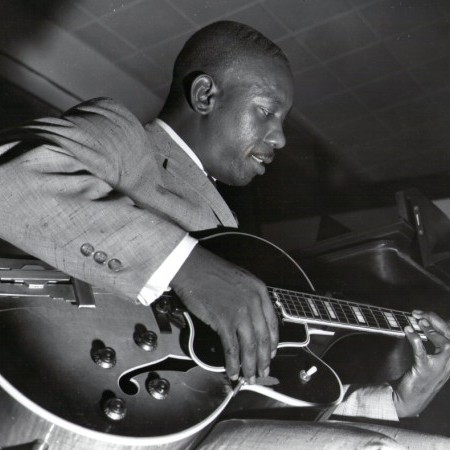
Wes Montgomery plays at the Essex House Hotel in Indianapolis in 1959.
(Photo: ©Duncan Schiedt/Courtesy of Resonance Records)In that 1968 DownBeat interview, Montgomery credited Adderley for raving about him to Riverside Records founders Bill Grauer and Orrin Keepnews — leading to the prominent record deal that would take him out of Indianapolis a decade earlier. That was when the guitarist was holding court at the Missile Room on Indiana Avenue. In the liner notes to The Wes Montgomery Trio, Keepnews claimed, “I first heard about Wes in no uncertain terms and twice on the same day: to be precise, on September 17, 1959.” He went on to add that the same day Adderley “charged into the Riverside office” urging him to sign the guitarist, Keepnews read Schuller’s article, “Indiana Renaissance,” published in the September 1959 issue of The Jazz Review.
Schuller was effusive in discussing Montgomery’s playing, describing techniques that have since become familiar to every jazz guitarist. As Montgomery performed without a pick, his solos would move from introducing a single-line melody to using octaves as a way of playing in different registers simultaneously and then concluding with block chords — all of which were tied together with a perfect sense of form and executed relatively quietly. Varying accounts mention that Montgomery’s subdued volume derived from his not wanting to disturb either his wife, or his neighbors, while practicing.
Schuller wrote, “In its totality, it is playing that combines the perfect choice of notes — i.e. purity of creative ideas — with a technical prowess that the jazz of yesteryear, the jazz of the jam sessions and cutting contests had, but that, I’m afraid, the jazz of today has almost completely lost.”
What’s striking is that Keepnews and Riverside worked quickly enough to sign Montgomery and bring him, along with pianist Rhyne and drummer Parker, into the studio in only three weeks to record The Wes Montgomery Trio (aka A Dynamic New Sound) in October 1959. Considering how disciplined and industrious the guitarist was, he must have prepared himself for this transition onto a larger jazz playing field. That’s where the recordings that make up Echoes Of Indiana Avenue come in.
Producer Michael Cuscuna, who would play a significant role in finding and helping release the recordings decades later, believes that the tapes were made as audition reels for Montgomery. It’s likely, then, that they would have been circulating the following year.
“They were [recorded] live, but done professionally live,” Cuscuna explained. “It wasn’t a small reel-to-reel at a table in the back of a club. So they were done for Wes, his manager, or whoever. They sound like they were made with the idea of getting Wes a record deal.”
The performances on Echoes Of Indiana Avenue illustrate what Schuller described in that 1959 article, though it doesn’t take too deep a listen to discern the congeniality that Indianapolis veterans remember. On a terrific interpretation of “‘Round Midnight,” Montgomery builds up from a deliberate pace alongside Rhyne’s organ lines, and their blend continually stops and starts in unexpected moments, yet the constant surprises conclude with a perfect sense of resolution. At other times, like on “Take The ‘A’ Train,” Montgomery delivers his uncanny technique at a tempo that remains startling. Echoes concludes with “After Hours Blues,” an apparently spontaneous jam in front of a club audience where Montgomery revels in strong chords and distorted effects. Whoever is in the audience clearly loves it all.
And then the tapes vanished for 50 years.
ConnectIcut, California and Cyberspace, 2008–’09
As a producer for Mosaic Records, and instigator of many historical releases, Cuscuna has seen not just his share of important albums, but also numerous projects that never moved past the idea stage. In 2008, someone told him that guitarist Jim Greeninger had put up early tapes of Montgomery for sale in an eBay auction. The tapes went unsold, but Cuscuna was excited about what he heard, particularly because unreleased Montgomery tapes are such a rarity.
“What was evident was that without any identifying mannerism, here was a guy who could just burn,” Cuscuna said. “He was harmonic and melodic and swung like hell. What comes through here is a musician who is a full- throttle improviser, who is accomplished on his instrument, and has a great range.”
Cuscuna bought the tapes from Greeninger with the intention of passing them on to Blue Note for release. But his timing was not ideal.
The private equity company Terra Firma had bought Blue Note’s parent company, EMI. “Everything there slipped into complete dysfunction,” Cuscuna said.
“Terra Firma disconnected catalog from each of the labels and tore the labels apart,” he added. “We’d go to meetings and people would discuss it or forget to discuss it, and the layers of bureaucracy were just getting worse.”
So, Cuscuna offered the tapes to George Klabin and Zev Feldman at Los Angeles-based Resonance Records. All of them worked to nail down the details of the sessions. They called in additional experts, like Baker, who helped point out the other musicians.
“We had good luck identifying the players simply because there was a limited number of people who were playing at Wes’ level at that time,” Baker said. “Part of it is simply knowing their associates, knowing who they normally play with and knowing the idiosyncrasies of the players themselves. I recognized Sonny Johnson on drums, and Mingo would have been more likely to play something more advanced than swing, more repeated notes from time to time.”
Montgomery’s estate was eager to get on board with the project. Buddy Montgomery’s widow, Ann Montgomery, has expressed that she’s glad this release provides another example of all three brothers’ musical accomplishment.
Cuscuna contends that in the future, independent labels like Resonance will have more flexibility than the majors in terms of clearing all the legal hurdles required to issue such previously unavailable recordings.
The surviving participants on Echoes Of Indiana Avenue are just excited that it is out there and presents the personality that they always will remember.
“Wes was a person who never stopped,” Jones said. “He played for everybody, and he loved everybody. He would always have a smile and was always there for you.” DB
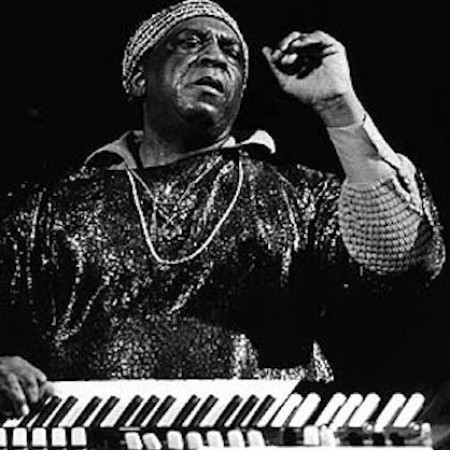
Sun Ra
(Photo: DownBeat Archives)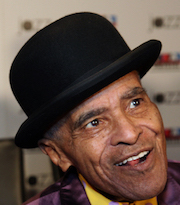
1993 NEA Jazz Master Jon Hendricks at the 2014 NEA Jazz Masters event.
(Photo: Michael G. Stewart, courtesy of National Endowment for the Arts)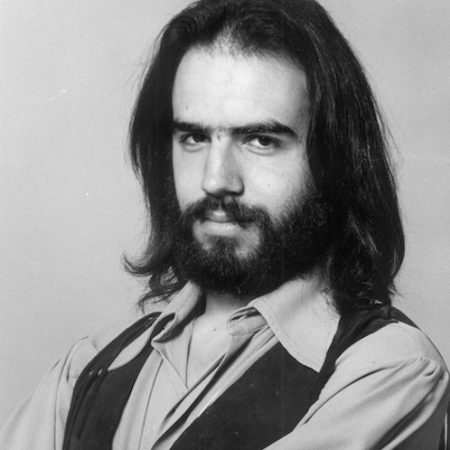
Randy Brecker
(Photo: DownBeat Archive)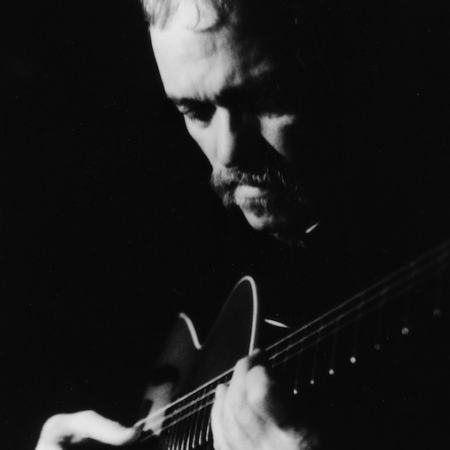
John Abercrombie (1944–2017)
(Photo: © Deborah Feingold/ECM Records)On the new disc, Abercrombie creates a compassionate, very personal reflection on the integral music of his awakening years as a jazz guitarist. Rather than paying tribute to one artist, he zeroes in on songs from albums that influenced him, including Davis’ Kind Of Blue, Rollins’ The Bridge, Coleman’s This Is Our Music, Evans’ Interplay and John Coltrane’s Crescent—all music that Abercrombie says makes for “a celebration of an era when the musicians were stretching the forms.”
“My favorite record of all time is The Bridge,” Abercrombie says. “I first heard it in 1962 at a record store in Port Chester, New York. I saw the picture of Sonny on the cover. He had a strange haircut, jacket and his tenor saxophone. I asked the guy in the shop to play it for me, and the first track was ‘Without A Song,’ with Sonny playing the melody and Jim playing a little counterpoint. Remember the little girl from The Exorcist when her head spins around 360 degrees? That’s what happened to me. And I kept thinking, ‘What are they doing?’ The sound grabbed me, and it was at that point that I knew what I wanted to do more than anything. Those moments, they just happen. You can’t look for them. They look for you, and wham!”
Abercrombie knew he needed to pay tribute to that tune, and he complemented it with his own composition “Within A Song,” which opens the track with an upbeat, dance-like guitar/tenor sax connection. That transforms into “Without A Song,” before returning to the original head.
Abercrombie also includes the Bridge track “Where Are You.” He gives further salutation to Hall by including a take on Sergio Mihanovich’s lyrical song “Sometime Ago,” which was a staple of the quartet Hall and trumpeter Art Farmer co-led (featuring bassist Steve Swallow and drummer Pete La Roca). “Jim was a big influence on me, in the way he played and worked inside of a band,” Abercrombie says. “The Hall-Farmer group was my favorite, especially live.”
Also featured on Within A Song is a nod to Kind Of Blue with a reflective-to-ecstatic rendition of “Flamenco Sketches.” Abercrombie didn’t discover the 1959 album until he was at Berklee: “People were talking about modes while I was still in Barney Kessel-Tal Farlow land and trying to figure out how to play a root-position chord.”
Abercrombie approached the song by taking the form and improvising with it, a lesson he learned when playing with Gil Evans at the Village Vanguard years before. “We were playing ‘Summertime’ and I didn’t state the melody, but improvised around it. After the set, I apologized to Gil for doing that, and he said, ‘Don’t apologize. Who cares? Gershwin’s dead, so you can make your own melody.’”
On “Flamenco Sketches,” Abercrombie and Lovano solo above and below each other. “We’re not comping,” the guitarist says. “We’re playing together without stepping on each other’s toes. It’s more a commentary. That’s the way the entire session worked, which made it such an easy record to do.”
Other tracks recorded in homage to classic ’60s jazz LPs include “Wise One” (from Crescent), the blues-swinging “Interplay” (the title track from the Evans album) and “Blues Connotation” (from This Is Our Music). Abercrombie contributes two originals that he says have nothing to do with the era: “Easy Reader,” a sober waltz with yearning tenor, and the playful “Nick Of Time,” with intertwining guitar and tenor sax lines.
While Within A Song is powered on the front line by Abercrombie and Lovano, the album also trains a spotlight on the rhythm team’s prowess. “Joey and Drew can change on a dime,” Abercrombie says. “They can play the most straightahead or go into the outer limits. They are two guys who are adaptable and ready to change.”
The guitarist has known Baron for a long time. Originally the default drummer of an Abercrombie quartet when the original drummer jumped ship to tour on the eve of a recording session, Baron became “a blessing in disguise,” says Abercrombie, for “his unusual playing that’s so colorful and out of the ordinary. He gets so involved in my music and is full of suggestions and ideas.”
Baron returns the compliments. “John is one of those guys who models an aesthetic of making music that’s somewhat vanished from the scene,” he says. “He’s particularly brilliant in the way he carries a foundation of the tradition from a period, like on the new album where we pay tribute to a time without playing like the people then. When he plays, you can hear the connection to the roots of jazz. Even though he’s not given due credit, he’s opened the door for a lot of people. John doesn’t wear it on his sleeve. He doesn’t lecture. He makes music in the moment, which is a rare trait.”
As for the other half of the rhythm section, Abercrombie appreciates how Gress plays bass in a dependable way that’s also very modern. “Drew is linked to the tradition,” he says. Gress, in turn, values the freedom that Abercrombie brings to a session. “John doesn’t say much about what happens,” he explains. “It’s about the conversations we have, not about agendas or judgment. [Instead], it’s, let’s talk with our instruments. It’s nice to know that still exists.”
Gress feels that Abercrombie’s guitar tone transcends his playing. “He’s immediately recognizable,” Gress says. “He keeps the group sensibility in mind even when he solos. He can really shred on his instrument. He takes chances to break new territory.” Gress adds, “John’s an important musician in the sense that he doesn’t want jazz to become calcified. He’s game for whatever. It’s hard to keep up with the energy he has. I hope I can be like him when I grow up.”
Growing up is a notion that Abercrombie doesn’t appear to subscribe to. He’s still evolving, still making his way. He vividly recalls those days when he felt behind the times, in skills and style. While not outwardly a rule-breaker, the guitarist has quietly made it his goal to subvert the music from the inside—not with a brash blast such as in the early Gateway days, but from within. DB

Clark Terry (1920–2015)
(Photo: DownBeat Archive)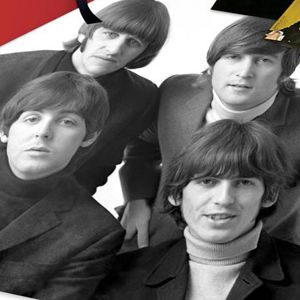
The Beatles
(Photo: Courtesy the artist)
Art Blakey
(Photo: DownBeat Archives/R. Howard)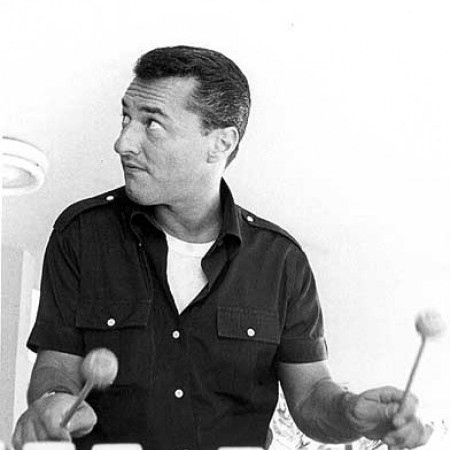
Terry Gibbs
It wasn’t long before Gibbs found a new home for the band. This club was also on Sunset Boulevard, called the Sundown, where the band began working Mondays and Tuesdays every week. Soon after, Sunday nights were added.
With time out for a fortnight at the Dunes Hotel in Las Vegas, Nev., the Gibbs band remained based at the Sundown for 18 months. Las Vegas was as far east as it ever traveled. For that engagement, Gibbs said, the band was paid $5,000 a week; by the time all the expenses had been settled, he wound up with $111 at the close of the job. “But,” Gibbs added, “it was worth it. We had Jimmy Witherspoon with us at the Dunes, making it even more of a ball.”
While Gibbs concentrated on building the band, his bank account took a heavy beating.
“I had to give up so much work with the quartet,” he explained, “that I figured it was costing me $1,000 a month to keep the band going. In all, I had to give up about $20,000 in work with the quartet. During the previous years, when tax time came around, I always had to come up with additional money for Internal Revenue. The one year I had the band working study, I got back a check for $1,100 from the government.
“But I’ve been in this business 31 years, and I’ve never been so happy losing money in my life.”
Although the band presently is without a home or any reasonable facsimile of steady work, Gibbs refuses to abandon his idée fixe. He has almost 100 arrangements in his library at present, and the albums will shout on. The latest, Explosion, on Mercury, will be released shortly.
Meanwhile, the “guys in the band”—Gibbs refuses to use the term “sidemen”—are standing by in Hollywood, most of them busy with studio work, while the vibist tours with the quartet in the East.
“I must work with my little group,” Gibbs insisted. “I love working with the quartet. Eventually, I want to have a quartet within the big band but not made of some of the guys in the band. A separate group.
“And I’m looking for a singer. Probably a girl singer. And I don’t know yet what I’d like her to sound like—but I’ll know when I hear her.
“I’m going to see what I can do with the big band in the East. Then, if I see something promising, I’m going to call Mel Lewis and the rest of the guys. Of course, it depends on the money I have to work with, so it’s very hard to predict what’ll happen.”
Gibbs’ “guys in the band” constitute a unique group in that they are, to a man, musicians skilled in the most exacting studio work, and most derive their livelihoods there-from, yet they retain a genuine jazz freshness both as individuals and a unit.
“It’s a fun band,” Gibbs said. “For example, during our first few tunes of the evening, when the place isn’t crowded, the guys applaud one another when they play solos. It’s like a ball club. When a player hits a home run, he gets a pat on the back. It’s that way in the band.”
Mel Lewis, the time-keeping cornerstone of the Gibbs band, made the following flat statement: “This is the greatest swing band I’ve ever played in.”
“It saved my life, musically,” the drummer continued, “and the same goes for the rest of the guys.”
“Who was hiring big bands to work in L.A. clubs,” Lewis asked rhetorically, “before we went to the Seville? Since then, several big bands have worked clubs in L.A., but we were the only band that did any business in a club. We started the big-band era in Los Angeles.”
Gibbs outlined the most important ingredients in a musically successful big-band.
“A drummer!” he explained. “A good drummer to hold the band together. All the great bands had great drummers—Basie had Jo Jones; Tommy Dorsey had Buddy Rich; Woody had Dave Tough.
“And then a good lead trumpet player. These are the guys who sort of run the band. They lay the time down for the band.
“We have a very great brass section. Four of the trumpets play lead—Ray Triscari, Al Porcino, Frank Higgins and Stu Williamson. And Conte Candoli, along with Dizzy Gillespie, is the best big-band jazz trumpet player.
“Three of the trombones play lead. Frank Rosolino, Vern Friley and Bob Edmondson keep everything going.”
Of the lead alto man, Joe Maini, Gibbs cannot sing enough praises: “Point to Joe—for anything—and he can do it beautifully. Jazz or lead, doesn’t matter.”
Rounding out the sax section are tenor men Bill Perkins and Richie Kamuca; Charlie Kennedy, second and jazz alto saxophone, and Jack Nimitz, baritone saxophone.
In the rhythm section are pianist Pat Moran, for several years leader of her own quartet; bassist Buddy Clark, who with drummer Lewis toured with the Gerry Mulligan big band during the last two years; and Lewis, who, according to Gibbs, “holds any band together.”
Whenever its necessary to substitute because of illness or other Acts of God, Lou Levy generally gets the call for the piano chair; Frank Capp or Larry Bunker on drums (and the Bunker-Gibbs vibes duets on occasion have been memorable); Johnny Audino, Jack Sheldon, or Ray Linn in the trumpet section; and Bil Holman, Teddy Edwards or Bud Shank in the saxophones.
Why, in Gibbs’ opinion, did the jazz critics vote for the band that is (a) non-full-time and (b) whose appeal outside Los Angeles-Hollywood lies wholly within the grooves of long-play records?
“On the strength of those records, I would think,” he said. Then he added, “If they liked the band on the albums, they would like it 20 times better if they heard it in person.”
DB

Larry Coryell performs at The Jazz Kitchen in Indianapolis on May 23, 2015.
He subsequently joined the Gary Burton Quartet and made more musical history in April 1967 by playing on Duster, another seminal jazz-rock album. His debut as a leader came the following year, with the Vanguard LP Lady Coryell, where he’s joined by Moses, Jimmy Garrison (bass) and Elvin Jones (drums).
Coryell participated in yet another landmark recording with his 1970 album Spaces, which featured an all-star cast of John McLaughlin, Chick Corea, Miroslav Vitous and Billy Cobham, well before the formation of Weather Report, Return To Forever or the Mahavishnu Orchestra.
At the time of DownBeat’s post-election phone call to Coryell in Orlando, he was busy working on a piano reduction for his next opera, an adaptation of Leo Tolstoy’s Anna Karenina. His first opera, based on Tolstoy’s War and Peace, received its world premiere in Slovenia in 2013 and was staged in Russia in 2014, with help from the U.S. Embassy there. “It went over huge in Russia,” he said. “The audience went absolutely crazy. And it was also a good diplomatic exercise in showing how through love of music and culture you can have a dialogue between what are ostensibly enemies.”
The world premiere for Coryell’s Anna Karenina will take place in May. Plans are already in place to stage his third opera, Ulysses, based on the James Joyce novel, in Dublin, Ireland, on June 16, 2018, which is officially Bloomsday, an annual commemoration and celebration of the life of the Irish author.
“Fortunately, I obtained from one of his family members while in Ireland a ‘companion book’ telling how to read the original, in terms of what he means or may mean,” Coryell said. “So, I am slowly extracting content from the book and converting it to music.”
Opera, it turns out, is a relatively recent passion for the godfather of fusion guitar. The seed was planted several years ago when he first heard Barney Kessel’s 1959 Contemporary album Carmen, on which the great guitarist adapted pieces from the Georges Bizet opera. But it wasn’t until 2010, when Coryell encountered a series of Maria Callas performances on German TV, via YouTube, that the opera bug bit hard. “I was enamored by these videos of Callas,” he said. “She had a tone like Ben Webster … it was so deep, just unbelievable. She had to sit through eight or nine minutes of the overture, but when she started to sing, she was truly transfigured. And it reminded me of when I saw Wes play. When you see a genius like a Wes Montgomery or a Maria Callas, they have this look when they’re in the heat of battle. It’s the look of eagles, and I saw it on her.”
Between the Eleventh House reunion, the solo project and his immersion into opera, Coryell was thriving artistically through the first half of 2016. But all his forward momentum came to a crashing halt for a period of three months—from June to August.
“On June 2, I had a sinus operation that went wrong,” he explained. “The doctor went into my brain by accident with the laser. So I had brain damage. My family—especially my wife—freaked out. It caused unbelievable emotional stress for them. And for one month I was just unresponsive. My wife brought me home and did all these antibiotic drips on me. We had to do this day and night, and it wore her out. I don’t remember everything, but at one point Tracey told me, ‘You almost died twice.’ When you have something like that happen to you and then you come back from it, you have a tremendous appreciation for your life.”
So how did Coryell make it through this dark period?
“Nam-myoho-renge-kyo, baby,” he said with chuckle, reciting the Buddhist mantra. “All the members in Orlando chanted for me when I couldn’t chant for myself. It took me three months, but I came back. Now I’m back 100 percent and I think I’m playing better.”
Coryell’s attempt to regain the muscle memory in his hands was an arduous process that involved endless hours of practicing on his instrument at home. “I couldn’t play,” he recalled. “I was so incapacitated, I had no coordination. It was scary. In the beginning, I would take a nylon-string guitar and go into the bathroom, where there would be more reverb, and I would just play Bach—this one lute prelude that I learned in my first guitar lesson way back in New York in the fall of 1965. At first, I just sounded awful. Nothing was working. I had to work long and hard to get the muscle memory back.”
Throughout the month of August, Coryell continued his intensive woodshedding process at his brother Jim’s house in Chicago. “I practiced and practiced on a black Cort guitar, a Larry Coryell signature model I had given him. Whenever I go to Chicago, I just borrow my brother’s guitar. I shedded a ton on that axe.”
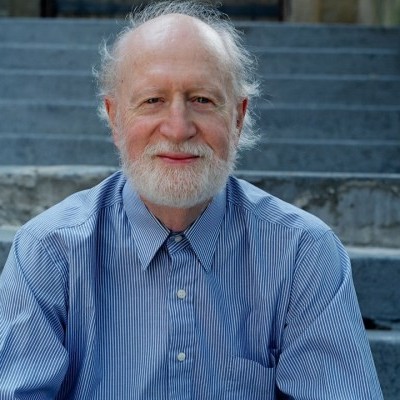
Mose Allison
(Photo: Michael Wilson)JD: Do you have a regular band now?
MA: No. Just pickup musicians.
JD: What would be your ideal band?
MA: That’s hard to say. I actually prefer a trio because it gives me more freedom. Once in a while, I’ll have a guitar player, when I find one I like. Now I’m trying to figure out a band for vocal backgrounds. I don’t know how many pieces it should be. I’m way behind. I’m hanging it up myself trying to decide what I want. Atlantic wants something with a bigger band for vocal backgrounds. I’ve been working on it for months—whether to use two horns, four horns, six horns. I just don’t know. I did another album with a couple of horns and it didn’t come off right. The timbre of my voice gets wiped out by certain instruments. I want definition between my vocals and the background.
JD: You’ve worked with lots of sidemen. Who are your favorites?
MA: It varies. They go through phases and I go through phases. There’s one level of players that are always good. Currently, I’ve been using Walter Booker on bass, and on drums I have had real good results with Billy Higgins and Pete LaRoca.
JD: Who are some guitar players that you like?
MA: I like Sonny Greenwich from Toronto. He came to New York for a couple of months with John Handy and then he went back. I haven’t heard about him since. I like Gabor Szabo, and Grant Green too. I don’t use a guitar player because it clashes with me. There’s always a problem in voicing.
JD: Would you consider recording at Stax in Memphis?
MA: Yes. Nesuhi (Ertegun) mentioned that once. I’d like to give it a try, but I’m hung up on the instrumentation. I like the horns down there, but every instrument you add puts it in a different mood—should I have it loose and let the horns do what they want or should I have a big arranged thing?
JD: Do you do your own arranging too?
MA: Yes. But I don’t like the tedious part—sorting it all out. I think I’ll just lay it out on a tape recorder and let someone else transpose it.
JD: Are you interested in commercial success?
MA: If it happens, it’s great. But I don’t want to push it. I just want to keep working. I’ve got a bunch of original tunes I haven’t recorded yet. I want to set them up to the best advantage. I don’t want a strictly commercial record. I want total control of the music on the date. I don’t want a bunch of things going just because it would sell.
JD: Are you happy the way it is now?
MA: Sort of. I need to have more record sales. Most of my stuff is done with a trio and it doesn’t have much market value. I need somebody else to record my songs. I think eventually a lot of young groups will do my songs.
JD: Would consider the Hiram Brown Suite a highlight in your career?
MA: Yes. It didn’t get much attention, but I think it’s the best I’ve ever done, as far as sustained performance and the tunes themselves are concerned. I’ve used that “country to city” theme for the last few years. I might do something like that again. I’d like to do vocal albums with horns, and piano albums with just the trio. On the piano album, I’d do another long thing. I would be more experienced this time.
JD: Do you listen to all kinds of music?
MA: Yes. Right now I’m interested in folk music. I listen to all the rock groups too. There’s good rock and mediocre rock. But I really like folk music of the world. I listen to a lot of contemporary American composers too. This all goes into my style because I’m still developing.
JD: Any rock bands that you like?
MA: Oh yeah. I like the Beatles, but I didn’t care much for the Sgt. Pepper album. It sounded like they were playing around with London Philharmonic. The London Philharmonic in India. But they have to stay one step ahead. I dug them three years ago best of all. There’s definitely talent in it though.
JD: Do you think your kind of jazz can help to save the jazz scene?
MA: There’s a link between rock ’n’ roll and good jazz playing. It’s definitely there, but it’s hard to define, and it’s hard to make a trend if you can’t define it easily. I don’t know if it can become a trend but it serves a purpose. It’s a go-between for rock and basic jazz.
JD: How do you answer the critics who say jazz is dying?
MA: I really couldn’t say what the future of jazz is. I’d say it’s up to the media. Right now the media are keeping their hands off jazz. There doesn’t seem to be any excitement about jazz. Nobody seems to know what direction it’s trying to go. Maybe the whole merchandising thing is going to have to change. I know new players are having a hard time trying to break ground. The groups that are working are doing okay. But first of all, we have to redesign what jazz is. It’s very confusing. You always hear things about “jazz compositions,” but there’s no such thing. Maybe Ravi Shankar will bring back a new appreciation of Charlie Parker. Rock ’n’ roll is introducing everyone to the basics. Maybe we can grasp things further on through that.
It’s time for something in between farout jazz and basic rock. After all these years of playing, when my time comes, I probably won’t be able to make it. I’ll probably be sick. A rediscovery of the Hiram Brown Suite might be able to do it for me, but that’s about the only one of my albums that you can’t get anymore. That’s typical.
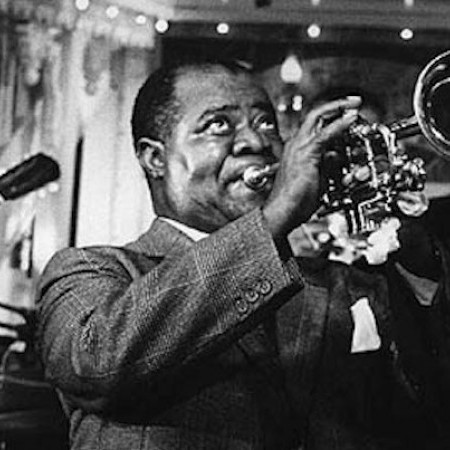
Louis Armstrong was elected into the DownBeat Hall of Fame via the 1952 Readers Poll.
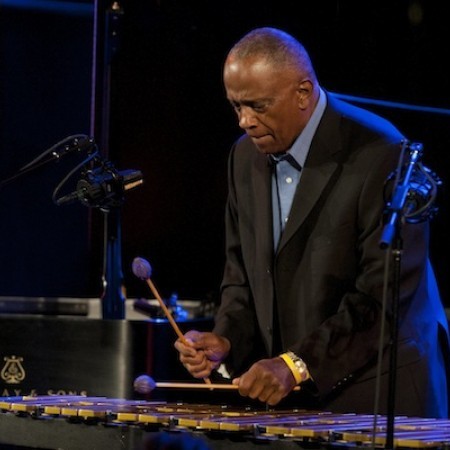
Bobby Hutcherson (1941–2016) performs at Jazz at Lincoln Center in 2008.
(Photo: Frank Stewart)Even though the Mitchell-Grey band disintegrated, Hutcherson contributed to recording dates by both musicians as well as took on moonlighting gigs as a taxi driver to make his rent. As he began branching out more on his own, he soon faced the New York scene full on. He linked up again with Lewis, who was playing with trumpeter Art Farmer and saxophonist Benny Golson in the Jazztet, alongside Grachan Moncur III on trombone. Lewis was hosting jam sessions at his pad and Moncur, after hearing Hutch play, said that it would be good for him to meet saxophonist Jackie McLean, whose band he was also playing in.
“Jackie liked what I was doing with four mallets, so he asked me to play with him at the Club Coronet, where he was introducing a young drummer from Boston,” says Hutcherson, who doesn’t feel that he needs to identify Tony Williams (who was 17 at the time). “Jackie called Alfred Lion at Blue Note to see the band. Lion wanted to record the group, so we all went off to Rudy Van Gelder’s [studio].”
The 1963 album was McLean’s classic One Step Beyond. Hutcherson continued playing with an assortment of Blue Note artists, including Moncur, Andrew Hill, Grant Green and L.A. pal Eric Dolphy. “Eric had heard about this new young band Jackie had put together for the Coronet date,” Hutcherson says. “He came in and was surprised to see me. He told me that he wanted me to do some gigs. Eric had a thing. He played two octaves, playing the chords from the first octave followed by chords from the second. He opened up these amazing possibilities.”
Case in point: Dolphy’s sole Blue Note album, the 1964 gem Out To Lunch, where Hutch displayed the avant-garde modus operandi to expect the unexpected, collaborating with Williams, trumpeter Freddie Hubbard and bassist Richard Davis. Offering unpredictable floating accents and sly drop-ins, Hutcherson shines throughout, including the Dolphy-penned track “Hat And Beard” (inspired by Thelonious Monk) where the vibraphonist contributed plunks, splashes and shimmers that have a prankster vibe.
“I began hearing all these other ways of playing,” Hutcherson says. “That was wonderful for me to be living in New York and to be a part of the jazz renaissance of that time.” Early in his Blue Note stint (which continued until 1977), Lion gave him carte blanche to record his own albums as a leader. “He told me, ‘Listen, you make all the albums you want. Just call me and you can record.’ So that’s what I was doing every couple of months.”
This estimation confirmed what others in the jazz world had already realized: Hutcherson was an adventurous improviser who wasn’t afraid to barrel through the barriers of the dominant hard-bop jazz world.
Hutcherson’s Blue Note debut, The Kicker, was recorded at the end of 1963 but mysteriously shelved until 1999. Other sessions met with the same stockpile treatment, including Spiral, recorded in 1968, and Medina, recorded in 1969, which were released on CD in 1998 as a double album. But several of his outings managed to see the light of day in the ’60s, including his first album to be released, 1965’s Dialogue (made during the time that he was playing with Archie Shepp). His 1966 masterpiece Stick Up! was his first date with McCoy Tyner and featured his collaboration with Joe Henderson.
But Hutcherson’s New York experience came to an abrupt close in 1967 while he was recording a date with Hill. At the rehearsal he and drummer Joe Chambers took a break and scored a couple of joints to kick back in Central Park. They were busted by the police and thrown into jail. Musician friends at the club Slugs’ passed the hat to post bail for him. But Hutcherson lost not only his cabaret card (the guarantee to perform anywhere in New York that was abolished not long after) but also his taxi driver’s license. So, he moved back to Southern California, where he joined up with hard-bop tenor saxophonist Harold Land and began their long-running creative union, starting with Land’s 1968 quintet record The Peace-Maker (Cadet).
With the cabaret card no longer needed in New York, Lion called Hutcherson to continue his recordings — this time as a collaboration with Land. The underappreciated band recorded seven albums for Blue Note, beginning with 1968’s Total Eclipse (with Chick Corea on piano) and continuing through 1975’s Inner Glow. The former proved to be a marquee outing for the group, where hard-bop entered into the exploratory zone. The album dips in and out of Hutcherson’s daredevil sensibility, with inventive vibe romps and pure elation. The trippy finale, “Pompeian,” is a questing voyage with a whimsical open and close and a complex middle section that is avant-leaning and charged as Hutcherson paints dark colors on the marimbas.
“I had been doing a lot of writing then,” he says. “I was experimenting with moving intervals in my playing, doing seconds and thirds to fourths and fifths. It was creating a different sound instead of typical jazz lines. The intervals were opened up. The idea was to try to make it sound simple even though it was music that was hard to figure out. Harold started playing the intervals, too, so that we could bounce off each other. Actually, I got a lot of my ideas from Joe Chambers, who was always trying to change the recipe. ‘Pompeian’ is full of the intervals playing — which actually reflected the scene that was going on in San Francisco at the time.”
In addition to Corea, other pianists joined the Hutcherson-Land band, including Joe Sample and Stanley Cowell. “Joe Chambers hipped me to Stanley,” Hutcherson says. “He was a guy with a direction. He had great ideas and he showed me a lot about beats — playing on top of the beat or in the beat or behind the beat. He would create a whiplash situation, like a weather system that comes in and creates a pow. And then it circles around and boom! It’s almost like a punch line. It’s the kick like the tail end of a cup of coffee.”
Currently chairman of the jazz program and professor of jazz piano at Rutgers University, Cowell began his New York experience in the ’60s with Max Roach. Then he was called by Miles Davis, but quit after playing two gigs with him in Montreal and Boston. The situation was too controlled for him, so he worked with Charles Tolliver and then Stan Getz, connecting often with Chambers, who brought him into the Hutcherson-Land fold.
“Bobby was one of the most relaxed people,” Cowell says. “He was a wonderful player, but he did it in a relaxed way. When we were touring, he never rushed to the airport. We’d all be panicked that we were going to be too late, but he just relaxed and took his time — and we never missed a flight. Behind his back, we called him California Dreamer.”
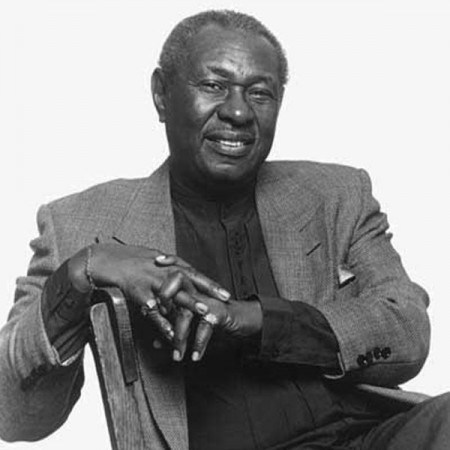
Freddy Cole (1931–2020)
(Photo: DownBeat Archive)“Here’s one,” he says. “‘Love Nest.’ You can swing it, too.” And he proceeds to do it, barely glancing at the words on the page as he does. But then he grew up with it as the theme song of George Burns and Gracie Allen. “Here’s another, ‘Give My Regards To Broadway,’ ‘If I Could Be With You,’ ‘After You’ve Gone,’ ‘Along Came Bill.’ This is a good book. Wow.”
He puts it aside for a moment and reflects on what he looks for in the music he performs and listens to. “I like to preach the theory of ‘What’s Wrong With The Melody?’” he says. “I tell students this all the time. I can tell them about phrasing and other nuances of performance, but unless they hear it they can’t know. I can tell them to listen to Gene Ammons or Johnny Hodges. Everyone wants to play like John Coltrane, but they can’t play a melody in a convincing way. John Coltrane could play a melody. John Coltrane knew the whole thing inside out before he got to do what he did. Students have to go listen to these other things. The trouble is, they want to start where Coltrane ended. But they don’t realize that Coltrane came from the melody. That’s true of all the great instrumentalists—Louis Armstrong, Miles Davis, Dizzy—they knew the song. The root to artistry is through the melody. Why do you think a composer spends all the time writing the song a certain way if he didn’t want it played that way?”
This is all very easy for Cole to say, of course, because he grew up with melodies in the air. They are second nature for him. He was born Lionel Fredrick Cole in Chicago on Oct. 15, 1931, the fifth of five children, three of them brothers. The oldest, as all the world knows, was Nat Cole, born 14 years earlier in 1917. (Freddy’s brother Ike, also a much admired singer-pianist, died in Sun Lake, Ariz., on April 22.)
His earliest memories are of the Cole Chicago home at 41st and Prairie, the piano that everyone learned to play, and Felson school around the corner, where he attended grammar school. Neither the home nor the school is still standing, and he rarely goes back to the old neighborhood during his frequent visits to Chicago. Around 4th grade, he says, the family moved 40 miles north to Waukegan, where he would spend his adolescence. As the post-war world was taking shape in 1946–’47, he became a star football player while about the same time his brother Nat was becoming a major star in popular music, with breakthrough hits such as “The Christmas Song” and “Nature Boy.”
“I was 16 in 1947,” Cole says, “and I can’t say I didn’t receive some accolades about having a famous brother. But most of my friends knew me as a good football and basketball player and being on the neighborhood teams. That Nat was getting famous really didn’t matter one iota. I saw my future in football. That was what I wanted to do. I was All-State football and basketball and had about 19 sports scholarships. Nat would come home and be real excited about my sports reputation.”
Had a sports career worked out, Cole’s life might have been very different. The color barriers in pro football were beginning to fall. Cole’s favorite team was the Cleveland Browns, which had Marion Motley and Otto Graham, whose father was Cole’s band teacher when he was in school in Waukegan. But it didn’t work out the way he expected.
“I never attended any university that had a football program,” he says. “I never got that far. I got a serious hand injury. The fingers on my left hand got hurt in some play, and the bone got infected. I was in the hospital a year and 11 months after my senior year in high school. That was it for me.
“But I could still play the piano. I’d played since I was 4 or 5 years old. And that was what amazed the doctors. I couldn’t even make a fist with the injured hand, but I had enough movement to play the piano. The diagnosis was tuberculosis arthritis, and I had several operations. But I never considered it a handicap.”
One reason Cole’s limitation never frustrated him was that, like his brother at that point, the piano functioned in equal partnership with his singing. He only had to take it so far. By age 15 he was playing his first small professional jobs around Waukegan and Chicago about the same time his brother was becoming a national figure. After his football injury, he turned totally to music, studied at Roosevelt University in Chicago and The Juilliard School in New York, and finally earned a master’s degree from the New England Conservatory of Music in 1956. Precisely when did his piano technique reach the point where it did what he needed it to do?
“Actually, that’s hard to say,” he muses. “You go along for so long and I’ve done so many facets in the business. I guess you wake up one day, and it’s like what Tiger Woods said recently. He was out on the driving range one day practicing. And all of the sudden he picked up his cell phone and called his coach to say, ‘I got it.’ A similar feeling came over me, but I don’t know exactly when. It was when I began to feel very comfortable with my peers and when the total acceptance was here from some of the name people in New York. People like Hank Jones or Tommy Flanagan would come to see me.”
Cole emphasizes that technique is very much wrapped up in one’s self-confidence. “Technically I know I can’t approach any of those pianists,” he goes on. “But what I can do is what I do best, and I know how to present it right.”
Not that he didn’t try, of course. In his teens Teddy Wilson still ruled over the stately basics of swing piano. Cole even studied with him briefly at Juilliard. Roland Hanna was another model.
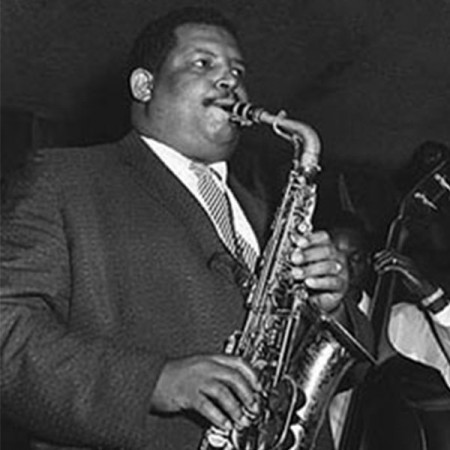
Cannonball Adderley
(Photo: DownBeat Archives)DeM: This kind of gets into another question I’ve been thinking about: Why did you go into jazz?
Nat: Wait a minute, I wanted to say that this theory doesn’t hold true because I don’t know everybody’s background. I know that Victor surely didn’t have to walk through the juke-joint section of London, and if he did, I doubt if they were playing Muddy Waters. This doesn’t mean a racial thing; it’s environmental. But even that theory doesn’t always work out. But this is what I believe.
Sam: My family background was the same. My father played piano, drums. An aunt played organ in church. There was always instruments around the house—guitar, piano. I played the guitar in church when I was a kid. We always had a stack of records, Lunceford, Basie, and a phonograph. They called it Graphaphone then. You’d wind that fella up. … So I always heard music, and liked it.
In the school I got a chance to get into the band. That was it for me. I played bass drum in the marching band.
I just came up liking music and liking jazz. I was never too fond of that real … that gutbucket music too much. ’Cause in those days when Sam Donahue … in the days when they used to have the Coca-Cola hour, my parents used to put me to bed. But I had a little radio by my bed, and I used to sneak and turn that fella on and listen to the Coca-Cola hour. They used to have Andy Kirk one night, then different big bands used to come on … Cab Calloway. That’s how I got into jazz.
Louis: I’m a little younger than Sam. I started when jazz … I really started listening to Charlie Parker and Lester Young. They were already into their thing. That’s when I started listening, more or less. Always heard blues. You can’t get around that no way. Going to school, dancing. Naturally, you go through an age, 14 or 15, when you go through that. During that time I was going through it, I was still listening to jazz.
The fellows I was playing with were playing jazz. Sometimes the gig you had, you’d have to play a few blues tunes in order to hold the job. But everybody preferred jazz, so I knew what I wanted to play.
DeM: Cannon, was your experience the same as Nat’s?
Cannonball Adderley: I started listening a lot longer before he did. There was even more to it than that. In fact, some things Nat didn’t remember. When we hardly knew how to read, we knew how to sing. We would sing for company and all like that. Pop would go get us just as proudly, “Come on, boys! Sing WPA!” So you know how long that’s been.
DeM: The Mills Brothers.
Cannon: That’s right. I had a scrapbook with the Mills Brothers in it. I had their autographs because they visited our town when I was … You don’t remember, do you, Nat? See, that’s what I’m talking about. It’s been that long. Well, I had their autographs and some girl’s who won a Maj. Bowles amateur contest—Mary Perry, Diamond Tooth Mary Perry.
And like that church thing … We were Episcopalians, but we’d go down on the corner on Sunday night and listen to them get into it. Tabernacle Baptist Church. Sunday night after church they’d have a fish fry. We’d go down there to get some of that fish. They’d be inside poppin’—Hey! Jumb! Hey! Jumb! Be swinging. And we’d dig it. We’d be outside dancing and carrying on. We’d consider it sacrilegious.
DeM: Victor? That leaves you. Since you’re from a different country, a slightly different culture …
Vic: I was fortunate, because my brothers were musical. I had three brothers, and the youngest of the three is still nine years older than me. So when I was around 6, they were already playing, getting together rehearsal bands. They’re called semiprofessionals in England. They’d have rehearsals at the house every weekend.
I’d like to say right here that Nat, Cannon, Sam, Louis, their general environment outside the home, too, led to the buildup of the jazz feeling. While naturally in England, outside the house, there was nothing. In fact, jazz was like a dirty word, practically. My mother, it was just a drag for her to have this “noise” every weekend, but my father was musical. He never played when I was old enough to realize that someone was playing an instrument, but he did play when I was a baby. He used to play cello.
Anyway, my three brothers used to have rehearsals, and I would hear them every weekend. Finally, after a few months of that, I wanted a set of drums for my birthday. My father bought me for my birthday. My father bought me one of those—what do you call them? Woolworth’s? Two cents … ?
Nat: Five-and-dime.
Vic: He bought me one of those sets of traps. You know, with the snare drum on the bass drum and those little cymbals. I used to practice on this thing. My brother would be playing when they weren’t rehearsing. One brother played and piano and accordion; another played trumpet. After I practiced a few months, they were having a rehearsal … this is getting away a little bit, but it’s just to illustrate how much environment can do something to a person … and the drummer couldn’t figure out the introduction. My brother was going mad trying to explain it. So my brother said, “Come, Victor, you show him how to do this,” I could hear how it went; I could hear what he was supposed to be doing. But at this age, I didn’t want t embarrass the guy. For if he saw a 6-year-old kid showing a 24-year-old guy how to play something, it would be a drag, so I wouldn’t do it. The following week when they rehearsed and he still couldn’t do it, my brother insisted. So I got up and played it right, I suppose.





